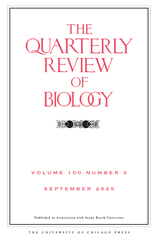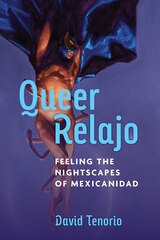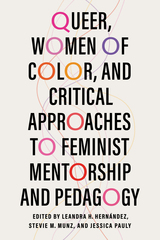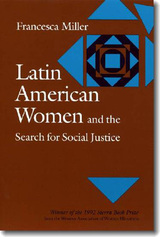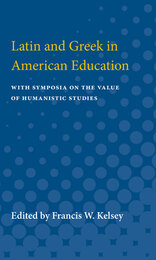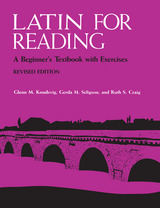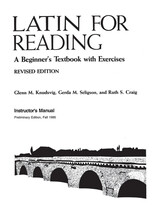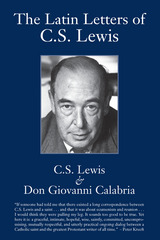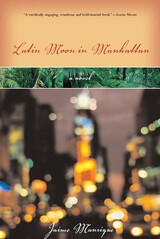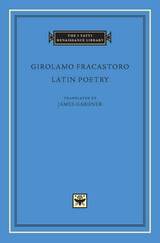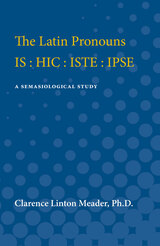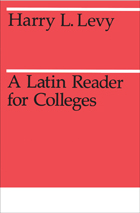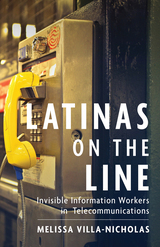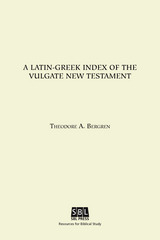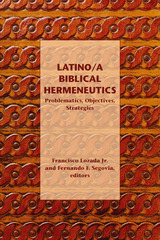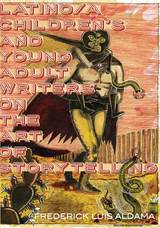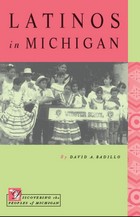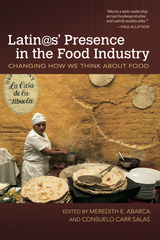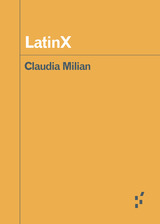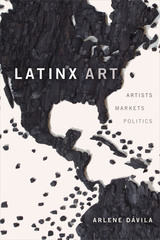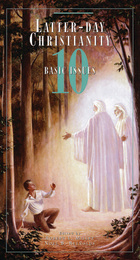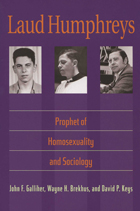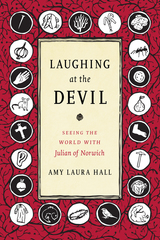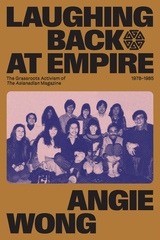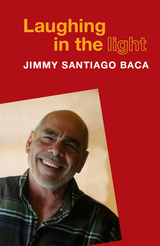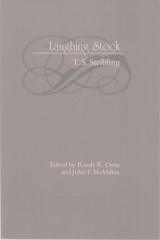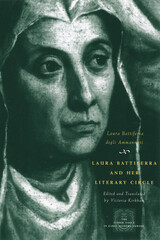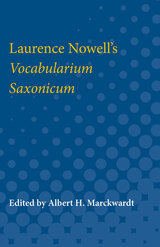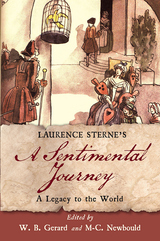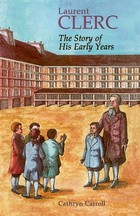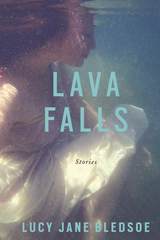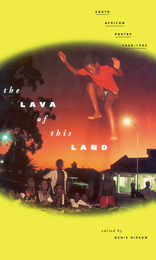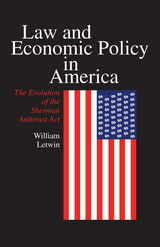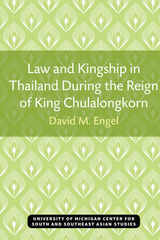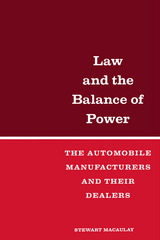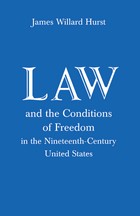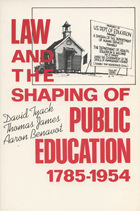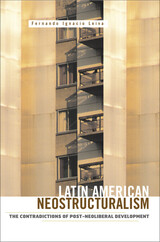 Latin American Neostructuralism: The Contradictions of Post-Neoliberal Development
Fernando Ignacio Leiva
University of Minnesota Press, 2008 Interrogates this ascending political and economic paradigm This landmark work is the first sustained critique of Latin American neostructuralism, the prevailing narrative that has sought to replace “market fundamentalism” and humanize the “savage capitalism” imposed by neoliberal dogmatism. Fernando Leiva analyzes neostructuralism and questions its credibility as the answer to the region’s economic, political, and social woes. Recent electoral victories by progressive governments in Latin America promising economic growth, social equity, and political democracy raise a number of urgent questions, including: What are the key strengths and weaknesses of the emerging paradigm? What kinds of transformations can this movement enact? Leiva addresses these issues and argues that the power relations embedded in local institutions, culture, and populations must be recognized when building alternatives to the present order. Considering the governments in countries such as Chile, Argentina, and Brazil, Leiva examines neostructuralism’s impact on global politics and challenges whether this paradigm constitutes a genuine alternative to neoliberalism or is, rather, a more sophisticated form of consolidating existing systems.
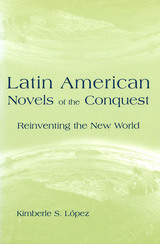 Latin American Novels of the Conquest: Reinventing the New World
Kimberle S. López
University of Missouri Press, 2002
As the quincentenary of Columbus’s first voyage was approaching, Latin American authors vied to finish novels rewriting the conquest in order to have them published in the years surrounding 1992. Surprisingly, few of these novels attempted to reconstruct the indigenous perspective on this historical moment, focusing instead on representing the European conquerors. In Latin American Novels of the Conquest, Kimberle López focuses on five of these works: Juan José Saer’s El entenado; Herminio Martínez’s Diario maldito de Nuño de Guzmán; Abel Posse’s El largo atardecer del caminante; and Homero Aridjis’s 1492: Vida y tiempos de Juan Cabezón de Castilla and Memorias del Nuevo Mundo. She utilizes these books to explore how their authors represented the conquest from the fictionalized perspective of the conquistador, ultimately deconstructing the rhetoric of empire through the representation of a simultaneous fascination and aversion between the colonizer and colonized.
The fictionalized explorers and conquistadors represented in this corpus all identify with certain aspects of Amerindian culture—significantly, those elements that are most distinct from European culture, such as cannibalism and human sacrifice—but also feel the need to distance themselves from these “others” in order to protect their own European cultural identity. In most cases, the conquistadors themselves are represented as outsiders within the enterprise of imperialism, due to ethnic, religious, or sexual differences from the norm. This representation turns the gaze inward toward the “other” within European culture, underscoring the complex origins of Latin American cultures in the violent encounter between the Amerindians and the conquistadors.
By examining these issues, Lopéz’s Latin American Novels of the Conquest illuminates the ways in which Latin American novelists used their literary imaginations to embody their ambivalence regarding their own transcultural heritage as children of both the colonized and the colonizer.
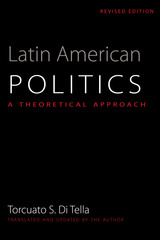 Latin American Politics: A Theoretical Approach
By Torcuato S. Di Tella
University of Texas Press, 2001 First published in English in 1990 as Latin American Politics: A Theoretical Framework, a translation of Torcuato S. Di Tella's original Sociología de los procesos políticos, this new edition also focuses on the prerequisites for democracy in any society and on the role of the popular classes in social change. Di Tella draws on the work of Montesquieu, Burke, Tocqueville, Marx, Weber, and Durkheim in formulating his explanatory theories. These theories are then tested against crucial events in Latin American history—from the rebellions of the eighteenth century to the caudillos of the nineteenth century and the militarism of the twentieth century. This edition is more attuned to an English-speaking audience, with a new chapter addressing the historical process in Argentina from the 1930s to 2000. Latin American Politics is written in a style easily accessible to the general reader or student, while its emphasis on the growth of democracy in Latin America makes it particularly timely.
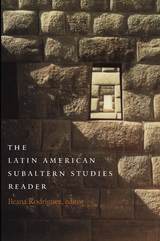 The Latin American Subaltern Studies Reader
Ileana Rodríguez, ed.
Duke University Press, 2001 Sharing a postrevolutionary sympathy with the struggles of the poor, the contributors to this first comprehensive collection of writing on subalternity in Latin America work to actively link politics, culture, and literature. Emerging from a decade of work and debates generated by a collective known as the Latin American Studies Group, the volume privileges the category of the subaltern over that of class, as contributors focus on the possibilities of investigating history from below. In addition to an overview by Ranajit Guha, essay topics include nineteenth-century hygiene in Latin American countries, Rigoberta Menchú after the Nobel, commentaries on Haitian and Argentinian issues, the relationship between gender and race in Bolivia, and ungovernability and tragedy in Peru. Providing a radical critique of elite culture and of liberal, bourgeois, and modern epistemologies and projects, the essays included here prove that Latin American Subaltern Studies is much more than the mere translation of subaltern studies from South Asia to Latin America. Contributors. Marcelo Bergman, John Beverley, Robert Carr, Sara Castro-Klarén, Michael Clark, Beatriz González Stephan, Ranajit Guha, María Milagros López , Walter Mignolo, Alberto Moreiras, Abdul-Karim Mustapha, José Rabasa, Ileana Rodríguez, Josefina Saldaña-Portillo, Javier Sanjinés, C. Patricia Seed, Doris Sommer, Marcia Stephenson, Mónica Szurmuk, Gareth Williams, Marc Zimmerman
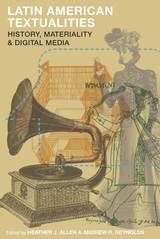 Latin American Textualities: History, Materiality, and Digital Media
Edited by Heather J. Allen and Andrew R. Reynolds
University of Arizona Press, 2018 Textuality is the condition in which a text is created, edited, archived, published, disseminated, and consumed. “Texts,” therefore, encompass a broad variety of artifacts: traditional printed matter such as grammar books and newspaper articles; phonographs; graphic novels; ephemera such as fashion illustrations, catalogs, and postcards; and even virtual databases and cataloging systems.\
Latin American Textualities is a wide-ranging, interdisciplinary look at textual history, textual artifacts, and digital textualities across Latin America from the colonial era to the present. Editors Heather J. Allen and Andrew R. Reynolds gather a wide range of scholars to investigate the region’s textual scholarship. Contributors offer engaging examples of not just artifacts but also the contexts in which the texts are used. Topics include Guamán Poma’s library, the effect of sound recordings on writing in Argentina, Sudamericana Publishing House’s contribution to the Latin American literary boom, and Argentine science fiction. Latin American Textualities provides new paths to reading Latin American history, culture, and literatures.
Contributors:
Heather J. Allen
Catalina Andrango-Walker
Sam Carter
Sara Castro-Klarén
Edward King
Rebecca Kosick
Silvia Kurlat Ares
Walther Maradiegue
Clayton McCarl
José Enrique Navarro
Andrew R. Reynolds
George Antony Thomas
Zac Zimmer
Latin American University Students: A Six Nation Study
Arthur Liebman, Kenneth F. Walker, and Myron Glazer
Harvard University Press, 1972 Why does the interaction between young people and the university produce a number of Latin American students opposed to their governments and to the existing social structure? The authors of this study of student political attitudes and behavior explored this question with students in Colombia, Mexico, Panama, Paraguay, Puerto Rico, and Uruguay.
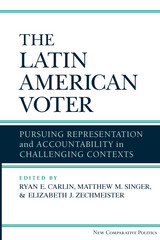 The Latin American Voter: Pursuing Representation and Accountability in Challenging Contexts
Ryan E. Carlin, Matthew M. Singer, and Elizabeth J. Zechmeister
University of Michigan Press, 2015 In this volume, experts on Latin American public opinion and political behavior employ region-wide public opinion studies, elite surveys, experiments, and advanced statistical methods to reach several key conclusions about voting behavior in the region’s emerging democracies. In Latin America, to varying degrees the average voter grounds his or her decision in factors identified in classic models of voter choice. Individuals are motivated to go to the polls and select elected officials on the basis of class, religion, gender, ethnicity and other demographic factors; substantive political connections including partisanship, left-right stances, and policy preferences; and politician performance in areas like the economy, corruption, and crime. Yet evidence from Latin America shows that the determinants of voter choice cannot be properly understood without reference to context—the substance (specific cleavages, campaigns, performance) and the structure (fragmentation and polarization) that characterize the political environment. Voting behavior reflects the relative youth and fluidity of the region’s party systems, as parties emerge and splinter to a far greater degree than in long-standing party systems. Consequently, explanations of voter choice centered around country differences stand on equal footing to explanations focused on individual-level factors.
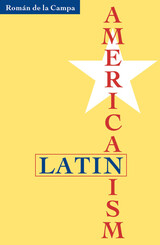 Latin Americanism
Roman De La Campa
University of Minnesota Press, 1999 Analyzes the way North American academics have constructed Latin America. In this timely book, Román de la Campa asks to what degree the Latin America studied in U.S. academies is actually an entity “made in the U.S.A.” He argues that there is an ever-increasing gap between the political, theoretical, and financial pressures affecting the U.S. academy and Latin America’s own cultural, political, and literary practices, and considers what this new Latin Americanism has to say about the claims of poststructuralism, postmodern theory, and deconstruction. De la Campa focuses on the conduct of Latin American literary criticism in U.S. universities and compares this with the “Latin Americanism” of Latin America itself. He examines the translation of Latin American works into English, the careerism of U.S. intellectuals, the conduct of Latin American literary criticism in English, and the diaspora of Third World intellectuals. In a reconsideration of the vogue in Latin American literature and magical realism in light of new work by theorists residing in Latin America, he contrasts this work with critiques of Latin American discourses in the United States.A critique of postmodern and postcolonial constructions as articulated differently in the United States and Latin America, this hard-hitting but fair-minded book provides a postdeconstructive perspective on culture and literature. ISBN 0-8166-3116-6 Cloth £00.00 $47.95xxISBN 0-8166-3117-4 Paper £00.00 $18.95x224 Pages 5 7/8 x 9 JuneCultural Studies of the Americas Series, volume 3Translation inquiries: University of Minnesota Press
 Latin America’s Cold War
Hal Brands
Harvard University Press, 2012 For Latin America, the Cold War was anything but cold. Nor was it the so-called “long peace” afforded the world’s superpowers by their nuclear standoff. In this book, the first to take an international perspective on the postwar decades in the region, Hal Brands sets out to explain what exactly happened in Latin America during the Cold War, and why it was so traumatic.
Tracing the tumultuous course of regional affairs from the late 1940s through the early 1990s, Latin America’s Cold War delves into the myriad crises and turning points of the period—the Cuban revolution and its aftermath; the recurring cycles of insurgency and counter-insurgency; the emergence of currents like the National Security Doctrine, liberation theology, and dependency theory; the rise and demise of a hemispheric diplomatic challenge to U.S. hegemony in the 1970s; the conflagration that engulfed Central America from the Nicaraguan revolution onward; and the democratic and economic reforms of the 1980s.
Most important, the book chronicles these events in a way that is both multinational and multilayered, weaving the experiences of a diverse cast of characters into an understanding of how global, regional, and local influences interacted to shape Cold War crises in Latin America. Ultimately, Brands exposes Latin America’s Cold War as not a single conflict, but rather a series of overlapping political, social, geostrategic, and ideological struggles whose repercussions can be felt to this day.
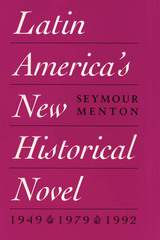 Latin America's New Historical Novel
By Seymour Menton
University of Texas Press, 1993 Beginning with the 1979 publication of Alejo Carpentier's El arpa y la sombra, the New Historical Novel has become the dominant genre within Latin American fiction. In this at-times tongue-in-cheek postmodern study, Seymour Menton explores why the New Historical Novel has achieved such popularity and offers discerning readings of numerous works. Menton argues persuasively that the proximity of the Columbus Quincentennial triggered the rise of the New Historical Novel. After defining the historical novel in general, he identifies the distinguishing features of the New Historical Novel. Individual chapters delve deeply into such major works as Mario Vargas Llosa's La guerra del fin del mundo, Abel Posse's Los perros del paraíso, Gabriel García Márquez's El general en su laberinto, and Carlos Fuentes' La campaña. A chapter on the Jewish Latin American novel focuses on several works that deserve greater recognition, such as Pedro Orgambide's Aventuras de Edmund Ziller en tierras del Nuevo Mundo, Moacyr Scliar's A estranha nação de Rafael Mendes, and Angelina Muñiz's Tierra adentro.
Latin and Greek in American Education: With Symposia on the Value of Humanistic Studies
Edited by Francis W. Kelsey
University of Michigan Press, 1911 Latin and Greek in American Education is a volume of papers stemming from the Michigan Classical Conference’s examination of the methods and strategies for teaching Latin and Greek and their relation to public life, and the relationship between classics and law, theology, politics, and medicine. Included in the volume is “The Case for the Classics” by Paul Shorey.
Latin Classics in Medieval Hungary: Eleventh Century
Elod Nemerkényi
Central European University Press, 2004 The first comprehensive study on the influence of Latin classical texts and traditions in medieval Hungary based on philological and historical analysis of eleventh century sources. The author proves that the Latin classics had a stronger impact on the formation of Latin literacy in medieval Hungary than it has been acknowledges before. The four chapters of the book (The Cathedral School, The Admonitions of King Saint Stephen of Hungary, The Deliberato of Bishop Saint Gerard of Csanad, The Monastic School) provide important contributions to the philological study of Medieval Latin and the classical tradition in medieval Central Europe.
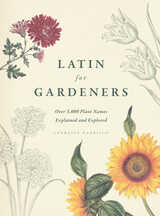 Latin for Gardeners: Over 3,000 Plant Names Explained and Explored
Lorraine Harrison
University of Chicago Press, 2012 Since Latin became the standard language for plant naming in the eighteenth century, it has been intrinsically linked with botany. And while mastery of the classical language may not be a prerequisite for tending perennials, all gardeners stand to benefit from learning a bit of Latin and its conventions in the field. Without it, they might buy a Hellebores foetidus and be unprepared for its fetid smell, or a Potentilla reptans with the expectation that it will stand straight as a sentinel rather than creep along the ground.
An essential addition to the gardener’s library, this colorful, fully illustrated book details the history of naming plants, provides an overview of Latin naming conventions, and offers guidelines for pronunciation. Readers will learn to identify Latin terms that indicate the provenance of a given plant and provide clues to its color, shape, fragrance, taste, behavior, functions, and more. Full of expert instruction and practical guidance, Latin for Gardeners will allow novices and green thumbs alike to better appreciate the seemingly esoteric names behind the plants they work with, and to expertly converse with fellow enthusiasts. Soon they will realize that having a basic understanding of Latin before trips to the nursery or botanic garden is like possessing some knowledge of French before traveling to Paris; it enriches the whole experience.
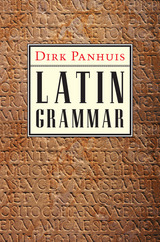 Latin Grammar
Dirk Panhuis
University of Michigan Press, 2006 In Latin Grammar, Dirk Panhuis has created an innovative reference that makes use of many of the advances that have taken place in linguistics during the last half century. Using a syntactic—instead of the traditional morphological—approach to syntax, Panhuis explains linguistic concepts clearly, thoroughly describing the structure of the sentence and its parts. For ease of use, Panhuis often presents the theory in well-organized tables and charts, and provides the reader with illustrative texts by Latin authors.
Back Cover
Through clear structuring of language phenomena, Panhuis provides a reference that integrates traditional linguistic knowledge with linguistic innovation and didactic clarity. This concise reference, ideal for students and instructors of Latin in high schools and colleges, will supplant the out-dated grammars of Allen & Greenough and Hale & Buck. Dirk Panhuis graduated in classical philology at the State University of Ghent, Belgium, in 1963 and obtained his PhD in linguistics at the University of Michigan, Ann Arbor, in 1981. He has been assistant and academic secretary of the Institut Supérieur Pédagogique in Kananga (Democratic Republic of Congo) and a teaching assistant at the University of Michigan. He taught classical languages in high schools of the Flemish Community in and around Louvain (Belgium) until his retirement in 2002. "Panhuis brings a very welcome linguistic orientation to the study of Latin, an approach not found in the older traditional grammars currently used at the college level. Among the features likely to prove most helpful for students is the presentation of information in clear and easily readable charts and grids, and the explanations accompanying the English translations, allowing students to see clearly how to render a Latin structure into English both literally and idiomatically." Back Cover continued —Deborah Ross, Department of Classical Studies, University of Michigan "This innovative grammar incorporates current viewpoints of syntax and semantics, making it a unique tool, especially for the study of sentence structure."—Philip Baldi, Professor of Linguistics and Classics, Pennsylvania State University "In his Latin Grammar, Panhuis artfully integrates traditional description and modern analysis. It will provide intermediate and advancing Latin students mature help in understanding Latin syntax and offers material on the dynamics of text which is unique for an introductory reference tool. Not to be overlooked is its value as a resource to those who teach Latin." —Charles Elerick, Professor of Languages and Linguistics, The University of Texas at El Paso
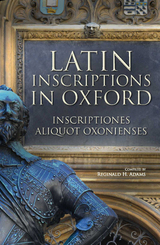 Latin Inscriptions in Oxford
Compiled with Translations by Reginald H. Adams
Bodleian Library Publishing, 2015 For six centuries following its foundation, Latin was the main language written and spoken at the University of Oxford. Today, one can still find Latin inscriptions carved into many of its monuments, as well those of the city, dating from the medieval period to the present day. But few of us can discern what all of these inscriptions mean.
For Latin Inscriptions in Oxford, Reginald H. Adams, a former scholar at St. John’s College, University of Oxford, has translated a selection of Latin inscriptions. Among them, he finds a great many tributes and memorials—to Queen Anne, Cardinal Wolsey, and T. E. Lawrence, but also to Irene Frude, a “most kindly landlady” on Little Clarendon who “provided each day for almost thirty-five years enormous breakfasts.” Some of the inscriptions offer concise commentary—“Without experiment, it is not possible to know anything adequately.” While others are instructive like the Rhodes House’s warning, “Let no one who is smoke-bearing enter here.”
Evocative mementoes of the past, the inscriptions collected by Adams bring insight to the vivid history of Oxford, the city and the university.
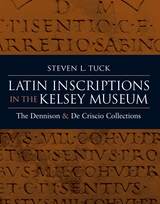 Latin Inscriptions in the Kelsey Museum: The Dennison and De Criscio Collections
Steven L. Tuck
University of Michigan Press, 2006 The Latin inscriptions in the Kelsey Museum are among the best primary sources we have for documenting the lives of the lower classes in the Roman world. They provide unique evidence of the details of Roman daily life, including beliefs, occupations, families, and attitudes toward death.
The 400 entries in this volume include all of the Latin inscriptions on stone or metal in the Kelsey Museum of Archaeology at the University of Michigan; they represent the largest, and arguably the most important, collection of Latin inscriptions in the Western Hemisphere. The collection is notable not just for its size but for the fact that almost all the inscriptions were acquired by purchase for their scholarly and educational value to the members of the university community. Because of this, the collection is also an important testimony to a seminal phase in the development of the study of Classics at the University of Michigan. For the first time ever, this project makes the Latin inscriptions of the Kelsey available in one volume and has provided an opportunity to reexamine some texts that have not been edited in over a century. The commentaries for this edition have benefited from a wealth of recent scholarship resulting in some amended readings and reidentification of texts.
Steven L. Tuck is Assistant Professor of Classics at Miami University of Ohio.
The Kelsey Museum Studies series, edited by University of Michigan professors Elaine Gazda, Margaret Cool Root, and John Pedley, is designed to publish unusual material in the Museum's collections, together with reports of current and past archaeological expeditions sponsored by the University of Michigan.
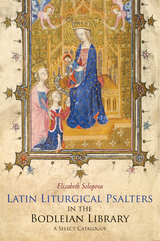 Latin Liturgical Psalters in the Bodleian Library: A Select Catalogue
Elizabeth Solopova
Bodleian Library Publishing, 2013 Liturgical psalters are among the most important—and beautifully illustrated— of medieval Christian books. In their simplest form, psalters included 150 psalms, preceded by a calendar and followed by canticles, or biblical texts, meant to be sung at church services. Though this core content remained relatively unchanged throughout the Middle Ages and across countries, psalters show considerable variation in size, style of presentation, and choice of supplementary texts.
Latin Liturgical Psalters in the Bodleian Library describes more than one hundred psalters from Britain, France, the Netherlands, Germany, Austria, Italy, and Spain, ranging from the ninth to the sixteenth century and reflecting a wide range of requirements and interests. Each entry includes a description of the psalter’s contents, physical makeup, and provenance, alongside full-color images of pages, a bibliography, and tables to assist in the study of illumination and the liturgical use of psalms.
Bringing together important information on a stunning selection of little-known manuscripts held by the Bodleian Library, this volume will prove a valuable resource.
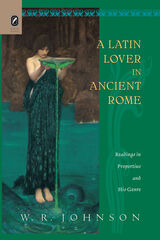 A Latin Lover in Ancient Rome: Readings in Propertius and His Genre
W. R. Johnson
Ohio State University Press, 2009 Over the centuries, Latin love elegy has inspired love poetry in the West from Petrarch to Pound. A Latin Lover in Ancient Rome: Readings in Propertius and His Genre offers a critical reevaluation of the Latin elegiac poet Propertius, situating him within the social and political milieu of first-century BCE Rome. W. R. Johnson’s study is centered on close readings of the poems in Propertius’ four books that emphasize both his celebration of erotic freedom as a manifestation of the sovereignty of the individual and his insistence on the value of this freedom, especially when it is threatened by autocratic ideology. Many recent titles on Propertius have tended to minimize or ignore this aspect of the poet’s work, concentrating instead on neo-formalism or Lacanian psychology. Johnson restores Propertius’ erotic creed and his politics to the core of his poetics and his career. He offers a vivid picture of the sociopolitical and erotic world of the late Roman Republic and the early years of the Empire which hatched Latin love elegy and allowed it to flourish. This study aims to redirect attention to the pleasures and energies Propertius provides that later generations of poets and readers discovered in and through him.
Latin Moon in Manhattan: A Novel
Jaime Manrique
University of Wisconsin Press, 2003 Exuberant and colorful, Latin Moon in Manhattan paints a vivid portrait of New York City as the land of El Dorado for today’s Latino immigrants. From Little Colombia in Queens to the street life of Times Square, this brilliant novel is crowded with an extraordinary cast of characters: Hot Sauce, a midget hooker; Simon Bolivar, a parrot who croons Julio Iglesias songs; the Urrutias, a family rich from cocaine smuggling; Santiago Martinez, a loner and would-be poet whose ancient cat, Mr. O’Donnell, is slowly dying of an enlarged heart. Exploding with a profusion of plots and subplots involving drug smuggling, romance, and the literary politics of Queens, Latin Moon in Manhattan is a rich and utterly charming work.
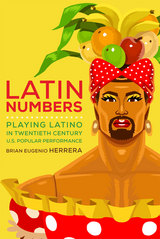 Latin Numbers: Playing Latino in Twentieth-Century U.S. Popular Performance
Brian Eugenio Herrera
University of Michigan Press, 2015 Latin Numbers is a work of performance history, examining the way in which Latino actors on the twentieth-century stage and screen communicated and influenced American ideas about race and ethnicity. Brian Eugenio Herrera looks at how these performances and performers contributed to American popular understanding of Latinos as a distinct racial and ethnic group. His book tracks the conspicuously “Latin” musical number; the casting of Latino actors; the history of West Side Story; how Latina/o performers confront stereotypes; and the proliferation of the gay Latino character in the AIDS era. With a flair for storytelling and a unique ability to see the deeper meanings embedded in popular culture, Herrera creates a history that will appeal to popular culture enthusiasts, theater aficionados, and those interested in the cultural history of Latinos. The book will also delight readers interested in the memorable (and many of the lesser-known) Latino performances on stage and screen.
 Latin Pastoral Poetry
Andrea Navagero and Marcantonio Flaminio
Harvard University Press, 2025 A definitive edition of Renaissance pastoral poems by two master poets, including works that inspired Raphael and Shakespeare.
Andrea Navagero (1483–1529) was among the principal poets of the Venetian Renaissance. Famous as the editor of classical texts for Aldus Manutius’s celebrated press, Navagero also pioneered the Renaissance pastoral epigram genre. Modeled on the pastoral collections of Theocritus and Vergil and the poems of the Greek Anthology, Navagero’s lusus pastorales conjure an idealized rural landscape of shepherds and farmers, hunters and lovers, nymphs, springs, sylvan retreats, and the mingling of the human and the divine. The artists Titian and Raphael took inspiration from his evocations of art and nature, and his verse was imitated by Ronsard, Du Bellay, and Shakespeare.
Marcantonio Flaminio (1498–1550), though now better known for his controversially reformist religious writings, began his career as a Latin poet. Greatly influenced by Navagero and by the Neapolitan humanist Jacopo Sannazaro, Flaminio wrote odes, eclogues, epigrams, and elegies. He later abandoned “light” subjects for weightier themes, but his pastoral epigrams remain some of his most beloved poems and were regularly anthologized during the Renaissance by editors keen to show that modern poets could rival, and even surpass, the ancients.
This volume contains the first complete edition and English translation of Navagero’s pastoral poems and is the first to combine them with Flaminio’s poetry alongside authoritative Latin texts.
Latin Poetry
Ludovico Ariosto
Harvard University Press, 2018 Ludovico Ariosto (1474–1533), one of Italy’s greatest poets, was a leading figure of sixteenth-century Italian humanism. After some years working in the household of Cardinal Ippolito d’Este, to whom he dedicated his dazzling romance epic Orlando Furioso (1516), Ariosto settled in Ferrara under the patronage of Ippolito’s brother Alfonso. He continued to write throughout his life, publishing 214 letters, five plays, seven satires in verse, and dozens of lyric poems in Italian and Latin. Ariosto’s Latin poems, translated into English for the first time in this volume, are remarkable for their erudition, technical virtuosity, and playfulness. This edition provides a new Latin text, the first to be based on a collation of the autograph manuscript and editio princeps, and offers a unique insight into the Latin formation of one of the Renaissance’s foremost vernacular writers.
Latin Poetry
Girolamo Fracastoro
Harvard University Press, 2013 One of the great medical authorities of the early sixteenth century, Girolamo Fracastoro (1478–1553) was also a prominent Neo-Latin poet. This volume includes his famous didactic poem Syphilis in three books, which gave the name to the disease and contains the first poetical description of Columbus’s discovery of America. Also included are a short Biblical epic, the Joseph, and the Carmina, a collection of shorter poetry in various metres. This volume presents an updated edition of all the Latin texts, two previously unpublished short poems, and the first complete translation into English of Fracastoro’s Latin poetry.
Latin Poetry
Jacopo Sannazaro
Harvard University Press, 2009 Jacopo Sannazaro (1456–1530), considered by some authorities the finest Neo-Latin poet of the Italian Renaissance, spent most of his career in Naples, where he was a member and ultimately the head of the Accademia Pontaniana. He is most famous for having written, in Italian, the first pastoral romance in European literature, the Arcadia (1504). But after this early work, Sannazaro devoted himself entirely to Latin poetry modeled on his beloved Virgil. In addition to his epic The Virgin Birth (1526), which earned him the title of “the Christian Virgil,” he also composed Piscatory Eclogues, an innovative adaption of the eclogue form, as well as elegies, epigrams, and a number of shorter works.This volume contains the first complete English translation of all of Sannazaro’s poetry in Latin, accompanied by extensive notes.
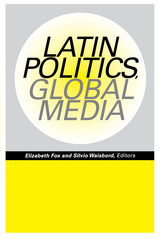 Latin Politics, Global Media
Edited by Elizabeth Fox and Silvio Waisbord
University of Texas Press, 2002 The globalization of media industries that began during the 1980s and 1990s occurred at the same time as the establishment of or return to democratic forms of government in many Latin American countries. In this volume of specially commissioned essays, thirteen well-known media experts examine how the intersection of globalization and democratization has transformed media systems and policies throughout Latin America. Following an extensive overview by editors Elizabeth Fox and Silvio Waisbord, the contributors investigate the interaction of local politics and global media in individual Latin American countries. Some of the issues they discuss include the privatization and liberalization of the media, the rise of media conglomerates, the impact of trade agreements on media industries, the role of the state, the mediazation of politics, the state of public television, and the role of domestic and global forces. The contributors address these topics with a variety of theoretical approaches, combining institutional, historical, economic, and legal perspectives.
A Latin Reader for Colleges
H. L. Levy
University of Chicago Press, 1989 Selections from Aulus Gellius' Attic Nights, The Lives of Nepos, Phaedrus' Fables in verse, and some Caesar are carefully aimed to interest and challenge, but not overtax, the college student who is not yet ready for complicated readings in Latin.
 Latin: Story of a World Language
Jürgen Leonhardt
Harvard University Press, 2013 The mother tongue of the Roman Empire and the lingua franca of the West for centuries after Rome’s fall, Latin survives today primarily in classrooms and texts. Yet this “dead language” is unique in the influence it has exerted across centuries and continents. Jürgen Leonhardt has written a full history of Latin from antiquity to the present, uncovering how this once parochial dialect developed into a vehicle of global communication that remained vital long after its spoken form was supplanted by modern languages.
Latin originated in the Italian region of Latium, around Rome, and became widespread as that city’s imperial might grew. By the first century BCE, Latin was already transitioning from a living vernacular, as writers and grammarians like Cicero and Varro fixed Latin’s status as a “classical” language with a codified rhetoric and rules. As Romance languages spun off from their Latin origins following the empire’s collapse—shedding cases and genders along the way—the ancient language retained its currency as a world language in ways that anticipated English and Spanish, but it ceased to evolve.
Leonhardt charts the vicissitudes of Latin in the post-Roman world: its ninth-century revival under Charlemagne and its flourishing among Renaissance writers who, more than their medieval predecessors, were interested in questions of literary style and expression. Ultimately, the rise of historicism in the eighteenth century turned Latin from a practical tongue to an academic subject. Nevertheless, of all the traces left by the Romans, their language remains the most ubiquitous artifact of a once peerless empire.
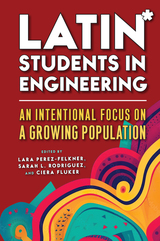 Latin* Students in Engineering: An Intentional Focus on a Growing Population
Lara Perez-Felkner
Rutgers University Press, 2024 Winner of the American Association of Hispanics in Higher Education Edited Volume Book of the Year Award
The growing population of engineering students who identify as Latin* are underrepresented in the field of engineering. Latin* refers to an individual of Latin American origin or descent, without restricting to a specific gender. The asterisk (*) includes related identity terms such as Latina/é/o/u/x.There is, however, a rising need to train U.S. students in engineering skills to meet the demands of our increasingly technological workforce. Structurally excluding Latin* students hinders their economic and educational opportunities in engineering. Latin* Students in Engineering examines the state of Latin* engineering education at present as well as considerations for policy and practice regarding engineering education aimed at enhancing opportunity and better serving Latin* students. The essays in this volume first consider, theoretically and empirically, the experiences of Latin* students in engineering education and then expand beyond the student level to focus on institutional and social structures that challenge Latin* students' success and retention. Finally, it illuminates emergent work and considers future research, policy, and practice.
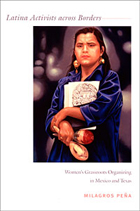 Latina Activists across Borders: Women's Grassroots Organizing in Mexico and Texas
Milagros Peña
Duke University Press, 2007 Over the past twenty-five years, nongovernment organizations (NGOs) run by women and devoted to advancing women’s well-being have proliferated in Mexico and along both sides of the U.S.-Mexico border. In this sociological analysis of grassroots activism, Milagros Peña compares women’s NGOs in two regions—the state of Michoacán in central Mexico and the border region encompassing El Paso, Texas, and Ciudad Juárez, Mexico. In both Michoacán and the border region, women have organized to confront a variety of concerns, including domestic violence, the growing number of single women who are heads of households, and exploitive labor conditions. By comparing women’s activism in two distinct areas, Peña illuminates their different motivations, alliances, and organizational strategies in relation to local conditions and national and international activist networks. Drawing on interviews with the leaders of more than two dozen women’s NGOs in Michoacán and El Paso/Ciudad Juárez, Peña examines the influence of the Roman Catholic Church and liberation theology on Latina activism, and she describes how activist affiliations increasingly cross ethnic, racial, and class lines. Women’s NGOs in Michoacán put an enormous amount of energy into preparations for the 1995 United Nations–sponsored World Conference on Women in Beijing, and they developed extensive activist networks as a result. As Peña demonstrates, activists in El Paso/Ciudad Juárez were less interested in the Beijing conference; they were intensely focused on issues related to immigration and to the murders and disappearances of scores of women in Ciudad Juárez. Ultimately, Peña’s study highlights the consciousness-raising work done by NGOs run by and for Mexican and Mexican American women: they encourage Latinas to connect their personal lives to the broader political, economic, social, and cultural issues affecting them.
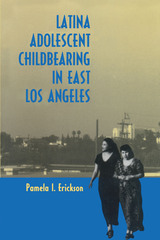 Latina Adolescent Childbearing in East Los Angeles
By Pamela I. Erickson
University of Texas Press, 1998 Preventing teen pregnancy has become a national goal, but a one-size-fits-all strategy for achieving it may never be found. Because varying social and cultural factors lead to pregnancy among different ethnic/class groups, understanding these factors is essential in designing pregnancy prevention programs that work. This book explores the factors that lead to childbearing among Latina adolescents. Pamela Erickson draws on both quantitative data and case histories to trace the pathways to motherhood for Latina teens. After situating her study within current research on teen pregnancy, she looks specifically at teen mothers enrolled in programs at Women's Hospital in East L.A. She describes the teens' relationships to their babies' fathers and their own families and discusses how these relationships affect whether teen mothers want to become pregnant, their use of prenatal, postpartum, and family planning services, and their ability to prevent a repeat pregnancy. Erickson describes culturally appropriate intervention efforts and assesses the limitations of prevention programs in institutional settings such as schools and clinics.
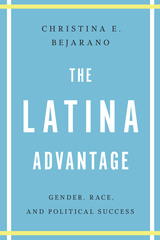 The Latina Advantage: Gender, Race, and Political Success
By Christina E. Bejarano
University of Texas Press, 2013 During the past decade, racial/ethnic minority women have made significant strides in U.S. politics, comprising large portions of their respective minority delegations both in Congress and in state legislatures. This trend has been particularly evident in the growing political presence of Latinas, yet scholars have offered no clear explanations for this electoral phenomenon—until now. In The Latina Advantage, Christina E. Bejarano draws on national public opinion datasets and a close examination of state legislative candidates in Texas and California to demonstrate the new power of the political intersection between race and gender. Underscoring the fact that racial/ethnic minority women form a greater share of minority representatives than do white women among white elected officials, Bejarano provides empirical evidence to substantiate previous theoretical predictions of the strategic advantage in the intersectionality of gender and ethnicity in Latinas. Her evidence indicates that two factors provide the basis for the advantage: increasingly qualified candidates and the softening of perceived racial threat, leading minority female candidates to encounter fewer disadvantages than their male counterparts. Overturning the findings of classic literature that reinforce stereotypes and describe minority female political candidates as being at a compounded electoral disadvantage, Bejarano brings a crucial new perspective to dialogues about the rapidly shifting face of America’s electorate.
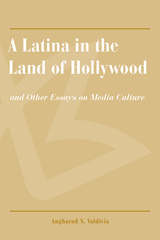 A Latina in the Land of Hollywood: and Other Essays on Media Culture
Angharad N. Valdivia
University of Arizona Press, 2000 From ads for Victoria's Secret to the character roles of Rosie Perez, the mass media have been defining race and femininity. In this diverse set of essays, Angharad N. Valdivia breaks theoretical and methodological boundaries by exploring the relationship of the media to various audiences. Throughout A Latina in the Land of Hollywood we are challenged to think differently about the media messages we often unconsciously consume, such as the popular representations of certain Latina cultural icons. Valdivia shows how reporters focus on Guatemalan activist Rigoberta Menchú's big smile, Brazilian media magnate Xuxa's blonde hair, and Puerto Rican actress Rosie Perez's high-pitched voice, never quite creating a comprehensive portrayal of these women. In her discussion of lingerie catalogs, Valdivia uncovers a similarly skewed depiction. The lush, high-class bedrooms of Victoria's Secret differ as much from the earthy, spare world of Frederick's of Hollywood as the types, sizes, and uses of the lingerie that the two companies sell. Valdivia takes a look at family films, arguing that single mothers are almost always portrayed as either trampy floozies or sexless, hapless women, whereas single dads fare much better. Whether examining one teenager's likes and dislikes or considering single parenthood in family films, Valdivia investigates how popular culture has become the arena in which we struggle to know ourselves and to make ourselves known. She calls for scholars to move beyond investigating implicit themes in films and media to studying the ways that audiences of different colors, ages, genders, and sexual preferences might understand or misunderstand such cultural messages. A Latina in the Land of Hollywood aims to explode traditional discussions of media and popular culture. It is a must-read for anyone interested in popular culture, television, and film.
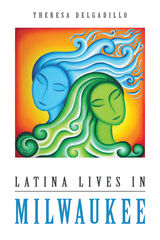 Latina Lives in Milwaukee
Theresa Delgadillo
University of Illinois Press, 2015 Milwaukee's small but vibrant Mexican and Mexican American community of the 1920s grew over succeeding decades to incorporate Mexican, Mexican American, Puerto Rican, Cuban, Central American, and Caribbean migration to the city. Drawing on years of interviews and collaboration with interviewees, Theresa Delgadillo offers a set of narratives that explore the fascinating family, community, work, and career experiences of Milwaukee's Latinas during this time of transformation. Through the stories of these women, Delgadillo caringly provides access to a wide variety of Latina experiences: early Mexican settlers entering careers as secretaries and entrepreneurs; Salvadoran and Puerto Rican women who sought educational opportunity in the U.S., sometimes in flight from political conflicts; Mexican women becoming leather workers and drill press operators; and second-generation Latinas entering the professional classes. These women show how members of diverse generations, ethnicities, and occupations embraced interethnic collaboration and coalition but also negotiated ethnic and racial discrimination, domestic violence, workplace hostilities, and family separations. A one-of-a-kind collection, Latina Lives in Milwaukee sheds light on the journeys undertaken then and now by Latinas in the region, and lays the foundation for the further study of the Latina experience in the Midwest. With contributions from Ramona Arsiniega, María Monreal Cameron, Daisy Cubías, Elvira Sandoval Denk, Rosemary Sandoval Le Moine, Antonia Morales, Carmen Murguia, Gloria Sandoval Rozman, Margarita Sandoval Skare, Olga Valcourt Schwartz, and Olivia Villarreal.
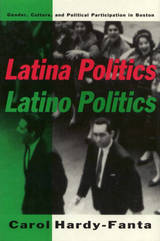 Latina Politics, Latino Politics: Gender, Culture, and Political Participation in Boston
Carol Hardy-Fanta
Temple University Press, 1993 Through an in-depth study of the Latino community in Boston, Carol hardy-Fanta addressees three key debates in American politics: how to look at the ways in which women and men envision the meaning of politics and political participation; how to understand culture and the political life of expanding immigrant populations; and how to create a more participatory America. The author's interviews with Latinos from Puerto Rico, the Dominican Republic, and Central and South America and her participation in community events in North Dorchester, Jamaica Plain, and the South End document the often ignored contribution of Latina women as candidates, political mobilizers, and community organizers. Hardy-Fanta examines critical gender differences in how politics is defined, what strategies Latina women and Latino men use to generate political participation, and how culture and gender interact in the political empowerment of the ethic communities. Hardy-Fanta challenges the notion of political apathy among Latinos and presents factors that stimulate political participation. She finds that the vision of politics promoted by Latina women—one based on connectedness, collectivity, community, and consiousness-raising—contrasts sharply with a male political concern for status, hierarchy, and personal opportunity.
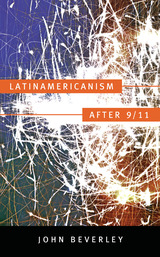 Latinamericanism after 9/11
John Beverley
Duke University Press, 2011 In Latinamericanism after 9/11, John Beverley explores Latinamericanist cultural theory in relation to new modes of political mobilization in Latin America. He contends that after 9/11, the hegemony of the United States and the neoliberal assumptions of the so-called Washington Consensus began to fade in Latin America. At the same time, the emergence in Latin America of new leftist governments—the marea rosada or “pink tide”—gathered momentum. Whatever its outcome, the marea rosada has shifted the grounds of Latinamericanist thinking in a significant way. Beverley proposes new paradigms better suited to Latin America’s reconfigured political landscape. In the process, he takes up matters such as Latin American postcolonial and cultural studies, the relation of deconstruction and Latinamericanism, the persistence of the national question and cultural nationalism in Latin America, the neoconservative turn in recent Latin American literary and cultural criticism, and the relation between subalternity and the state. Beverley’s perspective flows out of his involvement with the project of Latin American subaltern studies, but it also defines a position that is in some ways postsubalternist. He takes particular issue with recent calls for a “posthegemonic” politics.
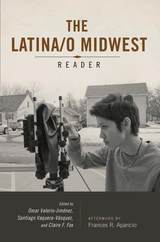 Latina/o Midwest Reader
Omar Valerio-Jimenez , Santiago Vaquera-Vasquez
University of Illinois Press, 2017 From 2000 to 2010, the Latino population increased by more than 73 percent across eight midwestern states. These interdisciplinary essays explore issues of history, education, literature, art, and politics defining today’s Latina/o Midwest. Some contributors delve into the Latina/o revitalization of rural areas, where communities have launched bold experiments in dual-language immersion education while seeing integrated neighborhoods, churches, and sports teams become the norm. Others reveal metro areas as laboratories for emerging Latino subjectivities, places where for some, the term Latina/o itself corresponds to a new type of lived identity as different Latina/o groups interact in shared neighborhoods, schools, and workplaces.
Eye-opening and provocative, The Latina/o Midwest Reader rewrites the conventional wisdom on today's Latina/o community and how it faces challenges—and thrives—in the heartland.
Contributors: Aidé Acosta, Frances R. Aparicio, Jay Arduser, Jane Blocker, Carolyn Colvin, María Eugenia Cotera, Theresa Delgadillo, Lilia Fernández, Claire F. Fox, Felipe Hinojosa, Michael D. Innis-Jiménez, José E. Limón, Marta María Maldonado, Louis G. Mendoza, Amelia María de la Luz Montes, Kim Potowski, Ramón H. Rivera-Servera, Rebecca M. Schreiber, Omar Valerio-Jiménez, Santiago Vaquera-Vásquez, Darrel Wanzer-Serrano, Janet Weaver, and Elizabeth Willmore
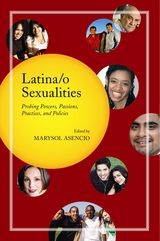 Latina/o Sexualities: Probing Powers, Passions, Practices, and Policies
Asencio, Marysol
Rutgers University Press, 2010 Latina/os are currently the largest minority population in the United States. They are also one of the fastest growing. Yet, we have very limited research and understanding of their sexualities. Instead, stereotypical images flourish even though scholars have challenged the validity and narrowness of these images and the lack of attention to the larger social context. Gathering the latest empirical work in the social and behavioral sciences, this reader offers us a critical lens through which to understand these images and the social context framing Latina/os and their sexualities. Situated at the juncture of Latina/o studies and sexualities studies, Latina/o Sexualities provides a single resource that addresses the current state of knowledge from a multidisciplinary perspective. Contributors synthesize and critique the literature and carve a separate space where issues of Latina/o sexualities can be explored given the limitations of prevalent research models. This work compels the current wave in sexuality studies to be more inclusive of ethnic minorities and sets an agenda that policy makers and researchers will find invaluable.
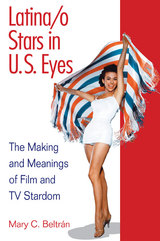 Latina/o Stars in U.S. Eyes: The Making and Meanings of Film and TV Stardom
Mary C. Beltran
University of Illinois Press, 2008 This book explores the role film and television stardom has played in establishing, reinforcing, and challenging popular ethnic notions of Latina/os in the United States since the silent film era of the 1920s. In addition to documenting the importance of Latina and Latino stars to American film and television history, Mary C. Beltrán focuses on key moments in the construction of "Hollywood Latinidad" by analyzing the public images of these stars as promoted by Hollywood film studios, television networks, producers, and the performers themselves. Critically surveying the careers of such film and television stars as Dolores Del Rio, Desi Arnaz, Rita Moreno, Freddie Prinze, Edward James Olmos, Jessica Alba, and Jennifer Lopez, Latina/o Stars in U.S. Eyes also addresses the impact of the rise in Latina and Latino media producers and the current status of Latina/o stardom.
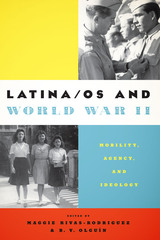 Latina/os and World War II: Mobility, Agency, and Ideology
Edited by Maggie Rivas-Rodriguez and B.V. Olguín
University of Texas Press, 2014 The first book-length study of Latina/o experiences in World War II over a wide spectrum of identities and ancestries—from Cuban American, Spanish American, and Mexican American segments to the under-studied Afro-Latino experience—Latina/os and World War II probes the controversial aspects of Latina/o soldiering and citizenship in the war, the repercussions of which defined the West during the twentieth century. The editors also offer a revised, more accurate tabulation of the number of Latina/os who served in the war. Spanning imaginative productions, such as vaudeville and the masculinity of the soldado razo theatrical performances; military segregation and the postwar lives of veterans; Tejanas on the homefront; journalism and youth activism; and other underreported aspects of the wartime experience, the essays collected in this volume showcase rarely seen recollections. Whether living in Florida in a transformed community or deployed far from home (including Mexican Americans who were forced to endure the Bataan Death March), the men and women depicted in this collection yield a multidisciplinary, metacritical inquiry. The result is a study that challenges celebratory accounts and deepens the level of scholarly inquiry into the realm of ideological mobility for a unique cultural crossroads. Taking this complex history beyond the realm of war narratives, Latina/os and World War II situates these chapters within the broader themes of identity and social change that continue to reverberate in postcolonial lives.
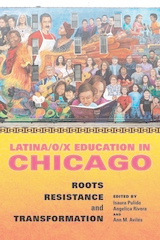 Latina/o/x Education in Chicago: Roots, Resistance, and Transformation
Edited by Isaura Pulido, Angelica Rivera, and Ann M. Aviles
University of Illinois Press, 2022 In this collection, local experts use personal narratives and empirical data to explore the history of Mexican American and Puerto Rican education in the Chicago Public Schools (CPS) system. The essays focus on three themes: the historical context of segregated and inferior schooling for Latina/o/x students; the changing purposes and meanings of education for Latina/o/x students from the 1950s through today; and Latina/o/x resistance to educational reforms grounded in neoliberalism. Contributors look at stories of student strength and resistance, the oppressive systems forced on Mexican American women, the criminalization of Puerto Ricans fighting for liberatory education, and other topics of educational significance. As they show, many harmful past practices remain the norm--or have become worse. Yet Latina/o/x communities and students persistently engage in transformative practices shaping new approaches to education that promise to reverberate not only in the city but nationwide. Insightful and enlightening, Latina/o/x Education in Chicago brings to light the ongoing struggle for educational equity in the Chicago Public Schools.
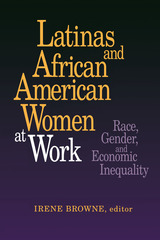 Latinas and African American Women at Work: Race, Gender, and Economic Inequality
Irene Browne
Russell Sage Foundation, 1999 One of Choice magazine's Outstanding Academic Books of 1999 Accepted wisdom about the opportunities available to African American and Latina women in the U.S. labor market has changed dramatically. Although the 1970s saw these women earning almost as much as their white counterparts, in the 1980s their relative wages began falling behind, and the job prospects plummeted for those with little education and low skills. At the same time, African American women more often found themselves the sole support of their families. While much social science research has centered on the problems facing black male workers, Latinas and African American Women at Work offers a comprehensive investigation into the eroding progress of these women in the U.S. labor market. The prominent sociologists and economists featured in this volume describe how race and gender intersect to especially disadvantage black and Latina women. Their inquiries encompass three decades of change for women at all levels of the workforce, from those who spend time on the welfare rolls to middle class professionals. Among the many possible sources of increased disadvantage, they particularly examine the changing demands for skills, increasing numbers of immigrants in the job market, the precariousness of balancing work and childcare responsibilities, and employer discrimination. While racial inequity in hiring often results from educational differences between white and minority women, this cannot explain the discrimination faced by women with higher skills. Minority women therefore face a two-tiered hurdle based on race and gender. Although the picture for young African American women has grown bleaker overall, for Latina women, the story is more complex, with a range of economic outcomes among Cubans, Puerto Ricans, Mexicans, and Central and South Americans. Latinas and African American Women at Work reveals differences in how professional African American and white women view their position in the workforce, with black women perceiving more discrimination, for both race and gender, than whites. The volume concludes with essays that synthesize the evidence about racial and gender-based obstacles in the labor market. Given the current heated controversy over female and minority employment, as well as the recent sweeping changes to the national welfare system, the need for empirical data to inform the public debate about disadvantaged women is greater than ever before. The important findings in Latinas and African American Women at Work substantially advance our understanding of social inequality and the pervasive role of race, ethnicity and gender in the economic well-being of American women.
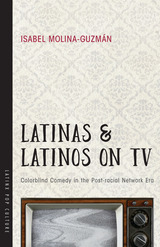 Latinas and Latinos on TV: Colorblind Comedy in the Post-racial Network Era
Isabel Molina-Guzmán
University of Arizona Press, 2018 Since ABC’s George Lopez Show left the airwaves in 2007 as the only network television show to feature a Latino lead, the representational landscape of Latina and Latino actors has shifted from media invisibility toward an era of increasing inclusion.
Sofia Vergara became the highest paid woman and Latina on TV for her starring role on Modern Family. In the first successful dramedy starring a Latina since ABC’s Ugly Betty, Gina Rodriguez gained critical acclaim for her role on the CW’s Jane the Virgin. And the first Latina leading lady of TV, America Ferrera (Ugly Betty), returned to TV stardom in NBC’s Superstore.
This period of diversity brought U.S. Latina and Latino lives to the screen, yet a careful look at TV comedic content and production reveals a more troubling terrain for Latinas/os producers, writers, actors, and audiences.
Interweaving discussions about the ethnic, racial, and linguistic representations of Latinas/os within network television comedies, Isabel Molina-Guzmán probes published interviews with producers and textual examples from hit programs like Modern Family, The Office, and Scrubs to understand how these primetime sitcoms communicate difference in the United States.
Understanding the complex ways that audiences interpret these programs, Molina-Guzmán situates her analysis within the Obama era, a period when ethnicity and race became increasingly grounded in “hipster racism,” and argues that despite increased inclusion, the feel-good imperative of TV comedies still inevitably leaves racism, sexism, and homophobia uncontested.
Latinas on the Line: Invisible Information Workers in Telecommunications
Melissa Villa-Nicholas
Rutgers University Press, 2022 Latinas on the Line provides a compelling analysis and historical and theoretical grounding of the oral histories, never before seen, of Latina information workers in the Bell System from their entrance in 1973 to their retirements by 2015. Author Melissa Villa-Nicholas demonstrates the importance of Latinas of the field of telecommunications through their own words and uses supporting archival research to provide an overview of how Latinas engage and remember a critical analysis of their work place, information technologies, and the larger globalized economy and shifting borderlands through their intersectional identities as information workers. The book offers a rich and engaging portrait of the critical history of Latinas in telecommunications, from their manual to automated to digitized labor.
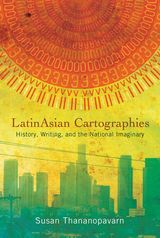 LatinAsian Cartographies: History, Writing, and the National Imaginary
Thananopavarn, Susan
Rutgers University Press, 2018 LatinAsian Cartographies examines how Latina/o and Asian American writers provide important counter-narratives to the stories of racial encroachment that have come to characterize twenty-first century dominant discourses on race. Susan Thananopavarn contends that the Asian American and Latina/o presence in the United States, although often considered marginal in discourses of American history and nationhood, is in fact crucial to understanding how national identity has been constructed historically and continues to be constructed in the present day.
Thananopavarn creates a new “LatinAsian” view of the United States that emphasizes previously suppressed aspects of national history, including imperialism, domestic racism during World War II, Cold War operations in Latin America and Asia, and the politics of borders in an age of globalization. LatinAsian Cartographies ultimately reimagines national narratives in a way that transforms dominant ideas of what it means to be American.
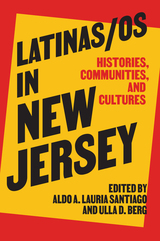 Latinas/os in New Jersey: Histories, Communities, and Cultures
Aldo A. Lauria Santiago
Rutgers University Press, 2025 Since the 1890s, New Jersey has attracted hundreds of thousands of Caribbean and Latin American migrants. The state’s rich economic history, high-income suburbs, and strong public sector have all contributed to attracting, retaining, and setting the stage for Latin American and Caribbean immigrants and secondary-step migrants from New York City. Since the 1980s, however, Latinos have developed a more complex presence in the state’s political landscape and institutions. The emergence of Latino-majority towns and cities and coalition politics facilitated the election of Latino mayors, council persons, and many social and community leaders, as well as the election of statewide officers. This collection brings together innovative and empirically grounded scholarship from different disciplines and interdisciplinary fields of study and addresses topics including the demographic history of Latinos in the state, Latino migration from gateway cities to suburban towns, Latino urban enclaves, Latino economic and social mobility, Latino students and education, the New Jersey Dream Act and in-state tuition act organizing, Latinos and criminal justice reform, Latino electoral politics and leadership, and undocumented communities.
Contributors: Yamil Avivi; Jennifer Ayala; Ulla D. Berg; Giovani Burgos; Elsa Candelario; Laura Curran; Lilia Fernández; Ismael García Colón; Olga Jiménez de Wagenheim; Benjamin Lapidus; Aldo A. Lauria Santiago; Johana Londoño; Kathleen Lopez; Giancarlo Muschi; Melanie Z. Plasencia; Ana Y. Ramos-Zayas; Elena Sabogal; Raymond Sanchez Mayers; William Suárez Gómez; Alex F. Trillo; Daniela Valdez; Anil Venkatesh; Lyna L. Wiggins
A Latin-Greek Index of the Vulgate New Testament
Theodore A. Bergren
SBL Press, 2003
“Scholars who work with Latin materials that have been or might have been translated from Greek originals are often frustrated by the lack of reference tools that can aid in determining accurately translational equivalences between the two languages. Greek-Latin or Latin-Greek lexica are inadequate, for they tend to give ‘ideal’ translational equivalences rather than ones actually attested in some text. The problem is acute, for example, in the study of the Vulgate New Testament, for which no reference tool has existed by which one could determine quickly the entire range of Greek translational equivalents for a given Latin word. The present work is intended to go some distance toward fulfilling this need.”
— from the introduction
 Latino Colorado: The Struggle for Equality in the Centennial State
Ernesto Sagás
University Press of Colorado, 2025 Mexican Americans and other Latinos make up more than 22 percent of Colorado’s population, play a vital role in its major economic sectors, and are becoming a political force to be reckoned with. Yet most official histories of the state mention them only in passing. Latino Colorado fills this gap in the literature by examining the multifaceted experience of Latinos in Colorado from the nineteenth century to the present, from the old Hispano families of southern Colorado to the new arrivals, and from metro Denver to the state’s rural areas of the Western Slope and Eastern Plains.
Author Ernesto Sagás also explores the ways in which Latinos—as a racialized, subordinate group—have historically interacted with Colorado’s Anglo society in carving out their own spaces while struggling for social and legal equality. He presents a demographic and socioeconomic profile of Latinos in Colorado based on field research and the latest US Census data to dispel common stereotypes while also pointing out areas of concern for state policymakers.
Latino Colorado sheds light on this marginalized community and advances the understanding of the state’s racialized dynamics. It is about everyone in the American West—Anglos, Latinos, and others—and how they interact with and continue to (re)define one another in real and imagined ways in the most mythologized of American regions.
 The Latino Education Crisis: The Consequences of Failed Social Policies
Patricia Gándara and Frances Contreras
Harvard University Press, 2009 Will the United States have an educational caste system in 2030? Drawing on both extensive demographic data and compelling case studies, this powerful book reveals the depths of the educational crisis looming for Latino students, the nation’s largest and most rapidly growing minority group.Richly informative and accessibly written, The Latino Education Crisis describes the cumulative disadvantages faced by too many children in the complex American school systems, where one in five students is Latino. Many live in poor and dangerous neighborhoods, attend impoverished and underachieving schools, and are raised by parents who speak little English and are the least educated of any ethnic group.The effects for the families, the community, and the nation are sobering. Latino children are behind on academic measures by the time they enter kindergarten. And while immigrant drive propels some to success, most never catch up. Many drop out of high school and those who do go on to college—often ill prepared and overworked—seldom finish.Revealing and disturbing, The Latino Education Crisis is a call to action and will be essential reading for everyone involved in planning the future of American schools.
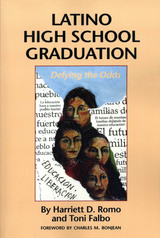 Latino High School Graduation: Defying the Odds
By Harriett D. Romo and Toni Falbo
University of Texas Press, 1996 While high school drop-out rates have steadily declined among white and African American students over the 1970s and 1980s a constant 35 percent of Latino students continued to quit school before graduation. In this pioneering work, Harriett Romo and Toni Falbo reveal how a group of at-risk Latino students defied the odds and earned a high school diploma. Romo and Falbo tracked the progress of 100 students in Austin, Texas, from 1989 to 1993. Drawing on interviews with the students and their parents, school records, and fieldwork in the schools and communities, the authors identify both the obstacles that caused many students to drop out and the successful strategies that other students and their parents pursued to ensure high school graduation. The authors conclude with seven far-reaching recommendations for changes in the public schools. Sure to provoke debate among all school constituencies, this book will be required reading for school administrators, teachers, parents, legislators, and community leaders.
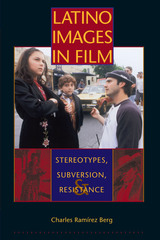 Latino Images in Film: Stereotypes, Subversion, and Resistance
By Charles Ramírez Berg
University of Texas Press, 2002 The bandido, the harlot, the male buffoon, the female clown, the Latin lover, and the dark lady—these have been the defining, and demeaning, images of Latinos in U.S. cinema for more than a century. In this book, Charles Ramírez Berg develops an innovative theory of stereotyping that accounts for the persistence of such images in U.S. popular culture. He also explores how Latino actors and filmmakers have actively subverted and resisted such stereotyping. In the first part of the book, Berg sets forth his theory of stereotyping, defines the classic stereotypes, and investigates how actors such as Raúl Julia, Rosie Pérez, José Ferrer, Lupe Vélez, and Gilbert Roland have subverted stereotypical roles. In the second part, he analyzes Hollywood's portrayal of Latinos in three genres: social problem films, John Ford westerns, and science fiction films. In the concluding section, Berg looks at Latino self-representation and anti-stereotyping in Mexican American border documentaries and in the feature films of Robert Rodríguez. He also presents an exclusive interview in which Rodríguez talks about his entire career, from Bedhead to Spy Kids, and comments on the role of a Latino filmmaker in Hollywood and how he tries to subvert the system.
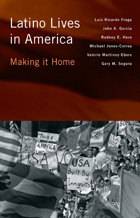 Latino Lives in America: Making It Home
Luis R. Fraga, John A. Garcia, Rodney E. Hero, Michael Jones-Correa, Valerie Martinez-Ebers and Gary Segura
Temple University Press, 2010 Latinos are the largest and fastest growing ethnic group in the United States, with increased levels of political mobilization and influence. In the timely and thoroughgoing Latino Lives in America, six prominent Latino scholars explore the profound implications of Latinos’ population growth and geographic dispersion for American politics and society, tracking key changes and continuities in Latinos' attitudes, behavior, and social experiences. Utilizing a unique set of “narratives” from focus group interviews, supplemented with quantitative findings from the 2006 Latino National Survey, the authors provide a snapshot of Latino life in America. The Latinos interviewed provide their thoughts regarding their sense of belonging and group identification, assimilation and transnationalism, housing, education, civic engagement, and perceptions of discrimination, as well as their experiences in new destinations, where they are trying to realize the “Americano” dream. Latino Lives in America uses these conversations and the survey data to offer both a micro and macro look at how Latinos are transforming various aspects of American politics, culture, and life and how their experiences in the United States are changing them and their families.
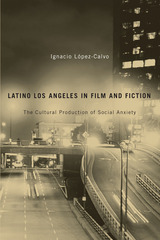 Latino Los Angeles in Film and Fiction: The Cultural Production of Social Anxiety
Ignacio López-Calvo
University of Arizona Press, 2014 Los Angeles has long been a place where cultures clash and reshape. The city has a growing number of Latina/o authors and filmmakers who are remapping and reclaiming it through ongoing symbolic appropriation. In this illuminating book, Ignacio López-Calvo foregrounds the emotional experiences of authors, implicit authors, narrators, characters, and readers in order to demonstrate that the evolution of the imaging of Los Angeles in Latino cultural production is closely related to the politics of spatial location. This spatial-temporal approach, he writes, reveals significant social anxieties, repressed rage, and deep racial guilt.
Latino Los Angeles in Film and Fiction sets out to reconfigure the scope of Latino literary and cultural studies. Integrating histories of different regions and nations, the book sets the interplay of unresolved contradictions in this particular metropolitan area. The novelists studied here stem from multiple areas, including the U.S. Southwest, Guatemala, and Chile. The study also incorporates non-Latino writers who have contributed to the Latino culture of the city.
The first chapter examines Latino cultural production from an ecocritical perspective on urban interethnic relations. Chapter 2 concentrates on the representation of daily life in the barrio and the marginalization of Latino urban youth. The third chapter explores the space of women and how female characters expand their area of operations from the domestic space to the public space of both the barrio and the city.
A much-needed contribution to the fields of urban theory, race critical theory, Chicana/o–Latina/o studies, and Los Angeles writing and film, López-Calvo offers multiple theoretical perspectives—including urban theory, ecocriticism, ethnic studies, gender studies, and cultural studies— contextualized with notions of transnationalism and post-nationalism.
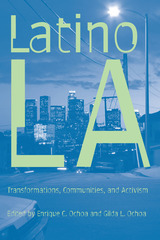 Latino Los Angeles: Transformations, Communities, and Activism
Edited by Enrique C. Ochoa and Gilda L. Ochoa
University of Arizona Press, 2005 As the twenth-first century begins, Latinas/os represent 45 percent of the residents of Los Angeles County, making them the largest racial/ethnic group in the region. At the same time, the shift from manufacturing to a service-based economy in the area has contributed to a decline in good-paying jobs, significantly impacting working class families. These transformations have created a backlash that has included state propositions impacting Latinas/os and escalating anti-immigrant rhetoric—and Latina/os of all backgrounds are making their voices heard. Until recently, most research on Latinas/os in the U.S. has ignored historical and contemporary dynamics in Latin America, just as scholars of Latin America have generally stopped their studies at the border. This volume roots Los Angeles in the larger arena of globalization, exploring the demographic changes that have transformed the Latino presence in LA from primarily Mexican-origin to one that now includes peoples from throughout the hemisphere. Bringing together scholars from a range of disciplines, it combines historical perspectives with analyses of power and inequality to consider how Latinas/os are responding to exclusionary immigration, labor, and schooling practices and actively creating communities. The contributors examine Latina/o Los Angeles in the context of historical, economic and social factors that have shaped the region. The first section provides contexts for understanding Latina/o migration, with chapters focusing on such factors as U.S. economic and military domination, labor and economic integration in the Americas, and Los Angeles’ economic history. The second section considers how various Latina/o groups have settled and formed communities and interacted with the existing Mexican-origin populations, showing how Zapotecs, Salvadorans, and other peoples are remaking urban demographics. The final section on labor organizing and political activism examines the role of Latina/o immigrants in such actions as the janitors’ strike and also considers the contemporary role of students in political activism. The volume concludes with an up-to-date compilation of contemporary scholarship on immigration, the economy, schools, neighborhoods, gender and activism as they relate to Central American and Mexican immigrants. Reflecting a range of methodologies—statistical, historical, ethnographic, and participatory research—this collection is relevant not only to ethnic studies but also to broader concerns in political science, sociology, history, economics, and urban studies. In addition, some chapters focus explicitly on women, and gender issues are interwoven throughout the text. Latino Los Angeles is an important work that contributes to contemporary scholarship on transnationalism as it reexamines the changing face of America’s largest western metropolis.
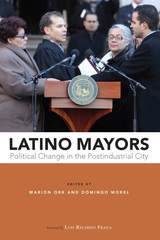 Latino Mayors: Political Change in the Postindustrial City
Marion Orr
Temple University Press, 2018 As recently as the early 1960s, Latinos were almost totally excluded from city politics. This makes the rise of Latino mayors in the past three decades a remarkable American story—one that explains ethnic succession, changing urban demography, and political contexts. The vibrant collection Latino Mayors features case studies of eleven Latino mayors in six American cities: San Antonio, Los Angeles, Denver, Hartford, Miami, and Providence. The editors and contributors analyze Latino mayors for their governing styles and policies. They describe how candidates shaped race, class, and economic issues—particularly in deracialized campaigns. Latino Mayors also addresses coalition politics, political incorporation, and how community groups operate, as well as the challenges these pioneers have faced in office from political tensions and governance issues that sometimes even harm Latinos. Ultimately, Latino Mayors charts the performances, successes, and failures of these elected officials to represent their constituents in a changing economic and urban environment. Contributors include: Stefanie Chambers, Carlos E. Cuéllar, Emily M. Farris, Maria Ilcheva, Robert Preuhs, Heywood T. Sanders, Ellen Shiau, and the editors.
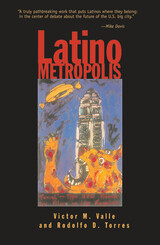 Latino Metropolis
Victor M. Valle
University of Minnesota Press, 2000 A readable look at culture and politics in Los Angeles through a Latino lens. Los Angeles: scratch the surface of the city’s image as a rich mosaic of multinational cultures and a grittier truth emerges-its huge, shimmering economy was built on the backs of largely Latino immigrants and still depends on them. This book exposes the underside of the development and restructuring that have turned Los Angeles into a global city, and in doing so it reveals the ways in which ideas about ethnicity-Latino identity itself-are implicated and elaborated in the process. A penetrating analysis of the social, economic, cultural, and political consequences of the growth of the Latino working-class populations in Los Angeles, Latino Metropolis is also a nuanced account of the complex links between political economy and the social construction of ethnicity. Lifting examples from recent news stories, political encounters, and cultural events, the authors demonstrate how narratives about Latinos are used to maintain the status quo-particularly the existing power grid-in the city. In media representations of riots, in the recasting (and "whitening") of Mexican food as Spanish-American cuisine, in the community displacement that occurred as part of the development of the Staples Center-in telling instances large and small, we see how Los Angeles and its Latino population are mutually transforming. And we see how an old Latino politics of "racial" identity is inevitably giving way to a new politics of class. Combining political and economic insight with trenchant social and cultural analysis, this work offers the clearest statement to date of how ethnicity and class intersect in defining racialized social relations in the contemporary metropolis.Globalization and Community Series, volume 7Translation Inquiries: University of Minnesota Press
 Latino Pentecostals in America: Faith and Politics in Action
Gastón Espinosa
Harvard University Press, 2014 Every year an estimated 600,000 U.S. Latinos convert from Catholicism to Protestantism. Today, 12.5 million Latinos self-identify as Protestant—a population larger than all U.S. Jews and Muslims combined. Spearheading this spiritual transformation is the Pentecostal movement and Assemblies of God, which is the destination for one out of four converts. In a deeply researched social and cultural history, Gastón Espinosa uncovers the roots of this remarkable turn and the Latino AG’s growing leadership nationwide.
Latino Pentecostals in America traces the Latino AG back to the Azusa Street Revivals in Los Angeles and Apostolic Faith Revivals in Houston from 1906 to 1909. Espinosa describes the uphill struggles for indigenous leadership, racial equality, women in the ministry, social and political activism, and immigration reform. His analysis of their independent political views and voting patterns from 1996 to 2012 challenges the stereotypes that they are all apolitical, right-wing, or politically marginal. Their outspoken commitment to an active faith has led a new generation of leaders to blend righteousness and justice, by which they mean the reconciling message of Billy Graham and the social transformation of Martin Luther King, Jr. Latino AG leaders and their 2,400 churches across the nation represent a new and growing force in denominational, Evangelical, and presidential politics.
This eye-opening study explains why this group of working-class Latinos once called “The Silent Pentecostals” is silent no more. By giving voice to their untold story, Espinosa enriches our understanding of the diversity of Latino religion, Evangelicalism, and American culture.
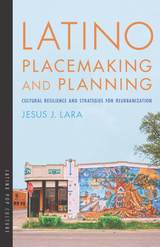 Latino Placemaking and Planning: Cultural Resilience and Strategies for Reurbanization
Jesus J. Lara
University of Arizona Press, 2018 Latinos are currently the second-largest ethnic group demographically within the United States. By the year 2050 they are projected to number nearly 133 million, or approximately one third of the country’s total population. As the urban component of this population increases, the need for resources to support it will generate new cultural and economic stresses.
Latino Placemaking and Planning offers a pathway to define, analyze, and evaluate the role that placemaking can have with respect to Latino communities in the context of contemporary urban planning, policy, and design practices. Using strategically selected case studies, Jesus J. Lara examines how Latinos contribute to the phenomenon of urban revitalization through the (re)appropriation of physical space for their own use and the consequent transformation of what were previously economically downtrodden areas into vibrant commercial and residential centers.
The book examines the formation of urban cultures and reurbanization strategies from the perspective of Latino urbanism and is divided into four key sections, which address (1) emerging new urban geographies; (2) the power of place and neighborhood selection; (3) Latino urbanism case studies; and (4) lessons and recommendations for “reurbanizing” the city. Latino Placemaking and Planning illustrates the importance of placemaking for Latino communities and provides accessible strategies for planners, students, and activists to sustainable urban revitalization.
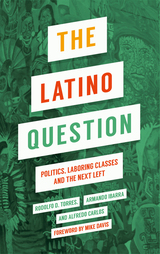 The Latino Question: Politics, Laboring Classes and the Next Left
Rodolfo D. Torres
Pluto Press, 2018 In the United States, the number of Latinos struggling in pursuit of the American Dream has never been greater. Millions work towards this ideal each year, only to find themselves trapped in a cycle of debt and labor. The need for a vivid, empirically grounded study on Latino politics, culture, and social issues is more essential now than ever before—The Latino Question fulfills this gap, offering a cutting-edge overview and analysis of the transformative nature of Latino politics in the United States.
In a radical alternative to the dominant orthodoxy in Latino political studies, Rodolfo D. Torres, Armando Ibarra, and Alfredo Carlos emphasize the importance of political economy for understanding Latino politics, culture, and social issues. Written in an accessible style, the authors draw from extensive original research and several critical traditions—including Karl Marx, Antonio Gramsci, and Michel Foucault—to make crucial links between socio-economic and culture-based approaches for understanding the politics of race and ethnicity in capitalist society. Notably, they present front-line evidence of how some Mexican communities across America are not only resisting, but also reinventing and transforming the predominant economic ideas. The Latino Question will be essential for anyone hoping to understand the changes in Latino communities in America today.
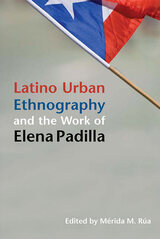 Latino Urban Ethnography and the Work of Elena Padilla
Merida M. Rua
University of Illinois Press, 2010 This study reclaims and builds upon the classic work of anthropologist Elena Padilla in an effort to examine constructions of space and identity among Latinos. The volume includes an annotated edition of Padilla's 1947 University of Chicago master's thesis, "Puerto Rican Immigrants in New York and Chicago: A Study in Comparative Assimilation," which broke with traditional urban ethnographies and examined racial identities and interethnic relations. Weighing the importance of gender and the interplay of labor, residence, and social networks, Padilla examined the integration of Puerto Rican migrants into the social and cultural life of the larger community where they settled. Also included are four comparative and interdisciplinary original essays that foreground the significance of Padilla's early study about Latinos in Chicago. Contributors discuss the implications of her groundbreaking contributions to urban ethnographic traditions and to the development of Puerto Rican studies and Latina/o studies. Contributors are Nicholas De Genova, Zaire Z. Dinzey-Flores, Elena Padilla, Ana Y. Ramos-Zayas, Mérida M. Rúa, and Arlene Torres.
Latino/a Biblical Hermeneutics: Problematics, Objectives, Strategies
Francisco Lozada Jr.
SBL Press, 2014 Engage essays that are profoundly theological and resolutely social
In this collection of essays, contributors seek to analyze the vision of the critical task espoused by Latino/a critics. The project explores how such critics approach their vocation as critics in the light of their identity as members of the Latino/a experience and reality. A variety of critics—representing a broad spectrum of the Latino/a American formation, along various axes of identity—address the question in whatever way they deem appropriate: What does it mean to be a Latino/a critic?
Features:
- Essays from sixteen scholars
- Articles bring together the fields of biblical studies and racial-ethnic studies
- Conclusion addresses directions for future research
Latino/a Children's and Young Adult Writers on the Art of Storytelling
Frederick Luis Aldama
University of Pittsburgh Press, 2018 Children’s and young adult literature has become an essential medium for identity formation in contemporary Latino/a culture in the United States. This book is an original collection of more than thirty interviews led by Frederick Luis Aldama with Latino/a authors working in the genre. The conversations revolve around the conveyance of young Latino/a experience, and what that means for the authors as they overcome societal obstacles and aesthetic complexity. The authors also speak extensively about their experiences within the publishing industry and with their audiences. As such, Aldama’s collection presents an open forum to contemporary Latino/a writers working in a vital literary category and sheds new light on the myriad formats, distinctive nature, and cultural impact it offers.
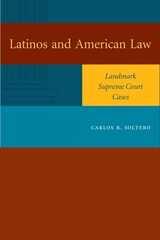 Latinos and American Law: Landmark Supreme Court Cases
By Carlos R. Soltero
University of Texas Press, 2006 To achieve justice and equal protection under the law, Latinos have turned to the U.S. court system to assert and defend their rights. Some of these cases have reached the United States Supreme Court, whose rulings over more than a century have both expanded and restricted the legal rights of Latinos, creating a complex terrain of power relations between the U.S. government and the country's now-largest ethnic minority. To map this legal landscape, Latinos and American Law examines fourteen landmark Supreme Court cases that have significantly affected Latino rights, from Botiller v. Dominguez in 1889 to Alexander v. Sandoval in 2001. Carlos Soltero organizes his study chronologically, looking at one or more decisions handed down by the Fuller Court (1888-1910), the Taft Court (1921-1930), the Warren Court (1953-1969), the Burger Court (1969-1986), and the Rehnquist Court (1986-2005). For each case, he opens with historical and legal background on the issues involved and then thoroughly discusses the opinion(s) rendered by the justices. He also offers an analysis of each decision's significance, as well as subsequent developments that have affected its impact. Through these case studies, Soltero demonstrates that in dealing with Latinos over issues such as education, the administration of criminal justice, voting rights, employment, and immigration, the Supreme Court has more often mirrored, rather than led, the attitudes and politics of the larger U.S. society.
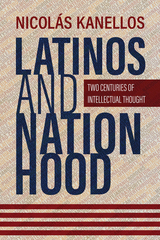 Latinos and Nationhood: Two Centuries of Intellectual Thought
Nicolás Kanellos
University of Arizona Press, 2023 Spanning from the early nineteenth century to today, this intellectual history examines the work of Latino writers who explored the major philosophic and political themes of their day, including the meaning and implementation of democracy, their democratic and cultural rights under U.S. dominion, their growing sense of nationhood, and the challenges of slavery and disenfranchisement of women in a democratic republic that had yet to realize its ideals.
Over the course of two centuries, these Latino or Hispanic intellectuals were natural-born citizens of the United States, immigrants, or political refugees. Many of these intellectuals, whether citizens or not, strove to embrace and enliven such democratic principles as freedom of speech and of the press, the protection of minorities in the Bill of Rights and in subsequent laws, and the protection of linguistic and property rights, among many others, guaranteed by treaties when the United States incorporated their homelands into the Union.
The first six chapters present the work of lesser-known historical figures—most of whom have been consistently ignored by Anglo- and Euro-centric history and whose works have been widely inaccessible until recently—who were revolutionaries, editors of magazines and newspapers, and speechmakers who influenced the development of a Latino consciousness. The last three chapters deal with three foundational figures of the Chicano Movement, the last two of whom either subverted the concept of nationhood or went beyond it to embrace internationalism in an outreach to humanity as a whole.
Latinos and Nationhood sheds new light on the biographies of Félix Varela, José Alvarez de Toledo y Dubois, Francisco Ramírez, Tomás Rivera, Rolando Hinojosa-Smith, and Gloria E. Anzaldúa, among others.
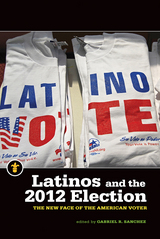 Latinos and the 2012 Election: The New Face of the American Voter
Gabriel R. Sanchez
Michigan State University Press, 2015 In giving President Obama a record level of support (75 percent) and reaching a watershed 10 percent of the voting population, Latinos proved to be decisive in the 2012 election outcome—an unprecedented mark of influence for this segment of the wider electorate. This shift also signaled a radical reenvisioning of mobilization strategies by both parties and created a sea change in the way political organizations conduct outreach and engagement efforts. In this groundbreaking volume, experts in Latino politics ask: What is the scope of Latino voter influence, where does this electorate have the greatest impact, and what issues matter to them most? They examine a key national discussion—immigration reform—as it relates to voter behavior, and also explore the influence of Latinos within key states, including California, Colorado, New Mexico, Virginia, North Carolina, Ohio, Nevada, and Florida. While some of these states have traditionally had strong Latino voting blocs, in others Latinos are just emerging as major players electorally. The book also discusses the extent to which Latinos were mobilized during the 2012 campaign and analyzes election outcomes using new tools created by Latino Decisions. A blend of rigorous data analysis and organizational commentary, the book offers a variety of perspectives on the past, present, and future of the Latino electorate.
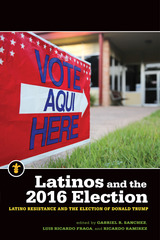 Latinos and the 2016 Election: Latino Resistance and the Election of Donald Trump
Gabriel R. Sanchez
Michigan State University Press, 2020 The 2016 election saw more Latino votes than the record voter turnout of the 2012 election. The essays in this volume provide a highly detailed analysis of the state and national impact Latino voters had in what will be remembered as one of the biggest surprises in presidential election history. Contrary to much commentary, Latino voters increased their participation rates in all states beyond the supposed peak levels that they attained in 2012. Moreover, they again displayed their overwhelming support of Democratic candidates and even improved their Democratic support in Florida. Nonetheless, their continued presence and participation in national elections was not sufficient to prevent the election of Donald Trump, the Republican presidential candidate who vilified Latinos and especially Latino immigrants. Each essay provides insights as to how these two competing realities coexist, while the conclusion addresses the implications of this coexistence for the future of Latinos in American politics.
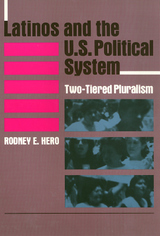 Latinos and the U.S. Political System: Two-Tiered Pluralism
Rodney E. Hero
Temple University Press, 1992 Bringing together political science research on Latinos and an analysis of American politics from the vantage point of the Latino political condition, Rodney Hero presents a comprehensive discussion of contemporary Latino politics. The distinct and tenuous nature of Latino status in the U.S. has made it difficult to explain their unique status. This "uniqueness" stems from a variety of circumstances, including the differences among Mexican Americans, Puerto Ricans, and Cubans, and their ambivalent racial classification (white but not "Anglo," or nonwhite but not black). Hero introduces the concept of "two-tiered pluralism," which describes the political situation for Latinos and other minorities in which equality is largely formal or procedural, but not substantive. He observes that this formal but marginalized inclusion exists for minorities in most facets of the political process. In his critical overview of American politics, Hero explores the major theoretical perspectives that have been used to understand Latino "cultural politics"; he contrasts the three largest Hispanic population in this country; and he considers major political activities and American institutions with specific reference to Latinos. This timely work addresses the politics of an increasingly important segment of the U.S. population and an area in which previous research has been scant.
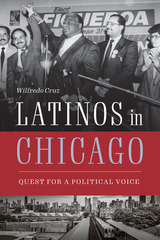 Latinos in Chicago: Quest for a Political Voice
Wilfredo Cruz
Southern Illinois University Press, 2022 WINNER, 2023 Illinois State Historical Society Certificate of Excellence in “Books, Scholarly”!
The path to political power for Latinos in Chicago
In the Midwest’s largest city, Latinos have been fighting for political representation for more than half a century. In this exploration of urban politics in Chicago, Wilfredo Cruz shows for the first time how Latinos went from being ignored by the Irish-controlled political machine to becoming a respected constituency.
Beginning with the Latino community’s first attempt to acquire a political voice in Chicago politics in 1911 and continuing through Latino officeholders of the early twenty-first century, Cruz surveys not only the struggles of this community—specifically the two largest Latino groups in the city, Mexicans and Puerto Ricans—but also the ways in which Chicago’s Latinos overcame those challenges to gain their political voice.
For most of the twentieth century, Chicago politicians ignored the growing Latino community. This disregard changed with the 1983 election of Mayor Harold Washington, an African American who defied the political machine and actively recruited Latinos to his administration and helped them win city and statewide political offices. His actions opened the doors of government for Latinos in Chicago. Subsequent mayors, seeing the political success of Washington’s move, continued his policies.
Many up-and-coming Latino politicians making strides in Chicago, including state representative Aarón Ortíz, Alderman Andre Vasquez, and Alderman Rossana Rodríguez-Sanchez, contribute their takes on the struggle for political power and the challenges facing the rising new generation of elected officials. With this book, Cruz asks and answers this question: What does the future hold for Latinos politically in Chicago?
Latinos in Michigan
David A. Badillo
Michigan State University Press, 2003 The history of Latinos in Michigan is one of cultural diversity, institutional formation, and an ongoing search for leadership in the midst of unique, often intractable circumstances. Latinos have shared a vision of the American Dream--made all the more difficult by the contemporary challenge of cultural assimilation. The complexity of their local struggles, moreover, reflects far-reaching developments on the national stage, and suggests the outlines of a common identity. While facing adversity as rural and urban immigrants, exiles, and citizens, Latinos have contributed culturally, economically, and socially to many important developments in Michigan's history.
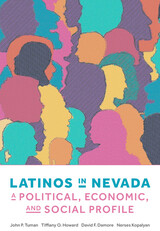 Latinos in Nevada: A Political, Economic, and Social Profile
John P. Tuman
University of Nevada Press, 2021 Throughout history, the Latinx population has contributed substantially to Nevada’s mining, railroad, farming, ranching, and tourism industries. Latinos in Nevada provides a comprehensive analysis of this fastest-growing and diverse ethnic group, exploring the impact of the Hispanic/Latinx population on the Silver State in the past, present, and future. This extensive study by a distinguished and multidisciplinary team of scholars discusses the impact of the Latinx population from the early development of the state of Nevada and highlights their roles in society, as well as the specific implications of their growing presence in the state. It also contemplates the future of the Latinx population and the role they will continue to play in politics and the economy. This in-depth examination of a large and relatively understudied population will be of interest to scholars and students who study disparities in health and education opportunities as well as the political and economic climate among Latinos and other groups in Nevada and beyond. A political, economic, and demographic profile, this book: - Explores the history, growth, and diversity of the Latinx population.
- Draws on an array of census data, voter surveys, statistics, interviews, and health, education, employment, wages, and immigration statistics.
- Evaluates key trends in employment, education, religion, and health.
- Analyzes the dynamics of political participation, including implications of a growing Latino political electorate in a western swing state.
- Assesses key determinants of health disparities, educational inequities, and civic engagement among Latinos in the state.
- Demonstrates the impact of the Great Recession of 2008 and provides a preliminary assessment of the COVID-19 pandemic on Latino employment.
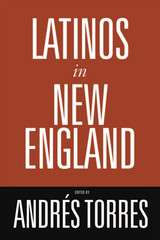 Latinos in New England
edited by Andrés Torres
Temple University Press, 2006 More than one million Latinos now live in New England. This is the first book to examine their impact on the region's culture, politics, and economics. At the same time, it investigates the effects of the locale on Latino residents' lives, traditions, and institutions.Employing methodologies from a variety of disciplines, twenty-one contributors explore topics in three broad areas: demographic trends, migration and community formation, and identity and politics. They utilize a wide range of approaches, including oral histories, case studies, ethnographic inquiries, focus group research, surveys, and statistical analyses. From the "Dominicanization" of the Latino community in Waterbury, Connecticut, to the immigration experiences of Brazilians in Massachusetts, from the influence of Latino Catholics on New England's Catholic churches to the growth of a Latino community in Providence, Rhode Island, the essays included here contribute to a new and multifaceted view of the growing Pan-Latino presence in the birthplace of the United States.
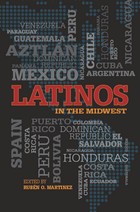 Latinos in the Midwest
Rubén O. Martinez
Michigan State University Press, 2011 Over the past twenty years, the Latino population in the Midwest has grown rapidly, both in urban and rural areas. As elsewhere in the country, shifting demographics in the region have given rise to controversy and mixed reception. Where some communities have greeted Latinos openly, others have been more guarded. In spite of their increasing presence, Latinos remain the most marginalized major population group in the country. In coming years, the projected growth of this population will require greater attention from policymakers concerned with helping to incorporate them into the nation’s core institutions. This eye-opening collection of essays examines the many ways in which an increase in the Latino population has impacted the Midwest—culturally, economically, educationally, and politically. Drawing on studies, personal histories, legal rulings, and other sources, this book takes an interdisciplinary approach to an increasingly important topic in American society and offers a glimpse into the nation’s demographic future.
 Latinos in the United States: The Sacred and the Political, Second Edition
David T. Abalos
University of Notre Dame Press, 2007
When Latinos in the United States was first published in 1986, it was hailed as a “triumph” by the National Catholic Reporter, “inspiring” by the journal American Studies, and was named an Outstanding Academic Book of the Year by Choice. The book was widely adopted in Latino and ethnic studies classes at colleges and universities throughout the country. Now, in the second edition, David Abalos updates his pioneering application of the transformation theory to key aspects of Latino politics, history, and culture. He draws on examples from everyday human encounters to address specific concerns of both Latino individuals and groups. Among the issues addressed are: the need to maintain Latino family heritage while allowing each member to develop the autonomy necessary to interact both within the family and within American society; the importance of avoiding assimilation; the necessity for Latinos to develop the skills and competence that allow them to enter into America's business world without losing their commitment to the community; rediscovery of Latino religious symbols of transformation that renew the life of the sacred; and the need to preserve Latino heritage through a strategy of being both American and Latino.
The second edition contains extensive new material. Abalos includes a new section on archetypal analysis. He has added discussions of the relationship between the sacred and the political in American politics, and of assimilation and its effects on the immigrant. He addresses the new wave of migration and what it means to the future of the United States and la comunidad Latina. Abalos has also added a new chapter on the politics of education, which is, he argues, the most important civil rights issue facing the Latino community. The notes and bibliography reflect recent scholarship, especially that of Latina writers and Chicana feminists.
Latin@s' Presence in the Food Industry: Changing How We Think about Food
Meredith E. Abarca
University of Arkansas Press, 2016 Latin@s' Presence in the Food Industry takes the holistic culinary approach of bringing together multidisciplinary criticism to explore the diverse, and not always readily apparent, ways that Latin@s relate to food and the food industry.
The networks Latin@s create, the types of identities they fashion through food, and their relationship to the US food industry are analyzed to understand Latin@s as active creators of food-based communities, as distinctive cultural representations, and as professionals. This vibrant new collection acknowledges issues of labor conditions, economic politics, and immigration laws—structural vulnerabilities that certainly cannot be ignored—and strives to understand more fully the active and conscious ways that Latina@s create spaces to maneuver global and local food systems.
LatinX
Claudia Milian
University of Minnesota Press, 2019 Nationality is not enough to understand “Latin”-descended populations in the United States
LatinX has neither country nor fixed geography. LatinX, according to Claudia Milian, is the most powerful conceptual tool of the Latino/a present, an itinerary whose analytic routes incorporate the Global South and ecological devastation. Milian’s trailblazing study deploys the indeterminate but thunderous “X” as intellectual armor, a speculative springboard, and a question for our times that never stops being asked. LatinX sorts out and addresses issues about the unknowability of social realities that exceed our present knowledge.
Forerunners: Ideas First
Short books of thought-in-process scholarship, where intense analysis, questioning, and speculation take the lead
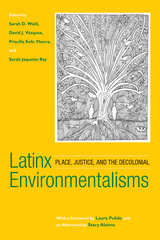 Latinx Environmentalisms: Place, Justice, and the Decolonial
Sarah D. Wald
Temple University Press, 2019 The whiteness of mainstream environmentalism often fails to account for the richness and variety of Latinx environmental thought. Building on insights of environmental justice scholarship as well as critical race and ethnic studies, the editors and contributors to Latinx Environmentalisms map the ways Latinx cultural texts integrate environmental concerns with questions of social and political justice. Original interviews with creative writers, including Cherríe Moraga, Helena María Viramontes, and Héctor Tobar, as well as new essays by noted scholars of Latinx literature and culture, show how Latinx authors and cultural producers express environmental concerns in their work. These chapters, which focus on film, visual art, and literature—and engage in fields such as disability studies, animal studies, and queer studies—emphasize the role of racial capitalism in shaping human relationships to the more-than-human world and reveal a vibrant tradition of Latinx decolonial environmentalism. Latinx Environmentalisms accounts for the ways Latinx cultures are environmental, but often do not assume the mantle of “environmentalism.”
Latinx Art: Artists, Markets, and Politics
Arlene Dávila
Duke University Press, 2020 In Latinx Art Arlene Dávila draws on numerous interviews with artists, dealers, and curators to explore the problem of visualizing Latinx art and artists. Providing an inside and critical look of the global contemporary art market, Dávila's book is at once an introduction to contemporary Latinx art and a call to decolonize the art worlds and practices that erase and whitewash Latinx artists. Dávila shows the importance of race, class, and nationalism in shaping contemporary art markets while providing a path for scrutinizing art and culture institutions and for diversifying the art world.
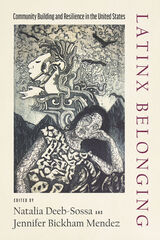 Latinx Belonging: Community Building and Resilience in the United States
Edited by Natalia Deeb-Sossa and Jennifer Bickham Mendez
University of Arizona Press, 2022 What does it mean to be Latinx? This pressing question forms the core of Latinx Belonging, which brings together cutting-edge research to discuss the multilayered ways this might be answered.
Latinx Belonging is anchored in the claim that Latinx people are not defined by their marginalization but should instead be understood as active participants in their communities and contributors to U.S. society. The volume’s overarching analytical approach recognizes the differences, identities, and divisions among people of Latin American origin in the United States, while also attending to the power of mainstream institutions to shape their lives and identities. Contributors to this volume view “belonging” as actively produced through struggle, survival, agency, resilience, and engagement.
This work positions Latinxs’ struggles for recognition and inclusion as squarely located within intersecting power structures of gender, race, sexuality, and class and as shaped by state-level and transnational forces such as U.S. immigration policies and histories of colonialism. From the case of Latinxs’ struggles for recognition in the arts, to queer Latinx community resilience during COVID-19 and in the wake of mass shootings, to Indigenous youth’s endurance and survival as unaccompanied minors in Los Angeles, the case studies featured in this collection present a rich and textured picture of the diversity of the U.S. Latinx experience in the twenty-first century. Contributors
Andrés Acosta
Jack “Trey” Allen
Jennifer Bickham Mendez
Stephanie L. Canizales
Christopher Cuevas
Natalia Deeb-Sossa
Yvette G. Flores
Melanie Jones Gast
Monika Gosin
Pierrette Hondagneu-Sotelo
Nolan Kline
Verónica Montes
Yvonne Montoya
Michael De Anda Muñiz
Suzanne Oboler
Gilda L. Ochoa
Dina G. Okamoto
Marco Antonio Quiroga
Michelle Téllez
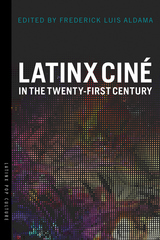 Latinx Ciné in the Twenty-First Century
Edited by Frederick Luis Aldama
University of Arizona Press, 2019 Today’s Latinx motion pictures are built on the struggles—and victories—of prior decades. Earlier filmmakers threw open doors and cleared new paths for those of the twenty-first century to willfully reconstruct Latinx epics as well as the daily tragedies and triumphs of Latinx lives. Twenty-first-century Latinx film offers much to celebrate, but as noted pop culture critic Frederick Luis Aldama writes, there’s still room to be purposefully critical. In Latinx Ciné in the Twenty-First Century contributors offer groundbreaking scholarship that does both, bringing together a comprehensive presentation of contemporary film and filmmakers from all corners of Latinx culture. The book’s seven sections cover production techniques and evolving genres, profile those behind and in front of the camera, and explore the distribution and consumption of contemporary Latinx films. Chapters delve into issues that are timely, relevant, and influential, including representation or the lack thereof, identity and stereotypes, hybridity, immigration and detention, historical recuperation, and historical amnesia. With its capacious range and depth of vision, this timeless volume of cutting-edge scholarship blazes new paths in understanding the full complexities of twenty-first century Latinx filmmaking. Contributors Contributors Iván Eusebio Aguirre Darancou Frederick Luis Aldama Juan J. Alonzo Lee Bebout Debra A. Castillo Nikolina Dobreva Paul Espinosa Mauricio Espinoza Camilla Fojas Rosa-Linda Fregoso Desirée J. Garcia Enrique García Clarissa Goldsmith Matthew David Goodwin Monica Hanna Sara Veronica Hinojos Carlos Gabriel Kelly Jennifer M. Lozano Manuel M. Martín-Rodríguez J. V. Miranda Valentina Montero Román Danielle Alexis Orozco Henry Puente John D. “Rio” Riofrio Richard T. Rodríguez Ariana Ruiz Samuale Saldívar III Jorge Santos Rebecca A. Sheehan
 Latinx Comics Studies: Critical and Creative Crossings
Fernanda Díaz-Basteris
Rutgers University Press, 2025 Latinx Comics Studies: Critical and Creative Crossings offers an intersectional and interdisciplinary approach to analyzing Latinx studies and comics studies. The book draws together groundbreaking critical essays, practical pedagogical reflections, and original and republished short comics. The works in this collection discuss the construction of national identity and memory, undocumented narratives, Indigenous and Afro-Latinx experiences, multiracial and multilingual identities, transnational and diasporic connections, natural disasters and unnatural colonial violence, feminist and queer interventions, Latinx futurities, and more. Together, the critical and creative works in this collection begin to map out the emerging and evolving field of Latinx comics studies and to envision what might be possible in and through Latinx comics.
This collection moves beyond simply cataloguing and celebrating Latinx representation within comics. It examines how comics by, for, and about Latinx peoples creatively and conceptually experiment with the very boundaries of “Latinx” and portray the diverse lived experiences therein.
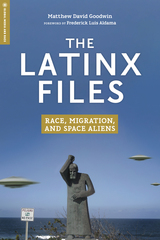 The Latinx Files: Race, Migration, and Space Aliens
Matthew David Goodwin
Rutgers University Press, 2021 In The Latinx Files, Matthew David Goodwin traces how Latinx science fiction writers are reclaiming the space alien from its xenophobic legacy in the science fiction genre. The book argues that the space alien is a vital Latinx figure preserving Latinx cultures by activating the myriad possible constructions of the space alien to represent race and migration in the popular imagination. The works discussed in this book, including those of H.G. Wells, Gloria Anzaldúa, Junot Diaz, André M. Carrington, and many others, often explicitly reject the derogatory correlation of the space alien and Latinxs, while at other times, they contain space aliens that function as a source of either enlightenment or horror for Latinx communities. Throughout this nuanced analysis, The Latinx Files demonstrates how the character of the space alien has been significant to Latinx communities and has great potential for future writers and artists.
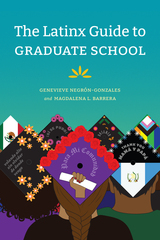 The Latinx Guide to Graduate School
Genevieve Negrón-Gonzales and Magdalena L. Barrera
Duke University Press, 2023 In The Latinx Guide to Graduate School Genevieve Negrón-Gonzales and Magdalena L. Barrera provide prospective and current Latinx graduate students in the humanities and social sciences fields with a roadmap for surviving and thriving in advanced-degree programs. They document the unwritten rules of graduate education that impact Latinx students, demystifying and clarifying the essential requirements for navigating graduate school that Latinx students may not know because they are often the first in their families to walk that path. Topics range from identifying the purpose of graduate research, finding the right program, and putting together a strong application to developing a graduate student identity, cultivating professional and personal relationships, and mapping out a post--graduate school career. The book also includes resources for undocumented students. Equal parts how-to guide, personal reflection, manifesto, and academic musing, this book gives a culturally resonant perspective that speaks to the unique Latinx graduate student experience.
 Latinx Lives in Hemsipheric Context
Maria A. Windell, special issue editor
Duke University Press, 2018 This special issue investigates the intersections among Latinx, Chicanx, ethnic, and hemispheric American Studies, mapping the history of Latinx and Latin American literary and cultural production as it has circulated through the United States and the Americas. The issue comprises original archival research on Latinx print culture, modernismo, and land grabs, as well as short position pieces on the relevance of “Latinx” both as a term and as a field category for historical scholarship, representational politics, and critical intervention. Taken as a whole, the issue interrogates how Latinx literary, cultural, and scholarly productions circulate across the Americas in the same ways as the lives and bodies of Latinx peoples have moved, migrated, or mobilized throughout history.
Contributors: Elise Bartosik-Vélez, Ralph Bauer, Rachel Conrad Bracken, Anna Brickhouse, John Alba Cutler, Kenya C. Dworkin y Méndez, Joshua Javier Guzmán, Anita Huizar-Hernández, Kelley Kreitz, Rodrigo Lazo, Marissa K. López, Claudia Milian, Yolanda Padilla, Juan Poblete, David Sartorius, Alberto Varon
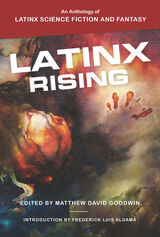 Latinx Rising: An Anthology of Latinx Science Fiction and Fantasy
Edited by Matthew David Goodwin / Introduction by Frederick Luis Aldama
Ohio State University Press, 2020 It has been half a century since a few now-canonical Latin American writers introduced magical realism to the world. In that time, new generations of Latinx writers and artists have used that watershed moment as a springboard into new and bold explorations of speculative and fantasy forms. Collectively, they have found exciting new ways to delve into Latinx identities and cultures across genres. Latinx Rising, the first anthology of science fiction and fantasy by Latinxs living in the United States, exuberantly displays the full range of their art.
The new and established voices assembled here (including Kathleen Alcalá, Carmen Maria Machado, Ernest Hogan, and other luminaries) invite us to imagine a Latinx past, present, and future that have not been whitewashed by mainstream perspectives. As in the best mixtapes, this anthology moves satisfyingly through the loud and brash, the quiet and thoughtful. There are ghosts, space aliens, robots—and a grandmother who unwittingly saves the universe through her cooking. The result is a deeply pleasurable read that pushes beyond magical realism and social realism to demonstrate all the thrilling possibilities of what Latinx literature can be.
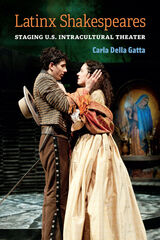 Latinx Shakespeares: Staging U.S. Intracultural Theater
Carla Della Gatta
University of Michigan Press, 2023 Latinx peoples and culture have permeated Shakespearean performance in the United States for over 75 years—a phenomenon that, until now, has been largely overlooked as Shakespeare studies has taken a global turn in recent years. Author Carla Della Gatta argues that theater-makers and historians must acknowledge this presence and influence in order to truly engage the complexity of American Shakespeares. Latinx Shakespeares investigates the history, dramaturgy, and language of the more than 140 Latinx-themed Shakespearean productions in the United States since the 1960s—the era of West Side Story. This first-ever book of Latinx representation in the most-performed playwright’s canon offers a new methodology for reading ethnic theater looks beyond the visual to prioritize aural signifiers such as music, accents, and the Spanish language. The book’s focus is on textual adaptations or performances in which Shakespearean plays, stories, or characters are made Latinx through stage techniques, aesthetics, processes for art-making (including casting), and modes of storytelling. The case studies range from performances at large repertory theaters to small community theaters and from established directors to emerging playwrights. To analyze these productions, the book draws on interviews with practitioners, script analysis, first-hand practitioner insight, and interdisciplinary theoretical lenses, largely by scholars of color. Latinx Shakespeares moves toward healing by reclaiming Shakespeare as a borrower, adapter, and creator of language whose oeuvre has too often been mobilized in the service of a culturally specific English-language whiteness that cannot extricate itself from its origins within the establishment of European/British colonialism/imperialism.
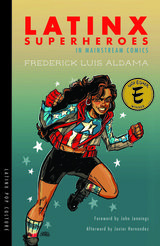 Latinx Superheroes in Mainstream Comics
Frederick Luis Aldama; Foreword by John Jennings; Afterword by Javier Hernandez
University of Arizona Press, 2017 Winner of the 2018 Eisner Award Winner for Best Scholarly/Academic Work
Whether good or evil, beautiful or ugly, smart or downright silly, able-bodied or differently abled, gay or straight, male or female, young or old, Latinx superheroes in mainstream comic book stories are few and far between. It is as if finding the Latinx presence in the DC and Marvel worlds requires activation of superheroic powers.
Latinx Superheroes in Mainstream Comics blasts open barriers with a swift kick. It explores deeply and systematically the storyworld spaces inhabited by brown superheroes in mainstream comic book storyworlds: print comic books, animation, TV, and film. It makes visible and lets loose the otherwise occluded and shackled. Leaving nothing to chance, it sheds light on how creators (authors, artists, animators, and directors) make storyworlds that feature Latinos/as, distinguishing between those that we can and should evaluate as well done and those we can and should evaluate as not well done.
The foremost expert on Latinx comics, Frederick Luis Aldama guides us through the full archive of all the Latinx superheros in comics since the 1940s. Aldama takes us where the superheroes live—the barrios, the hospitals, the school rooms, the farm fields—and he not only shows us a view to the Latinx content, sometimes deeply embedded, but also provokes critical inquiry into the way storytelling formats distill and reconstruct real Latinos/as.
Thoroughly entertaining but seriously undertaken, Latinx Superheroes in Mainstream Comics allows us to truly see how superhero comic book storyworlds are willfully created in ways that make new our perception, thoughts, and feelings.
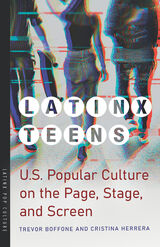 Latinx Teens: U.S. Popular Culture on the Page, Stage, and Screen
Trevor Boffone and Cristina Herrera
University of Arizona Press, 2022 What can Latinx youth contribute to critical conversations on culture, politics, identity, and representation? Latinx Teens answers this question and more by offering an energetic, in-depth look at how Latinx teenagers influence twenty-first-century U.S. popular culture.
In this exciting new book, Trevor Boffone and Cristina Herrera explore the diverse ways that contemporary mainstream film, television, theater, and young adult literature invokes, constructs, and interprets adolescent Latinidad. Latinx Teens shows how coming-of-age Latinx representation is performed in mainstream media, and how U.S. audiences consume Latinx characters and stories. Despite the challenges that the Latinx community face in both real and fictional settings, Latinx teens in pop culture forge spaces that institutionalize Latinidad. Teen characters make Latinx adolescence mainstream and situate teen characters as both in and outside their Latinx communities and U.S. mainstream culture, conveying the complexities of “fitting in,” and refusing to fit in all at the same time.
Fictional teens such as Spider-Man’s Miles Morales, I Am Not Your Perfect Mexican Daughter’s Julia Reyes, Party of Five’s Acosta siblings, and In the Heights’s Nina Rosario comprise a growing body of pop culture media that portray young Latinxs as three-dimensional individuals who have agency, authenticity, and serious charisma. Teenagers and young adults have always had the power to manifest social change, and this book acknowledges, celebrates, and investigates how Latinx teens in popular culture take on important current issues.
With a dynamic interdisciplinary approach, Latinx Teens explores how Latinxs on the cusp of adulthood challenge, transform, expand, and reimagine Latinx identities and their relationships to mainstream U.S. popular culture in the twenty-first century.
The book makes a critical intervention into Latinx studies, youth studies, and media cultures. Students and scholars alike will benefit from the book’s organization, complete with chapters that focus on specific mediums and conclude with suggestions for further reading and viewing. As the first book that specifically examines Latinx adolescence in popular culture, Latinx Teens insists that we must privilege the stories of Latinx teenagers in television, film, theater, and literature to get to the heart of Latinx popular culture. Exploring themes around representation, identity, gender, sexuality, and race, the works explored in this groundbreaking volume reveal that there is no single way to be Latinx, and show how Latinx youth are shaping the narrative of the Latinx experience for a more inclusive future.
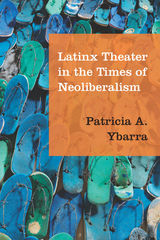 Latinx Theater in the Times of Neoliberalism
Patricia A. Ybarra
Northwestern University Press, 2018 Latinx Theater in the Times of Neoliberalism traces how Latinx theater in the United States has engaged with the policies, procedures, and outcomes of neoliberal economics in the Americas from the 1970s to the present.
Patricia A. Ybarra examines IMF interventions, NAFTA, shifts in immigration policy, the escalation of border industrialization initiatives, and austerity programs. She demonstrates how these policies have created the conditions for many of the most tumultuous events in the Americas in the last forty years, including dictatorships in the Southern Cone; the 1994 Cuban Rafter Crisis; femicides in Juárez, Mexico; the Zapatista uprising in Chiapas, Mexico; and the rise of narcotrafficking as a violent and vigorous global business throughout the Americas.
Latinx artists have responded to these crises by writing and developing innovative theatrical modes of representation about neoliberalism. Ybarra analyzes the work of playwrights María Irene Fornés, Cherríe Moraga, Michael John Garcés, Caridad Svich, Quiara Alegría Hudes, Victor Cazares, Jorge Ignacio Cortiñas, Tanya Saracho, and Octavio Solis. In addressing histories of oppression in their home countries, these playwrights have newly imagined affective political and economic ties in the Americas. They also have rethought the hallmark movements of Latin politics in the United States—cultural nationalism, third world solidarity, multiculturalism—and their many discontents.
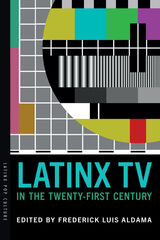 Latinx TV in the Twenty-First Century
Edited by Frederick Luis Aldama
University of Arizona Press, 2022 Latinx TV in the Twenty-First Century offers an expansive and critical look at contemporary television by and about U.S. Latinx communities. This volume is comprehensive in its coverage while diving into detailed and specific examples as it navigates the complex and ever-changing world of Latinx representation and creation in television.
In this volume, editor Frederick Luis Aldama brings together leading experts who show how Latinx TV is shaped by historical, social, cultural, regional, and global contexts. Contributors address head on harmful stereotypes in Latinx representation while giving key insights to a positive path forward. TV narratives by and about Latinx people exist across all genres. In this century, we see Latinx people in sitcoms, sci-fi, noir, soap operas, rom-coms, food shows, dramas, action-adventure, and more. Latinx people appear in television across all formats, from quick webisodes, to serialized big-arc narratives, to animation and everything in between. The diverse array of contributors to this volume delve into this rich landscape of Latinx TV from 2000 to today, spanning the ever-widening range of genres and platforms.
Latinx TV in the Twenty-First Century argues that Latinx TV is not just television—it’s an entire movement. Digital spaces and streaming platforms today have allowed for Latinx representation on TV that speaks to Latinx people and non-Latinx people alike, bringing rich and varied Latinx cultures into mainstream television and addressing urbanization, immigration, family life, language, politics, gender, sexuality, class, race, and ethnicity.
Once heavily underrepresented and harmfully stereotypical, Latinx representation on TV is beginning to give careful nuance to regional, communal, and familial experiences among U.S. Latinx people. This volume unpacks the negative implications of older representation and celebrates the progress of new representation, recognizing that television has come a long way, but there is still a lot of important work to do for truly diverse and inclusive representation.
Latter-day Christianity: Ten Basic Issues
Robert L. Millet
Foundation for Ancient Research and Mormon Studies, 1998 With the rapid and visible growth of the Church of Jesus Christ of Latter-day Saints, it was inevitable that doctrinal differences would arise between the Latter-day Saints and people of other faiths. Members of the LDS Church profess to be Christians, yet others doubt or do not understand this claim. The contributors to Latter-day Christianity hope that the 10 essays contained in this full-color, illustrated book will help Latter-day Saints who want to explain their beliefs and will be useful to people outside the LDS Church who want a simple and clear statement of those beliefs. The essays address such topics as whether Latter-day Saints are Christian and what they believe about God, the Bible, personal revelation, human deification, salvation, and proselytization.
 A Latterday Confucian: Reminiscences of William Hung (1893–1980)
Susan Chan Egan
Harvard University Press, 1987 As a scholar, William Hung was instrumental in opening China’s rich documentary past to modern scrutiny. As an educator, he helped shape one of twentieth-century China’s most remarkable institutions, Yenching University. A member of the buoyant, Western-educated generation that expected to transform China into a modern, liberal nation, he saw his hopes darken as political turmoil, war with Japan, and the Communist takeover led to a different future. yet his influence was widespread; for his students became leaders on both sides of the Taiwan Strait, and he continued to teach in the United States through the 1970s.
In 1978, he began recalling his colorful life to Susan Chan Egan in weekly taping sessions. Egan draws on these tapes to let a skillful raconteur tell for himself anecdotes from his life as a religious and academic activist with a flair for the flamboyant. His reminiscences encompass the issues and dilemmas faced by Chinese intellectuals of his period. Among the notables who figured in his life and memories were Hu Shih, H. H. Kung, Henry Winter Luce, John Leighton Stuart, Timothy Lew, and Lu Chihwei.
While retaining the flavor of Hung’s reminiscences, Egan explains the evolution and importance of his scholarly work; captures his blend of Confucianism, mystical Christianity, and iconoclastic thought; and describes his effect on those around him. For it was finally his unyielding integrity and personal kindness as much as his accomplishments that caused him to be revered by colleagues and generations of students.
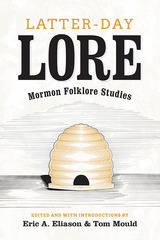 Latter-day Lore: Mormon Folklore Studies
Eric A. Eliason
University of Utah Press, 2013 Latter-day Lore gathers nearly thirty seminal works in Mormon folklore scholarship from its beginnings in the late nineteenth century to the present in order to highlight the depth, breadth, and richness of that scholarship. This examination of LDS folklore studies reveals theoretical, methodological, and topical shifts that also reflect shifts in the field at large. Areas for future research are also suggested.
The thorough introduction by the volume editors elucidates the major influences, tensions, and questions shaping the study of Mormon folklore. The book is divided into six parts according to major thematic and topical patterns. The extensive introductory essays preceding each of the six parts provide invaluable historical, cultural, and theoretical contexts to frame the studies that follow: society, symbols, and landscape of regional culture; formative customs and traditions; the sacred and the supernatural; pioneers, heroes, and the historical imagination; humor; and the international contexts of Mormon folklore.
While exploring the ground that scholars have covered over the past century, Eliason and Mould also illuminate those areas of LDS folklore that have been understudied, exposing fertile areas for future research. Providing the most up-to-date and comprehensive survey of Mormon folklore studies available, Latter-day Lore is an indispensible resource for students, scholars, and readers interested in folklore, Mormon studies, anthropology, sociology, literature, and religious studies.
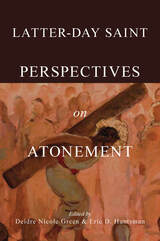 Latter-day Saint Perspectives on Atonement
Edited by Deidre Nicole Green and Eric D. Huntsman
University of Illinois Press, 2024 New approaches to a central area of Latter-day Saint belief The Church of Jesus Christ of Latter-day Saints and other Christians have always shared a fundamental belief in the connection between personal salvation and the suffering, death, and resurrection of Jesus Christ. While having faith in and experiencing the atonement of Christ remains a core tenet for Latter-day Saints, some thinkers have in recent decades reconsidered traditional understandings of atonement. Deidre Nicole Green and Eric D. Huntsman edit a collection that brings together multiple and diverse approaches to thinking about Latter-day Saint views on this foundational area of theology. The essayists draw on and go beyond a wide range of perspectives, classical atonement theories, and contemporary reformulations of atonement theory. The first section focuses on scriptural and historical foundations while the second concentrates on theological explorations. Together, the contributors evaluate what is efficacious and ethical in the Latter-day Saint outlook and offer ways to reconceive those views to provide a robust theological response to contemporary criticisms about atonement. Contributors: Nicholas J. Frederick, Fiona Givens, Deidre Nicole Green, Sharon J. Harris, J.B. Haws, Eric D. Huntsman, Benjamin Keogh, Ariel Bybee Laughton, Adam S. Miller, Jenny Reeder, T. Benjamin Spackman, and Joseph M. Spencer
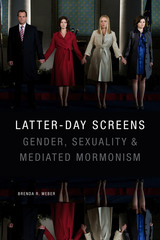 Latter-day Screens: Gender, Sexuality, and Mediated Mormonism
Brenda R. Weber
Duke University Press, 2019 From Sister Wives and Big Love to The Book of Mormon on Broadway, Mormons and Mormonism are pervasive throughout American popular media. In Latter-day Screens, Brenda R. Weber argues that mediated Mormonism contests and reconfigures collective notions of gender, sexuality, race, spirituality, capitalism, justice, and individualism. Focusing on Mormonism as both a meme and an analytic, Weber analyzes a wide range of contemporary media produced by those within and those outside of the mainstream and fundamentalist Mormon churches, from reality television to feature films, from blogs to YouTube videos, and from novels to memoirs by people who struggle to find agency and personhood in the shadow of the church's teachings. The broad archive of mediated Mormonism contains socially conservative values, often expressed through neoliberal strategies tied to egalitarianism, meritocracy, and self-actualization, but it also offers a passionate voice of contrast on behalf of plurality and inclusion. In this, mediated Mormonism and the conversations on social justice that it fosters create the pathway toward an inclusive, feminist-friendly, and queer-positive future for a broader culture that uses Mormonism as a gauge to calibrate its own values.
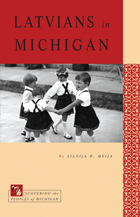 Latvians in Michigan
Silvija D. Meija
Michigan State University Press, 2005 Latvians have contributed to the cultural mosaic and economy of Michigan far more than one might imagine. There are three large Latvian communities in Michigan—Kalamazoo, Detroit, and Grand Rapids—with several smaller enclaves elsewhere in the state. An underlying goal of Latvians who now live in Michigan, as well as other parts of the United States and Canada, is to maintain their language and culture. More than five thousand Latvians came to Michigan after World War II, found gainful employment, purchased homes, and became a part of the Michigan population. Most sought to reeducate themselves and struggled to educate their children in Michigan’s many colleges and universities. Latvians in Michigan examines Latvia and its history, and describes how World War II culminated in famine, death, and eventual flight from their homeland by many Latvian refugees. After the war ended, most Latvian emigrants eventually made their way to Sweden or Germany, where they lived in displaced persons camps. From there, the emigrants were sponsored by individuals or organizations and they moved once again to other parts of the world. Many came to the United States, where they established new roots and tried to perpetuate their cultural heritage while establishing new lives.
Laud Humphreys: Prophet of Homosexuality and Sociology
John F. Galliher, Wayne Brekhus, and David P. Keys
University of Wisconsin Press, 2004 Laud Humphreys (1930–1988) was a pioneering and fearless sociologist, an Episcopal priest, and a civil rights, gay, and antiwar activist. In graduate school during the late 1960s, he conducted extensive fieldwork in public restrooms in a St. Louis city park to discover patterns of impersonal sex among men. He published the results in Tearoom Trade. Three decades later the book still triggers many debates about the ethics of his research methods. In 1974, he was the first sociologist to come out as gay. Laud Humphreys: Prophet of Homosexuality and Sociology examines the groundbreaking work through the life of a complex man and the life of the man through his controversial work. It is an invaluable contribution to sociology and a fascinating record of a courageous life.
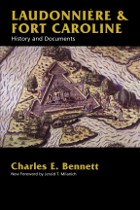 Laudonniere & Fort Caroline: History and Documents
Charles Bennett and foreword by Jerald T. Milanich
University of Alabama Press, 2001 This classic historical resource remains the most complete work on the establishment of Fort Caroline, which heralded the start of permanent settlement by Europeans in North America. America's history was shaped in part by the clash of cultures that took place in the southeastern United States in the 1560s. Indians, French, and Spaniards vied to profit from European attempts to colonize the land Juan Ponce de Leon had named La Florida. Rene de Goulaine de Laudonniere founded a French Huguenot settlement on the St. Johns River near present-day Jacksonville and christened it Fort Caroline in 1564, but only a year later the hapless colonists were expelled by a Spanish fleet led by Pedro Menendez de Aviles. The Spanish in turn established a permanent settlement at St. Augustine, now the oldest city in the United States, and blocked any future French claims in Florida. Using documents from both French and Spanish archives, Charles E. Bennett provides the first comprehensive account of the events surrounding the international conflicts of this 16th-century colonization effort, which was the actual "threshold" of a new nation. The translated Laudonniere documents also provide a wealth of information about the natural wonders of the land and the native Timucua Indians encountered by the French. As a tribe, the Timucua would be completely gone by the mid-1700s, so these accounts are invaluable to ethnologists and anthropologists. With this republication of Laudonniere & Fort Caroline, a new generation of archaeologists, anthropologists, and American colonial historians can experience the New World through the adventures of the French explorers. Visitors to Fort Caroline National Memorial will also find the volume fascinating reading as they explore the tentative early beginnings of a new nation.
Laughing Africa
Terese Svoboda
University of Iowa Press, 1990 There is a large intelligence present in Terese Svoboda's poetry and not a shred of sentimentality. From the dramatic coming-of-age in the title poem to the question posed in the last section, "What will I say to my child as it snows / that last winter's papery afterglow?" she continually searches for a responsible, compassionate world, one in which the only illusion is art. The mythological central poem, "The Ranchhand's Daughter," shows the gods of isolation and incest warring against each other, destroying a triangle of love and cut into the granite-faced Badlands. It is only in the sensuous landscape of the domestic that possible redemption occurs: the father who dreams of running for president, the mother who signs in the mirror, the couple in the shower with "confidence rising between them." Faced with the inevitable losses, Svoboda strives for meaning and beauty.
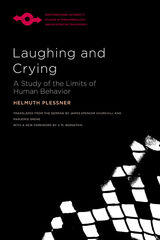 Laughing and Crying: A Study of the Limits of Human Behavior
Helmuth Plessner; Translated from the German by James Spencer Churchill and Marjorie Grene and with a new foreword by J. M. Bernstein
Northwestern University Press, 2020 First published in German in 1940 and widely recognized as a classic of philosophical anthropology, Laughing and Crying is a detailed investigation of these two particularly significant types of expressive behavior, both in themselves and in relation to human nature. Elaborating the philosophical account of human life he developed in Levels of Organic Life and the Human: An Introduction to Philosophical Anthropology, Plessner suggests that laughing and crying are expressions of a crisis brought about in certain situations by the relation of a person to their body.
With a new foreword by J. M. Bernstein that situates the book within the broader framework of Plessner’s philosophical anthropology and his richly suggestive and powerful account of human bodily life, Laughing and Crying is essential reading for anyone interested in the philosophy of the body, emotions, and human behavior.
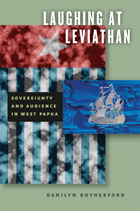 Laughing at Leviathan: Sovereignty and Audience in West Papua
Danilyn Rutherford
University of Chicago Press, 2012 For West Papua and its people, the promise of sovereignty has never been realized, despite a long and fraught struggle for independence from Indonesia. In Laughing at Leviathan, Danilyn Rutherford examines this struggle through a series of interlocking essays that drive at the core meaning of sovereignty itself—how it is fueled, formed, and even thwarted by pivotal but often overlooked players: those that make up an audience. Whether these players are citizens, missionaries, competing governmental powers, nongovernmental organizations, or the international community at large, Rutherford shows how a complex interplay of various observers is key to the establishment and understanding of the sovereign nation-state. Drawing on a wide array of sources, from YouTube videos to Dutch propaganda to her own fieldwork observations, Rutherford draws the history of Indonesia, empire, and postcolonial nation-building into a powerful examination of performance and power. Ultimately she revises Thomas Hobbes, painting a picture of the Leviathan not as a coherent body but a fragmented one distributed across a wide range of both real and imagined spectators. In doing so, she offers an important new approach to the understanding of political struggle.
Laughing at the Devil: Seeing the World with Julian of Norwich
Amy Laura Hall
Duke University Press, 2018 Laughing at the Devil is an invitation to see the world with a medieval visionary now known as Julian of Norwich, believed to be the first woman to have written a book in English. (We do not know her given name, because she became known by the name of a church that became her home.) Julian “saw our Lord scorn [the Devil's] wickedness” and noted that “he wants us to do the same.” In this impassioned, analytic, and irreverent book, Amy Laura Hall emphasizes Julian's call to scorn the Devil. Julian of Norwich envisioned courage during a time of fear. Laughing at the Devil describes how a courageous woman transformed a setting of dread into hope, solidarity, and resistance.
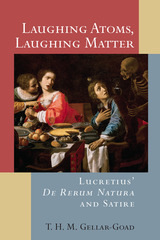 Laughing Atoms, Laughing Matter: Lucretius' De Rerum Natura and Satire
T. H. M. Gellar-Goad
University of Michigan Press, 2020 Laughing Atoms, Laughing Matter: Lucretius' De Rerum Natura and Satire offers the first comprehensive examination of Roman epic poet Lucretius’ engagement with satire. Author T. H. M. Gellar-Goad argues that what has often been understood as an artfully persuasive exposition of Epicurean philosophy designed to convert the uninitiated is actually a mimesis of the narrator’s attempt to effect such a conversion on his internal narrative audience—a performance for the true audience of the poem, whose members take pleasure from uncovering the literary games and the intertextual engagement that the performance entails.
Gellar-Goad aims to track De Rerum Natura along two paths of satire: first, the broad boulevard of satiric literature from the beginnings of Greek poetry to the plays, essays, and broadcast media of the modern world; and second, the narrower lane of Roman verse satire, satura, beginning with early authors Ennius and Lucilius and closing with Flavian poet Juvenal. Lucilius is revealed as a major, yet overlooked, influence on Lucretius.
By examining how Lucretius’ poem employs the tools of satire, we gain a richer understanding of how it interacts with its purported philosophical program.
Laughing in the Light
Jimmy Santiago Baca
Museum of New Mexico Press, 2020 Jimmy Santiago Baca’s newest collection of essays picks up where his earlier acclaimed book, Working in the Dark, left off. Laughing in the Light is the writer’s first attempt to revisit his past, launching into the past twenty years with a renewed heart and wizened spirit as he shares his experiences, what he has learned along the way, and how his views have changed. Baca delves deeper into contemporary issues as he explores themes ranging from arts, culture, education, and justice reform.
 Laughing Lost in the Mountains: Poems of Wang Wei
Wei Wang
University Press of New England, 1992 Wang Wei was one of the most celebrated poets of China's Tang Dynasty (618-907). An influential painter and practitioner of Chan (Zen) Buddhism, many of his poems contain concise and evocative descriptions of nature whose elegant minimalism offers subtle expression of a transcendence from everyday life. While this purity of poetic expression is what Wang Wei's reputation is built upon, he lived a courtly life of highs and lows in a tumultuous era, suffering demotions and exile, imprisonment and rehabilitation, all of which are evidenced in his verse. Wang Wei's poems grapple with the trappings of worldly life and the quest for enlightenment, painting a complex picture of both his psyche and his Chan discipline. Laughing Lost in the Mountains includes translations of poems running the spectrum of Wang Wei's subjects, as well as an extensive introduction that sheds light on Wang Wei's craft, spirituality, and historical context.
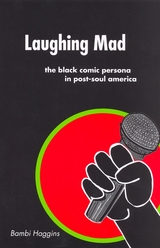 Laughing Mad: The Black Comic Persona in Post-Soul America
Haggins, Bambi
Rutgers University Press, 2007 Winner of the 2008 Katherine Singer Kovacs Book Award
Prior to the civil rights movement, comedians performed for audiences that were clearly delineated by race. Black comedians performed for black audiences and white comedians performed for whites. Yet during the past forty-five years, black comics have become progressively more central to mainstream culture. In Laughing Mad , Bambi Haggins looks at how this transition occurred in a variety of media and shows how this integration has paved the way for black comedians and their audiences to affect each other. Historically, African American performers have been able to use comedy as a pedagogic tool, interjecting astute observations about race relations while the audience is laughing. And yet, Haggins makes the convincing argument that the potential of African American comedy remains fundamentally unfulfilled as the performance of blackness continues to be made culturally digestible for mass consumption. Rather than presenting biographies of individual performers, Haggins focuses on the ways in which the comic persona is constructed and changes across media, from stand-up, to the small screen, to film. She examines the comic televisual and cinematic personae of Dick Gregory, Bill Cosby, Flip Wilson, and Richard Pryor and considers how these figures set the stage for black comedy in the next four decades. She reads Eddie Murphy and Chris Rock as emblematic of the first and second waves of post-civil rights era African American comedy, and she looks at the socio-cultural politics of Whoopi Goldberg's comic persona through the lens of gender and crossover. Laughing Mad also explores how the comedy of Dave Chappelle speaks to and for the post-soul generation. A rigorous analytic analysis, this book interrogates notions of identity, within both the African American community and mainstream popular culture. Written in engaging and accessible prose, it is also a book that will travel from the seminar room, to the barbershop, to the kitchen table, allowing readers to experience the sketches, stand-up, and film comedies with all the laughter they deserve.
 Laughing Matters: Comic Tradition in India
Lee Siegel
University of Chicago Press, 1987 "How can anyone laugh who knows of old age, disease, and death?"—Buddhacarita
This question, so solemnly posed by the young Buddha, first led Lee Siegel to examine the hitherto unexplored realm of Indian comedy. Laughing Matters is Siegel's account of two intersecting journeys: a search for comic traditions created and preserved in Sanskrit literature and a journey through modern India in quest of a laughter that persists across time and culture.
Hearing a boisterous and bawdy voice from India's past, Siegel has provided original and highly entertaining translations of Sanskrit literature that reveal a sparkling sensibility embedded in the texts. These translations are integrated with a detailed analysis of the types and structures of India's mirth. Siegel develops an original theory of comedy and laughter, applying it to reveal the humor in the ancient works. Defining sacred and profane comedy and the "taste" and "erotics" of laughter, he delineates two main Indian categories of comedy—laughter at others and laughter at oneself—which are roughly parallel to the Western traditions of satire and humor. He examines these categories in all of their forms and functions: satires of manners, social satire, and religious satire; and human and divine comedy. Siegel concludes by presenting his perceptions of humor in modern India as seen through cartoons, movies, books, and social gatherings.
Laughing Matters is both a serious and a hilarious study of the Indian comic sense of life—a vision formed in the convergence of the bitter insight of satire and the sweet outlook of humor. Past and present, the contextual and the universal, scholarship and the picaresque, are all interwoven in this original treatise on the aesthetics of comedy and the psychology of laughter.
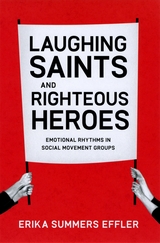 Laughing Saints and Righteous Heroes: Emotional Rhythms in Social Movement Groups
Erika Summers Effler
University of Chicago Press, 2010 Why do people keep fighting for social causes in the face of consistent failure? Why do they risk their physical, emotional, and financial safety on behalf of strangers? How do these groups survive high turnover and emotional burnout?
To explore these questions, Erika Summers Effler undertook three years of ethnographic fieldwork with two groups: anti–death penalty activists STOP and the Catholic Workers, who strive to alleviate poverty. In both communities, members must contend with problems that range from the broad to the intimately personal. Adverse political conditions, internal conflict, and fluctuations in financial resources create a backdrop of daily frustration—but watching an addict relapse or an inmate’s execution are much more devastating setbacks. Summers Effler finds that overcoming these obstacles, recovering from failure, and maintaining the integrity of the group require a constant process of emotional fine-tuning, and she demonstrates how activists do this through thoughtful analysis and a lucid rendering of their deeply affecting stories.
Laughing Stock
Thomas S. Stribling
University of Alabama Press, 2003 Normal0falsefalsefalseMicrosoftInternetExplorer4 In the intense blossoming of American literary talent between the World Wars, T.S. Stribling took his place with Faulkner, Hemingway, Dos Passos, and other members of his generation with the Pulitzer Prize in 1933 for his bestselling novel The Store. In Laughing Stock, Stribling’s autobiography, the gifted writer reflects with humor, irony, and passion on his trajectory from a remote southern town to the literary heights of Paris and New York.
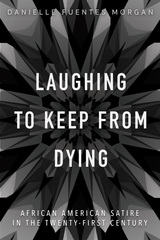 Laughing to Keep from Dying: African American Satire in the Twenty-First Century
Danielle Fuentes Morgan
University of Illinois Press, 2020 By subverting comedy's rules and expectations, African American satire promotes social justice by connecting laughter with ethical beliefs in a revolutionary way. Danielle Fuentes Morgan ventures from Suzan-Lori Parks to Leslie Jones and Dave Chappelle to Get Out and Atlanta to examine the satirical treatment of race and racialization across today's African American culture. Morgan analyzes how African American artists highlight the ways that society racializes people and bolsters the powerful myth that we live in a "post-racial" nation. The latter in particular inspires artists to take aim at the idea racism no longer exists or the laughable notion of Americans "not seeing" racism or race. Their critique changes our understanding of the boundaries between staged performance and lived experience and create ways to better articulate Black selfhood. Adventurous and perceptive, Laughing to Keep from Dying reveals how African American satirists unmask the illusions and anxieties surrounding race in the twenty-first century.
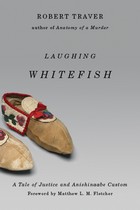 Laughing Whitefish
Robert Traver
Michigan State University Press, 2011 Laughing Whitefish is an engrossing trail drama of ethnic hostility and the legal defense of Indian treaties. Young Lawyer William (Willy) Poe puts out a shingle in Marquette, Michigan, in 1873, hoping to meet a woman who will take him seriously. His first client, the alluring Charlotte Kawbawgam, known as Laughing Whitefish, offers an enticing challenge—a compelling case of injustice at the hands of powerful mining interests. Years earlier, Charlotte's father led the Jackson Mining Company to a lucrative iron ore strike, and he was then granted a small share in the mine, which the new owners refuse to honor. Willy is now Charlotte's sole recourse for justice. Laughing Whitefish is a gripping account of barriers between Indian people and their legal rights. These poignant conflicts are delicately wrought by the pre-eminent master of the trial thriller, the best-selling author of Anatomy of a Murder. This new edition includes a foreword by Matthew L.M. Fletcher, Director of the Indigenous Law and Policy Center at Michigan State University, that contextualizes the novel and actual decisions of the Michigan Supreme Court ruling in favor of Charlotte.
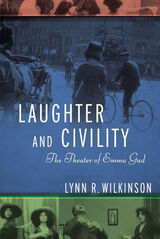 Laughter and Civility: The Theater of Emma Gad
Lynn R. Wilkinson
University of Wisconsin Press, 2020 Emma Gad (1852–1921) was a prolific Danish playwright at the turn of the twentieth century. With sparkling prose and witty dialogue, Gad’s ambitious and sophisticated theatrical productions raised important and still pressing questions about sexuality and morality—including the status of women in marriage, divorce, same‐sex desire, and marital infidelity. Through her plays she engaged with contemporaries like Henrik Ibsen, Oscar Wilde, and George Bernard Shaw, yet she is primarily remembered for her etiquette book, Takt og Tone.
Laughter and Civility, the first biographical and scholarly volume to examine and contextualize her dramas, deeply explores how and why influential women are so often excluded from the canon. Lynn R. Wilkinson provides insightful readings into all twenty-five of Gad’s plays and demonstrates how writers and intellectuals of the time, including Georg and Edvard Brandes, took her critically acclaimed work seriously. This volume rightfully reinstates Emma Gad’s work into the repertory of European drama and is crucial for scholars interested in turn‐of‐the‐century Scandinavian drama, literature, culture, and politics.
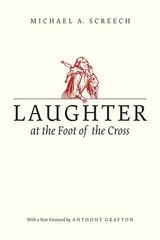 Laughter at the Foot of the Cross
Michael A. Screech
University of Chicago Press, 2015 “Christian laughter is a maze: you could easily get snarled up within it.” So says Michael A. Screech in his note to readers preceding this collection of fifty-three elegant and pithy essays. As Screech reveals, the question of whether laughter is acceptable to the god of the Old and New Testaments is a dangerous one.
But we are fortunate in our guide: drawing on his immense knowledge of the classics and of humanists like Erasmus and Rabelais—who used Plato and Aristotle to interpret the Gospels—and incorporating the thoughts of Aesop, Calvin, Lucian of Samosata, Luther, Socrates, and others, Screech shows that Renaissance thinkers revived ancient ideas about what inspires laughter and whether it could ever truly be innocent. As Screech argues, in the minds of Renaissance scholars, laughter was to be taken very seriously. Indeed, in an era obsessed with heresy and reform, this most human of abilities was no laughing matter.
 Laughter Before Sleep
Robert Pack
University of Chicago Press, 2011 One of America’s most eminent nature poets, Robert Pack has won the acclaim of writers, critics, and readers from Stephen Jay Gould to Mark Strand. In his latest collection, Laughter Before Sleep, Pack carries on his themes of family and friends, responsibility to the natural world of evolved diversity, the transience of life, the fragility of happiness, and the consolations offered by art and music. Laughter Before Sleep weighs the nature of endings from the perspective of old age and embraces the humor and play of memory that keep mortality at bay.As we are carried along with Pack’s lyrical, sensitive, and intelligent verse, he takes us on a moving but often comic journey toward the end of life. In the opening section, Pack composes poems that meditate upon a sense of his own diminishing and the meaning of absences. The middle sections form episodes of a memoir in verse, moving from family to history and back again, reflecting on the power of anecdote to shape a life in retrospect. With the final section, Pack recalls his unfulfilled plan to raise penguins in Montana, offers a panegyric on Darwin’s nose, and makes the mistake of trying to impress a police officer with a book of poems. Filled with charm and wit but also with philosophical melancholy, Laughter Before Sleep is a superb addition to the poet’s oeuvre.
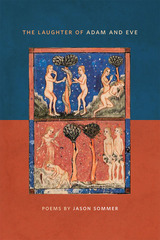 The Laughter of Adam and Eve
Jason Sommer
Southern Illinois University Press, 2013 Near the beginning, just after the fall, was laughter—at least as Jason Sommer imagines it. In the title poem, Eve catches Adam’s hilarity over what passes for a tree outside of Eden, their laughter a heady combination of longing, defiance, and perhaps even relief, through which they find they now possess “a knowledge of evil that is good,” an understanding that will carry them through life after paradise. Through settings mythical, historical and biblical, through characters that range from Gunga Din to St. Kevin of Glendalough, the poems in this book often search out meaning in the tracing of origins: of a bird’s song, of laughter, of a word, of language itself. Poems explore the source of the word brouhaha, the song of the “resignation bird,” and the dangerous way a poem of Anna Akhmatova enters the world, under the eyes and ears of Stalin’s secret police, escaping the house arrest its author must endure. In The Laughter of Adam and Eve, Sommer speaks from a multitude of voices and perspectives, in short, formal lyrics as well as longer free-verse narratives. From the archetypal parents of us all, down through anonymous voices, throughout these pages, women and men speak to—and of—each other, in many roles and relations—as lover and beloved, as child and parent, as dreamer and dreamt of. The poems attempt to travel beyond the traditional binary in search of the common thread that binds us to one another. Perhaps chief among them is story: whether recasting myth so that Pygmalion and Narcissus become a single figure or using an Appalachian tale retold as a message, lover to lover, these poems narrate, while engaging deeply with those special properties that poetry can bring to story.
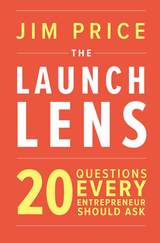 The Launch Lens: 20 Questions Every Entrepreneur Should Ask
Jim Price
Michigan Publishing, 2018 Too often, innovative individuals and teams come up with new-business ideas only to hit the proverbial wall, become discouraged, and fail to follow through. How can you get more traction with your ideas and see them through to fruition? As with so many things in life, half the battle is knowing what questions to ask. In this book, serial entrepreneur and business professor Jim Price illustrates a simple, yet powerful framework known as the Launch Lens. Price’s method leads innovators through a structured process to clearly define and communicate their concept, distinguish the good ideas from the not-so-good, and lay the cornerstones of the startup planning process. The Launch Lens is comprised of twenty critical questions or Focal Points, organized according the classic new-business planning categories: problem, solution, market, business model, marketing and sales, finance, capital, and team. The book leads readers through explanations of how to address each question, illustrated by useful examples, tips, and red flags. Already in active use by thousands of innovators – ranging from aspiring entrepreneurs to early-stage startup teams and venture investors, from incubators and accelerators to intrapreneurs within established corporations and non-profits – The Launch Lens can help you bring your new-business concepts into clear focus.
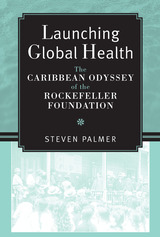 Launching Global Health: The Caribbean Odyssey of the Rockefeller Foundation
Steven Palmer
University of Michigan Press, 2010 From the Rockefeller Foundation to the Bill and Melinda Gates Foundation, U.S. philanthropies have played a leading role in the evolution of international health. Launching Global Health examines one of the earliest of these initiatives abroad, the Rockefeller Foundation's International Health Board. The flagship agency made its first call in British Guiana in 1914 to experiment with its new "American method" for the treatment of hookworm disease. Within months it was involved in ambitious hookworm programs in six Central American and Caribbean sites, its directors self-consciously choosing to test run the prototype for their global project in the nearest and clearest domain of American imperial influence. These efforts continued until 1930, when most of the International Health Board hookworm campaigns had evolved into public health projects of a different nature. Launching Global Health is the first book to explore the inaugural Rockefeller Foundation campaigns in depth and to treat them as an ensemble---as a laboratory for discovering and testing the elements of a global health system for the twentieth century. Orienting the study according to the priorities and perspectives of the social and cultural history of medicine and marrying the results with social science and institutional approaches, Steven Palmer rediscovers elements and dynamics in the original history of global health that were either discarded or that have continued to operate beneath the radar of scholarship. In particular, Palmer examines the extraordinary encounters that took place between the Rockefeller proselytizers of biomedicine and public health and the diverse populations whom they were attempting to help. Launching Global Health devotes special attention to the health narratives and practices of laboring people of different ethnicities and how they clashed and blended with the stories and rituals being promoted by the Rockefeller Foundation, ultimately showing the locally assembled health teams of microscopists, inspectors, and dispensers to have been active agents in the shaping of encounters between imperial and popular medicine. A volume in the series Conversations in Medicine and Society.
 Launching Large-Scale Library Initiatives: Innovation and Collaboration
Valerie Horton
American Library Association, 2021 The necessity for library leaders to demonstrate that libraries are innovative, collaborative, and can provide eye-catching, transformational services and programs to their communities cannot be understated. But libraries do not suffer from a lack of big ideas. What library workers really need is a roadmap for making those impactful ideas become reality. Based in part on her extensive experience coordinating large-scale initiatives, this guide from ASCLA Leadership and Professional Achievement Award-winning consultant Horton will walk you through formulating and shaping your ideas into sellable, actionable projects. You’ll learn - techniques drawn from project management experts and researchers from many fields;
- why Big Hairy Audacious Goals (BHAG) are worth your time and effort;
- guidance on upscaling your idea into a project or service that can be launched at a statewide, community wide, or library consortium level;
- several case studies of large-scale library projects, with analysis of why they were successful;
- how to successfully combine foundational principles of innovation with practical methods for collaboration;
- methods for extending your reach beyond your usual sphere to partner with other libraries and organizations;
- how to sharpen your skills of persuasion;
- no-nonsense advice on leading teams of disparate individuals; and
- evaluative tips for affirming the project is on the right track and then correcting course as needed.
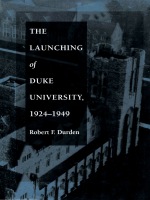 The Launching of Duke University, 1924–1949
Robert F. Durden
Duke University Press, 1993 In this rich and authoritative history, distinguished historian Robert F. Durden tells the story of the formation of Duke University, beginning with its creation in 1924 as a new institution organized around Trinity College. As Durden reveals, this narrative belongs first and foremost to Duke University's original President, William Preston Few, whose visionary leadership successfully launched the building of the first voluntarily supported research university in the South. In focusing on Duke University's most formative and critical years—its first quarter century—Durden commemorates Few's remarkable successes while recognizing the painful realities and uncertainties of a young institution.
Made possible by a gift from James B. Duke, the wealthiest member of the family that had underwritten Trinity College since 1890, Duke University was organized with Few as president. Few's goal was to turn Duke into a world-class institution of higher education and these early years saw the development of much of what we know as Duke University today. Drawing on extensive archival material culled over a ten-year period, Durden discusses the building of the Medical Center, the rebuilding of the School of Law, the acquisition of the Duke Forest and development of the School of Forestry, the nurturing of the Divinity School, and the enrichment of the Graduate School of Arts and Sciences.
It was also during this period, as Durden details, that such treasures as the Sarah P. Duke Gardens were created, as well as some near treasures, as seen by the failed attempt to start an art museum. Although the story of the birth of this University belongs largely to William Preston Few, other people figure prominently and are discussed at length. Alice Baldwin, who led in the establishment of the Woman's College, emerges as a fascinating figure, as do William H. Wannamaker, James B. Duke, William Hanes Ackland, Robert L. Flowers, Justin Miller, and Wilburt Cornell Davision, among others.
Although impressive growth occurred in Duke's formative years, tensions also arose. The need to strike an institutional balance between the twin demands of teaching and research, of regional versus national status, combined with continual shortages of funds, created occasional obstacles. The problem of two sets of trustees, one for the university and another for the Duke Endowment, loomed largest of all. As Few himself said, during these early years Duke successfully embarked on a long journey, for it was not until after World War II that Duke University consolidated the growth begun in the inter-war years.
An important contribution to the history of Southern higher education as well as to Duke University, this book will be of great interest to historians, alumni, and friends of Duke University alike.
Laura Battiferra and Her Literary Circle: An Anthology: A Bilingual Edition
Laura Battiferra degli Ammannati
University of Chicago Press, 2006 Internationally known during her lifetime, Laura Battiferra (1523-89) was a gifted and prolific poet in Renaissance Florence. The author of nearly 400 sonnets remarkable for their subtlety, intricate narrative structure, and learned allusions, Battiferra, who was married to the prominent sculptor and architect Bartolomeo Ammannati, traversed an elite literary and artistic network, circulating her verse in a complex and intellectually fecund exchange with some of the most illustrious figures in Italian history. In this bilingual anthology, Victoria Kirkham gathers Battiferra's most essential writing, including newly discovered poems, which provide modern readers with a valuable social chronicle of sixteenth-century Italy and the courtly culture of the Counter-Reformation.
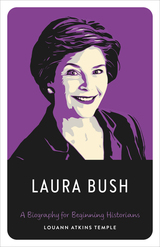 Laura Bush: A Biography for Beginning Historians
Louann Atkins Temple
University of Texas Press, 2025 A brief biography of Laura Bush for young readers. Louann Temple is a lifelong Texan with a personal passion for arts and education who believes that biography, with its emphasis on personalities, is ideal for introducing young people to history, with its focus on events. Temple is uniquely situated to write this biography for young readers, as she has been personally acquainted with many important people in presidential history, First Lady Laura Bush included, and she has mentored countless middle and high school students, preparing them for college admission. Laura Bush highlights the key events in the life of the First Lady; explores the life lessons afforded by her legacy; and reflects on the broad historical issues during her time in the White House from 2001 to 2009. Married to the forty-third president, George W. Bush, Laura Bush dedicated her time as First Lady to promoting education and literacy for Americans. Enhanced with a carefully curated selection of black and white photographs from three presidential libraries, this biography for beginning historians is poised to bring the best of biography and history to a new generation of readers.
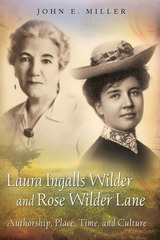 Laura Ingalls Wilder and Rose Wilder Lane: Authorship, Place, Time, and Culture
John E. Miller
University of Missouri Press, 2008 The mother-daughter partnership that produced the Little House books has fascinated scholars and readers alike. Now, John E. Miller, one of America’s leading authorities on Laura Ingalls Wilder and Rose Wilder Lane, combines analyses of both women to explore this collaborative process and shows how their books reflect the authors’ distinctive views of place, time, and culture. Along the way, he addresses the two most controversial issues for Wilder/Lane aficionados: how much did Lane actually contribute to the writing of the Little House books, and what was Wilder’s real attitude toward American Indians.
Interpreting these writers in their larger historical and cultural contexts, Miller reconsiders their formidable artistic, political, and literary contributions to American cultural life in the 1930s. He looks at what was happening in 1932—from depression conditions and politics to chain stores and celebrity culture—to shed light on Wilder’s life, and he shows how actual “little houses” established ideas of home that resonated emotionally for both writers.
In considering each woman’s ties to history, Miller compares Wilder with Frederick Jackson Turner as a frontier mythmaker and examines Lane’s unpublished history of Missouri in the context of a contemporaneous project, Thomas Hart Benton’s famous Jefferson City mural. He also looks at Wilder’s Missouri Ruralist columns to assess her pre–Little House values and writing skills, and he readdresses her literary treatment of Native Americans. A final chapter shows how Wilder’s and Lane’s conservative political views found expression in their work, separating Lane’s more libertarian bent from Wilder’s focus on writing moralist children’s fiction.
These nine thoughtful essays expand the critical discussion on Wilder and Lane beyond the Little House. Miller portrays them as impassioned and dedicated writers who were deeply involved in the historical changes and political challenges of their times—and contends that questions over the books’ authorship do not do justice to either woman’s creative investment in the series. Miller demystifies the aura of nostalgia that often prevents modern readers from seeing Wilder as a real-life woman, and he depicts Lane as a kindred artistic spirit, helping readers better understand mother and daughter as both women and authors.
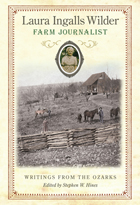 Laura Ingalls Wilder, Farm Journalist: Writings from the Ozarks
Edited by Stephen W. Hines
University of Missouri Press, 2007 Before Laura Ingalls Wilder found fame with her Little House books, she made a name for herself with short nonfiction pieces in magazines and newspapers. Read today, these pieces offer insight into her development as a writer and depict farm life in the Ozarks—and also show us a different Laura Ingalls Wilder from the woman we have come to know. This volume collects essays by Wilder that originally appeared in the Missouri Ruralist between 1911 and 1924. Building on the initial compilation of these articles under the title Little House in the Ozarks, this revised edition marks a more comprehensive collection by adding forty-two additional Ruralist articles and restoring passages previously omitted from other articles. Writing as “Mrs. A. J. Wilder” about modern life in the early twentieth-century Ozarks, Laura lends her advice to women of her generation on such timeless issues as how to be an equal partner with their husbands, how to support the new freedoms they’d won with the right to vote, and how to maintain important family values in their changing world. Yet she also discusses such practical matters as how to raise chickens, save time on household tasks, and set aside time to relax now and then. New articles in this edition include “Making the Best of Things,” “Economy in Egg Production,” and “Spic, Span, and Beauty.” “Magic in Plain Foods” reflects her cosmopolitanism and willingness to take advantage of new technologies, while “San Marino Is Small but Mighty” reveals her social-political philosophy and her interest in cooperation and community as well as in individualism and freedom. Mrs. Wilder was firmly committed to living in the present while finding much strength in the values of her past. A substantial introduction by Stephen W. Hines places the essays in their biographical and historical context, showing how these pieces present Wilder’s unique perspective on life and politics during the World War I era while commenting on the challenges of surviving and thriving in the rustic Ozark hill country. The former little girl from the little house was entering a new world and wrestling with such issues as motor cars and new “labor-saving” devices, but she still knew how to build a model small farm and how to get the most out of a dollar. Together, these essays lend more insight into Wilder than do even her novels and show that, while technology may have improved since she wrote them, the key to the good life hasn’t changed much in almost a century. Laura Ingalls Wilder, Farm Journalist distills the essence of her pioneer heritage and will delight fans of her later work as it sheds new light on a vanished era.
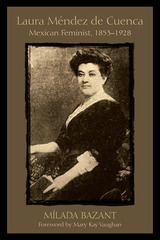 Laura Méndez de Cuenca: Mexican Feminist, 1853–1928
Mílada Bazant; Foreword by Mary Kay Vaughan
University of Arizona Press, 2018 Laura Méndez de Cuenca—poet, teacher, editor, writer, and feminist—dared to bypass the cultural traditions of her time.
In the early 1870s, when conservative religious thought permeated all aspects of Mexican life, she was one of very few women to gain admission to an extraordinary constellation of male poets, playwrights, and novelists, who were also the publicists and statesmen of the time. She entered this world through her poetry, intellect, curiosity, assertiveness, but her personal life was fraught with tragedy: she had a child out of wedlock by poet Manuel Acuña, who killed himself shortly thereafter. She later married another poet, Agustín Fidencio Cuenca, and had seven other children. All but two of her children died, as did Agustín.
As a penniless young widow facing social rejection, Laura became a teacher and an important force in Mexico’s burgeoning educational reform program. She moved abroad—first to San Francisco, then St. Louis, then Berlin. In these places where she was not known and women had begun to move confidently in the public sphere, she could walk freely, observe, mingle, make friends across many circles, learn, think, and express her opinions. She wrote primarily for a Mexican public and always returned to Mexico because it was her country’s future that she strove to create.
Now, for the first time in English, Mílada Bazant shares with us the trajectory of a leading Mexican thinker who applied the power of the pen to human feeling, suffering, striving, and achievement.
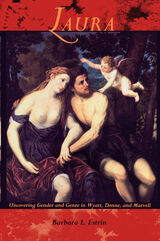 Laura: Uncovering Gender and Genre in Wyatt, Donne and Marvell
Barbara L. Estrin
Duke University Press, 1994 How do men imagine women? In the poetry of Petrarch and his English successors—Wyatt, Donne, and Marvell—the male poet persistently imagines pursuing a woman, Laura, whom he pursues even as she continues to deny his affections. Critics have long held that, in objectifying Laura, these male-authored texts deny the imaginative, intellectual, and physical life of the woman they idealize. In Laura, Barbara L. Estrin counters this traditional view by focusing not on the generative powers of the male poet, but on the subjectivity of the imagined woman and the imaginative space of the poems she occupies.
Through close readings of the Rime sparse and the works of Wyatt, Donne, and Marvell, Estrin uncovers three Lauras: Laura-Daphne, who denies sexuality; Laura-Eve, who returns the poet’s love; and Laura-Mercury, who reinvents her own life. Estrin claims that in these three guises Laura subverts both genre and gender, thereby introducing multiple desires into the many layers of the poems. Drawing upon genre and gender theories advanced by Jean-François Lyotard and Judith Butler to situate female desire in the poem’s framework, Estrin shows how genre and gender in the Petrarchan tradition work together to undermine the stability of these very concepts.
Estrin’s Laura constitutes a fundamental reconceptualization of the Petrarchan tradition and contributes greatly to the postmodern reassessment of the Renaissance period. In its descriptions of how early modern poets formulate questions about sexuality, society and poetry, Laura will appeal to scholars of the English and Italian Renaissance, of gender studies, and of literary criticism and theory generally.
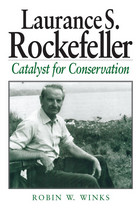 Laurance S. Rockefeller: Catalyst For Conservation
Robin W. Winks; Foreword by Bruce Babbitt
Island Press, 1997 Despite his status as a scion of one of the wealthiest and most famous families in the United States and an enormously successful businessman in his own right, Laurance S. Rockefeller is unknown to all but a small circle of Americans. Yet while he has been neither Vice President nor Governor nor chairman of the world's largest bank, his contribution to society has been at least as great as that of his more famous brothers. In Laurance S. Rockefeller: Catalyst for Conservation, noted historian Robin W. Winks brings Laurance to the forefront, offering an intimate look at his life and accomplishments. While Rockefeller has played a vital role in the business world as one of the most astute venture capitalists of our time -- providing seed money for, among other endeavors, Eastern Airlines, Intel Corporation, and Apple Computers -- his driving passion throughout his life has been the environment. In addition to the millions of dollars he has donated and the numerous conservation organizations he has helped to found, he served under five consecutive presidents in environmental advisory capacities. Perhaps most significantly, Rockefeller served under Presidents Eisenhower and Kennedy as chairman of the Outdoor Recreation Resources Review Commission (ORRRC), brilliantly orchestrating an assessment of the recreation and conservation needs and wants of the American people and the policies and programs required to meet those needs. The reports issued by the Commission represent a groundbreaking achievement that laid the framework for nearly all significant environmental legislation of the following three decades. Winks uses a combination of historical insight and extensive access to Rockefeller and government archives to present the first in-depth examination of Laurance Rockefeller's life and work. His deftly argued and gracefully written volume explains and explores Rockefeller's role in shaping the transition from traditional land conservation to a more inclusive environmentalism. It should compel broader interpretation of the history of environmental protection, and is essential reading for anyone concerned with the past or future of conservation in America.
 Laureates and Heretics: Six Careers in American Poetry
Robert Archambeau
University of Notre Dame Press, 2010
Robert Archambeau examines the influence of the poet and critic Yvor Winters on his final generation of graduate students at Stanford in the early 1960s: Robert Hass, Robert Pinsky, James McMichael, John Matthias, and John Peck. Archambeau divides the poets into two groups, laureates and heretics. Hass and Pinsky, each of whom served multiple terms as United Sates Poet Laureate, achieved both popular recognition and institutional renown. In contrast, the poetic accomplishments of Matthias, McMichael, and Peck (and to some extent Winters himself), the "heretics," have not resulted in wide readership or institutional canonization.
Archambeau begins with the context of the modernist poetics Winters first espoused and then rejected. The story that follows--of how his five most prominent students accepted, rejected, or transformed Winters's poetics, and how these poets went on to greater or lesser degrees of success in the field of late twentieth-century letters--illuminates the cultural politics of poetry in our own day. The author provides close readings of poems by this diverse group of poets, places their careers and works in the context of their times, and traces the relationship between American literary history and American canons of literary taste from the 1930s to the present day. Laureates and Heretics is an important contribution to American literary history and American poetry.
"I know of no other study of twentieth-century American poetry that so carefully and interestingly treats the works and careers of a single figure (Yvor Winters) and five of his students. The varying critical and public fates of Winters and the poets who worked under him make a fascinating study, even gesturing toward a global history of postwar American poetry." --Mark Scroggins, Florida Atlantic University
"This book is about the complexities of the relation between Yvor Winters and five former students as those complexities emerge in the poems themselves. Within these terms, it is exemplary because, unlike most critics and reviewers, Archambeau is not out to polemically endorse any specific position Winters himself took; he is as interested in departures from Winters' orthodoxy as in adherence; he is an extraordinarily sensitive reader of a considerable range of poetry." --Evan Watkins, University of California, Davis
Laurence Nowell's Vocabularium Saxonicum
Edited by Albert H. Marckwardt
University of Michigan Press, 1952 In his Preface to Laurence Nowell's Vocabularium Saxonicum, Albert H. Marckwardt writes:"Many years ago, when I first read Laurence Nowell's Vocabularium Saxonicum in manuscript, I was firmly convinced that it was of sufficient intrinsic interest to merit publication. It seemed desirable that a man like Nowell, so important in the development of Old English studies, should become more than a footnote in an occasional history of linguistic or legal scholarship. His dictionary, reflecting so clearly the personality of a true scholar with broad and human interests, deserved to be made generally available despite the advance of linguistic knowledge since its time."
Laurence Sterne’s A Sentimental Journey: A Legacy to the World
W. B. Gerard
Bucknell University Press, 2021 Laurence Sterne’s A Sentimental Journey through France and Italy continues to be as widely read and admired as upon its first appearance. Deemed more accessible than Sterne’s Life and Opinions of Tristram Shandy, Gentleman, and often assigned as a college text, A Sentimental Journey has received its share of critical attention, but—unlike Tristram Shandy—to date it has not been the subject of a dedicated anthology of critical essays. This volume fills that gap with fresh perspectives on Sterne’s novel that will appeal to students and critics alike. Together with an introduction that situates each essay within A Sentimental Journey’s reception history, and a tailpiece detailing the culmination of Sterne’s career and his death, this volume presents a cohesive approach to this significant text that is simultaneously grounded and revelatory.
Laurent Clerc: The Story of His Early Years
Cathryn Carroll
Gallaudet University Press, 1991 Laurent Clerc won lasting renown as the deaf teacher who helped Thomas Hopkins Gallaudet establish schools to educate deaf Americans in the 19th century. Now, his character as a young boy growing up in Paris has been captured in the novel Laurent Clerc. In his own voice, Clerc vividly relates the experiences that led to his later progressive teaching methods. Especially influential was his long stay at the Royal National Institute for the Deaf in Paris, where he encountered sharply distinct personalities — the saintly, inspiring deaf teacher Massieu, the vicious Dr. Itard and his heartless “experiments” on deaf boys, and the “Father of the Deaf,” Abbe Sicard, who could hardly sign. Young adult readers will find his story richly entertaining as well as informative.
 The Lausanne Moment: Reckoning with the 1923 Treaty of Peace and Its Legacies
Edited by Ozan Ozavci, Julia Secklehner, and Georgios Giannakopoulos
Gingko, 2025 Addresses the shifting interpretations of the Treaty of Lausanne across national contexts, tracing how its provisions have been legally, socially, and politically reimagined.
The 1923 Treaty of Lausanne remains one of the few interwar peace settlements that has endured into the twenty-first century. Yet, the memory of Lausanne has proved deeply contested. Celebrated by some as a triumph of state sovereignty and peacemaking, it has also come to symbolize forced displacement, the erasure of minority rights, and the codification of population transfers as instruments of international order.
Just over one hundred years after the signing of the Treaty of Lausanne, The Lausanne Moment revisits this diplomatic, legal, economic, and financial juncture that helped reshape the world and defined new norms of sovereignty, displacement, and identity. Building on a growing body of interdisciplinary scholarship and serving as a sequel to They All Made Peace—What is Peace?, also published by Gingko, this edited volume foregrounds the lived realities and long-term legacies of the treaty, critically re-examining the political, cultural, and social consequences of its provisions and aftershocks.
Rather than focusing solely on high diplomacy or legal text, The Lausanne Moment brings into view the human dimension of the Lausanne moment. Through case studies ranging from the refugee experience in Nikaia and Asia Minor orphans in Greece, to the enduring memory of loss in Pontic singing, the symbolic ethnicity of Cretan descendants, and the Kurdish experience in Turkey, the book documents the deeply personal and community-level consequences of forced migration and political rupture. These experiences are not confined to the immediate postwar period; they linger across time, informing the present-day politics of memory, migration, and identity.
This volume also interrogates the geopolitics of Lausanne through new thematic lenses. Essays explore how the treaty facilitated the continuation of imperial practices under new nationalist forms, shaped debates over public debt and cultural heritage, and affected actors and regions often overlooked in Lausanne historiography, such as Albania, Cyprus, and the Kurdish nationalist movements. Lausanne’s cultural afterlives, from its role in shaping archaeology, music, and education policy, are also covered in the book. Through its interdisciplinary and transregional approach, The Lausanne Moment breaks new ground in Lausanne studies, bringing together historians, anthropologists, archaeologists, political scientists, and cultural theorists, and introduces voices and perspectives—Kurdish, Cypriot, Pontic, Albanian, and Cretan—that have been marginal to mainstream narratives. By weaving together policy analysis, oral history, cultural production, and historical research, the volume offers an expansive and textured account of one of the twentieth century’s most consequential, yet paradoxical, peace settlements.
The Lausanne Moment situates the treaty within broader histories of state-led population engineering, colonial eugenic practices, and the moral politics of international humanitarianism. The “peace” of Lausanne, the volume suggests, was neither absolute nor apolitical—it was crafted, contested, and constantly renegotiated. The book’s contributors collectively ask not only what peace meant in 1923, but also what it means today for those still living with its consequences.
Lava Falls
Lucy Jane Bledsoe
University of Wisconsin Press, 2020 Scrabbling for ways to believe in themselves and the world, the spirited, heart-driven people who populate these stories find surprising pockets of hope. A woman returns to the Alaskan cabin of her survivalist childhood, full of misgivings and memories. A trip to Yellowstone sparks a crisis for a man who feels kinship with the wolves he glimpses there. Nursing painful pasts, sisters take a cruise together to Antarctica. A runaway finds salvation from violence in her own singing. And in the title novella, a Grand Canyon rafting expedition profoundly changes the lives of six women.
Refusing to buckle under the pressures of family and political traumas, the sojourners in this collection are unified by themes of creative expression and of love—how we define it, how we are impelled by it, and how we are lifted by it.
The Lava of This Land: South African Poetry 1960-1996
Denis Hirson
Northwestern University Press, 1997 The lava of change has spilled over South Africa again as apartheid as ended. What sort of social and artistic emerges as it cools? This anthology, containing more than two hundred poems by over fifty poets, spans five distinct historical periods in the contemporary development of South Africa, from the 1960s Durban worker strikes to the dismantling of apartheid in the 1990s. Most of the poems have been written in English, but forty-eight have been translated from Afrikaans, Zulu, Xhosa, and /Xam, a Bushman linguistic group. Inspired by music, by the language of the streets, by the sensual and the erotic, and by social, political, and economic turmoil, these poems showcase a remarkable complexity of literary traditions. They provide a fascinating and moving rendering of South Africa's hybrid language and unique worldview.
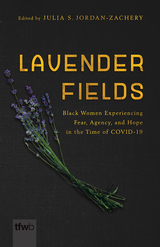 Lavender Fields: Black Women Experiencing Fear, Agency, and Hope in the Time of COVID-19
Edited by Julia S. Jordan-Zachery
University of Arizona Press, 2023 Lavender Fields uses autoethnography to explore how Black girls and women are living with and through COVID-19. It centers their pain, joys, and imaginations for a more just future as we confront all the inequalities that COVID-19 exposes.
Black women and girls in the United States are among the hardest hit by the pandemic in terms of illnesses, deaths, evictions, and increasing economic inequality. Riffing off Alice Walker’s telling of her search for Zora Neal Hurston, the authors of these essays and reflections offer raw tellings of Black girls’ and women’s experiences written in real time, as some of the contributors battled COVID-19 themselves.
The essays center Black girls and women and their testimonies in hopes of moving them from the margin to the center. With a diversity of voices and ages, this volume taps into the Black feminine interior, that place where Audre Lorde tells us that feelings lie, to access knowledge—generational, past, and contemporary—to explore how Black women navigate COVID-19. Using womanism and spirituality, among other modalities, the authors explore deep feelings, advancing Black feminist theorizing on Black feminist praxis and methodology.
In centering the stories of Black girls and women’s experiences with COVID-19, this work brings much-needed justice and equity to conversations about the pandemic. Just as Walker worked diligently to find Hurston, Lavender Fields attempts to “find” Black women amid all we are experiencing, ensuring visibility and attention.
Contributors
Tamaya Bailey
reelaviolette botts-ward
Kyrah K. Brown
Brianna Y. Clark
Kenyatta Dawson
LeConté J. Dill
Maryam O. Funmilayo
Brandie Green
Courtney Jackson
Sara Jean-Francois
Julia S. Jordan-Zachery
Angela K. Lewis-Maddox
Annet Matebwe
Mbali Mazibuko
Radscheda Nobles
Nimot Ogunfemi
J. Mercy Okaalet
Chizoba Uzoamaka Okoroma
Peace Ossom-Williamson
Elizabeth Peart
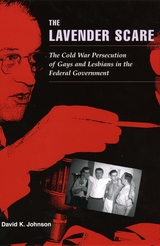 The Lavender Scare: The Cold War Persecution of Gays and Lesbians in the Federal Government
David K. Johnson
University of Chicago Press, 2003 The McCarthy era is generally considered the worst period of political repression in recent American history. But while the famous question, "Are you now or have you ever been a member of the Communist Party?" resonated in the halls of Congress, security officials were posing another question at least as frequently, if more discreetly: "Information has come to the attention of the Civil Service Commission that you are a homosexual. What comment do you care to make?"
Historian David K. Johnson here relates the frightening, untold story of how, during the Cold War, homosexuals were considered as dangerous a threat to national security as Communists. Charges that the Roosevelt and Truman administrations were havens for homosexuals proved a potent political weapon, sparking a "Lavender Scare" more vehement and long-lasting than McCarthy's Red Scare. Relying on newly declassified documents, years of research in the records of the National Archives and the FBI, and interviews with former civil servants, Johnson recreates the vibrant gay subculture that flourished in New Deal-era Washington and takes us inside the security interrogation rooms where thousands of Americans were questioned about their sex lives. The homosexual purges ended promising careers, ruined lives, and pushed many to suicide. But, as Johnson also shows, the purges brought victims together to protest their treatment, helping launch a new civil rights struggle.
The Lavender Scare shatters the myth that homosexuality has only recently become a national political issue, changing the way we think about both the McCarthy era and the origins of the gay rights movement. And perhaps just as importantly, this book is a cautionary tale, reminding us of how acts taken by the government in the name of "national security" during the Cold War resulted in the infringement of the civil liberties of thousands of Americans.
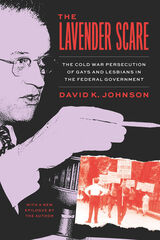 The Lavender Scare: The Cold War Persecution of Gays and Lesbians in the Federal Government
David K. Johnson
University of Chicago Press, 2023 A new edition of a classic work of history, revealing the anti-homosexual purges of midcentury Washington.
In The Lavender Scare, David K. Johnson tells the frightening story of how, during the Cold War, homosexuals were considered as dangerous a threat to national security as Communists. Charges that the Roosevelt and Truman administrations were havens for homosexuals proved a potent political weapon, sparking a “Lavender Scare” more vehement and long-lasting than Joseph McCarthy’s Red Scare. Drawing on declassified documents, years of research in the records of the National Archives and the FBI, and interviews with former civil servants, Johnson recreates the vibrant gay subculture that flourished in midcentury Washington and takes us inside the security interrogation rooms where anti-homosexual purges ruined the lives and careers of thousands of Americans. This enlarged edition of Johnson’s classic work of history—the winner of numerous awards and the basis for an acclaimed documentary broadcast on PBS—features a new epilogue, bringing the still-relevant story into the twenty-first century.
 Lavender Sounds: From Lesbian Radio to Queer Feminist Soundwork
Stacey Copeland
University of Michigan Press, 2026 Stacey Copeland’s Lavender Sounds delves into lesbian radio history and its evolution into queer feminist podcasting today, exploring the politics, aesthetics, and cultural activism embedded in queer feminist soundwork. Through deeply personal and archival explorations, Stacey Copeland traces the emergence of queer feminist soundwork—a unique blend of community-led storytelling, political resistance, and creative expression rooted in feminist and LGBTQ+ activism. At the heart of the book lies a powerful idea: sound is not just heard but felt, connecting generations through shared voices and struggles. In conversation with award-winning and cutting-edge queer and feminist podcast producers from across Canada and the U.S., Lavender Sounds invites us to turn a feminist embodied ear to the past to uncover the ways gender, race, and sexual orientations are embedded in our everyday media listening practices. From pioneering Canadian radio shows like Vancouver's The Lesbian Show and Montreal's Dykes on Mykes to today’s queer chumcasts and audio documentary, Lavender Sounds is a journey through auditory landscapes where joy, protest, intimacy, and identity intersect. This book opens a vibrant conversation about how radio and podcasting are vital tools for marginalized communities to connect, create, and claim space in the media world.
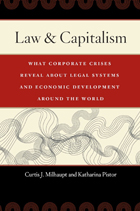 Law & Capitalism: What Corporate Crises Reveal about Legal Systems and Economic Development around the World
Curtis J. Milhaupt and Katharina Pistor
University of Chicago Press, 2008 Recent high-profile corporate scandals—such as those involving Enron in the United States, Yukos in Russia, and Livedoor in Japan—demonstrate challenges to legal regulation of business practices in capitalist economies. Setting forth a new analytic framework for understanding these problems, Law and Capitalism examines such contemporary corporate governance crises in six countries, to shed light on the interaction of legal systems and economic change. This provocative book debunks the simplistic view of law’s instrumental function for financial market development and economic growth.
Using comparative case studies that address the United States, China, Germany, Japan, Korea, and Russia, Curtis J. Milhaupt and Katharina Pistor argue that a disparate blend of legal and nonlegal mechanisms have supported economic growth around the world. Their groundbreaking findings show that law and markets evolve together in a “rolling relationship,” and legal systems, including those of the most successful economies, therefore differ significantly in their organizational characteristics. Innovative and insightful, Law and Capitalism will change the way lawyers, economists, policy makers, and business leaders think about legal regulation in an increasingly global market for capital and corporate governance.
Law and Bioethics: An Introduction
Jerry Menikoff
Georgetown University Press, 2001 While the American legal system has played an important role in shaping the field of bioethics, Law and Bioethics is the first book on the subject designed to be accessible to readers with little or no legal background. Detailing how the legal analysis of an issue in bioethics often differs from the "ethical" analysis, the book covers such topics as abortion, surrogacy, cloning, informed consent, malpractice, refusal of care, and organ transplantation. Structured like a legal casebook, Law and Bioethics includes the text of almost all the landmark cases that have shaped bioethics. Jerry Menikoff offers commentary on each of these cases, as well as a lucid introduction to the U.S. legal system, explaining federalism and underlying common law concepts. Students and professionals in medicine and public health, as well as specialists in bioethics, will find the book a valuable resource.
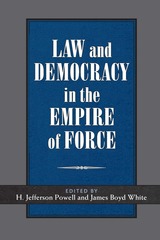 Law and Democracy in the Empire of Force
H. Jefferson Powell and James Boyd White, editors
University of Michigan Press, 2009 The authors of this book share a concern for the state of law and democracy in our country, which to many seems to have deteriorated badly. Deep changes are visible in a wide array of phenomena: judicial opinions, the teaching of law, legal practice, international relations, legal scholarship, congressional deliberations, and the culture of contemporary politics. In each of these intersections between law, culture, and politics, traditional expectations have been transformed in ways that pose a threat to the continued vitality and authority of law and democracy. The authors analyze specific instances in which such a decline has occurred or is threatened, tracing them to "the empire of force," a phrase borrowed from Simone Weil. This French intellectual applied the term not only to the brute force used by police and soldiers but, more broadly, to the underlying ways of thinking, talking, and imagining that make that sort of force possible, including propaganda, unexamined ideology, sentimental clichés, and politics by buzzwords, all familiar cultural forms. Based on the underlying crisis and its causes, the editors and authors of these essays agree that neither law nor democracy can survive where the empire of force dominates. Yet each manages to find a ground for hope in our legal and democratic culture. H. Jefferson Powell is Frederic Cleaveland Professor of Law and Divinity at Duke University and has served in both the federal and state governments, as a deputy assistant attorney general and as principal deputy solicitor general in the U.S. Department of Justice and as special counsel to the attorney general of North Carolina. His latest book is Constitutional Conscience: The Moral Dimension of Judicial Decision.
James Boyd White is Hart Wright Professor of Law emeritus and Professor of English emeritus, at the University of Michigan. His latest book is Living Speech: Resisting the Empire of Force. "An extraordinary collection of provocative, insightful, and inspiring essays on the future of law and democracy in the twenty-first century."
---Geoffrey R. Stone, Edward H. Levi Distinguished Service Professor of Law, University of Chicago "These thoughtful essays diagnose democracy's perilous present, and---more importantly---they explore avenues to democracy's rescue through humanization of law."
---Kenneth L. Karst, David G. Price and Dallas P. Price Professor of Law Emeritus, UCLA Contributors
Martin Böhmer, Universidad de San Andres, Buenos Aires, Argentina
M. Cathleen Kaveny, University of Notre Dame
Howard Lesnick, University of Pennsylvania
The Honorable John T. Noonan Jr., Ninth Circuit Court of Appeals
H. Jefferson Powell, Duke University
Jedediah Purdy, Duke University
Jed Rubenfeld, Yale University
A.W. Brian Simpson, University of Michigan
Barry Sullivan, Jenner and Block LLP, Chicago
Joseph Vining, University of Michigan
Robin West, Georgetown University
James Boyd White, University of Michigan
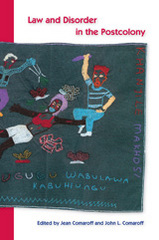 Law and Disorder in the Postcolony
Edited by Jean Comaroff and John L. Comaroff
University of Chicago Press, 2006 Are postcolonies haunted more by criminal violence than other nation-states? The usual answer is yes. In Law and Disorder in the Postcolony, Jean and John Comaroff and a group of respected theorists show that the question is misplaced: that the predicament of postcolonies arises from their place in a world order dominated by new modes of governance, new sorts of empires, new species of wealth—an order that criminalizes poverty and race, entraps the “south” in relations of corruption, and displaces politics into the realms of the market, criminal economies, and the courts.
As these essays make plain, however, there is another side to postcoloniality: while postcolonies live in states of endemic disorder, many of them fetishize the law, its ways and itsmeans. How is the coincidence of disorder with a fixation on legalities to be explained? Law and Disorder in the Postcolony addresses this question, entering into critical dialogue with such theorists as Benjamin, Agamben, and Bayart. In the process, it also demonstrates how postcolonies have become crucial sites for the production of contemporary theory, not least because they are harbingers of a global future under construction.
Law and Economic Policy in America: The Evolution of the Sherman Antitrust Act
William Letwin
University of Chicago Press, 1981 William Letwin's thorough, carefully argued, and elegantly written work is the only book length study of the Sherman Antitrust Act, a law designed to shape the economic life of a large complex society through maintaining the "correct" level of competition in the economy. This is a superb history and complete analysis of the Act, from its English and American common law antecedents to the events that led to the first revisions of the Act in the form of the Clayton Antitrust and Federal Trade Commission Acts.
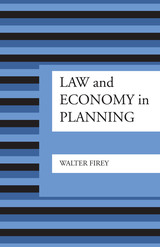 Law and Economy in Planning
By Walter Firey
University of Texas Press, 1965 From the beginnings of human association, social planning has been an accepted method for effecting improvements in community, regional, and national life. In Law and Economy in Planning, Walter Firey has made a start in the development of an intellectual framework that will give meaning to the craft of planning and establish a relationship between practice and first principles. In this study he investigates basic elements of this framework existing in two normative orders: the state, in which a collectivity has the obligation to enforce obedience; and the market, in which the individual has the right to be rational. These normative orders, whose laws are formulated in the disciplines of jurisprudence and economics, have a common concern with the utilization of scarce means to given ends. These orders, the state and the market, are formulated by the art of planning and have a common relationship to the natural order, which cannot be planned, but only predicted, and which is explained by the science of planning. To bridge the gap between the natural order and the normative order is the function of a philosophy of planning, for which an intellectual framework—of necessity interdisciplinary—is essential. This study is the culmination of several years of research in the fields of planning and social theory. During the course of this research Firey came to appreciate more and more keenly the need for an interdisciplinary formulation of the planning process and, with this, the need for a philosophical foundation for interdisciplinary work. A year’s fellowship at the Center for Advanced Study in the Behavioral Sciences at Stanford gave him the opportunity to develop his ideas bearing on this subject and to put them in writing.
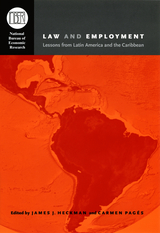 Law and Employment: Lessons from Latin America and the Caribbean
Edited by James J. Heckman and Carmen Pages
University of Chicago Press, 2004 Law and Employment analyzes the effects of regulation and deregulation on Latin American labor markets and presents empirically grounded studies of the costs of regulation.
Numerous labor regulations that were introduced or reformed in Latin America in the past thirty years have had important economic consequences. Nobel Prize-winning economist James J. Heckman and Carmen Pagés document the behavior of firms attempting to stay in business and be competitive while facing the high costs of complying with these labor laws. They challenge the prevailing view that labor market regulations affect only the distribution of labor incomes and have little or no impact on efficiency or the performance of labor markets. Using new micro-evidence, this volume shows that labor regulations reduce labor market turnover rates and flexibility, promote inequality, and discriminate against marginal workers.
Along with in-depth studies of Colombia, Peru, Brazil, Argentina, Chile, Uruguay, Jamaica, and Trinidad, Law and Employment provides comparative analysis of Latin American economies against a range of European countries and the United States. The book breaks new ground by quantifying not only the cost of regulation in Latin America, the Caribbean, and in the OECD, but also the broader impact of this regulation.
Law and Equal Opportunity: A Study of the Massachusetts Commission Against Discrimination
Leon H. Mayhew
Harvard University Press Law and Equal Opportunity is a sociological case study of the forces that facilitate, shape, and obstruct the legal implementation of social ideals. Specifically, Leon Mayhew's analysis focuses on the impact of antidiscrimination law in the state of Massachusetts, and the workings of the corresponding administrative agency, the Massachusetts Commission Against Discrimination. The book provides an account of the establishment of the Commission, its policies and practices, and the obstacles it confronted over a seventeen-year period (in particular from 1959 to 1963) and presents a detailed examination of actual complaints and how they were dealt with.
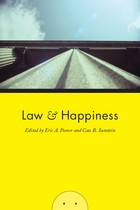 Law and Happiness
Edited by Eric A. Posner and Cass R. Sunstein
University of Chicago Press, 2010 Since the earliest days of philosophy, thinkers have debated the meaning of the term happiness and the nature of the good life. But it is only in recent years that the study of happiness—or “hedonics”—has developed into a formal field of inquiry, cutting across a broad range of disciplines and offering insights into a variety of crucial questions of law and public policy.
Law and Happinessbrings together the best and most influential thinkers in the field to explore the question of what makes up happiness—and what factors can be demonstrated to increase or decrease it. Martha Nussbaum offers an account of the way that hedonics can productively be applied to psychology, Cass R. Sunstein considers the unexpected relationship between happiness and health problems, Matthew Adler and Eric A. Posner view hedonics through the lens of cost-benefit analysis, David A. Weisbach considers the relationship between happiness and taxation, and Mark A. Cohen examines the role crime—and fear of crime—can play in people’s assessment of their happiness, and much more.
The result is a kaleidoscopic overview of this increasingly prominent field, offering surprising new perspectives and incisive analyses that will have profound implications on public policy.
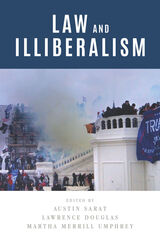 Law and Illiberalism
Edited by Austin Sarat, Lawrence Douglas, and Martha Merrill Umphrey
University of Massachusetts Press, 2022 Does the law shield citizens from authoritarian regimes? Are the core beliefs of classical liberalism—namely the rights of all individuals and constraints on state power—still protected by law? Liberalism and its expansion of rights could not exist without the legal system, and unsurprisingly, many scholars have explored the relationship between law and liberalism. However, the study of law and illiberalism is a relatively recent undertaking, a project that takes on urgency in light of the rise of authoritarian powers, among them Donald Trump’s administration, Viktor Orban’s Hungary, Recep Erdogan’s Turkey, and Jair Bolsanoro’s Brazil. In this volume, six penetrating essays explore the dynamics of the law and illiberal quests for power, examining the anti-liberalism of neoliberalism; the weaponization of “free speech”; the role of the administrative state in current crises of liberal democracy; the broad and unstoppable assault on facts, truth, and reality; and the rise of conspiracism leading up to the Capitol insurrection. In addition to the editors, contributors include Sharon Krause, Elizabeth Anker, Jeremy Kessler, Lee McIntyre, and Nancy Rosenblum.
Law and Investment in Japan: Cases and Materials, Second Edition
Yukio Yanagida, Daniel H. Foote, Edward Stokes Johnson, Jr., J. Mark Ramseyer, and Hugh T. Scogin, Jr.
Harvard University Press Planned and designed by a leading Tokyo lawyer and several American practitioners and scholars, Law and Investment in Japan introduces both Japanese law and the strategic issues that arise in cross-border transactions. Centered around the details of an actual joint venture between the U.S. and Japan, the book combines materials from the transaction itself with cases, statutes, and background data.
This new second edition reflects recent changes in the law and new directions in scholarly research.
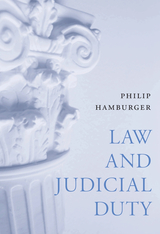 Law and Judicial Duty
Philip Hamburger
Harvard University Press, 2008 Philip Hamburger’s Law and Judicial Duty traces the early history of what is today called “judicial review.” Working from previously unexplored evidence, Hamburger questions the very concept of judicial review. Although decisions holding statutes unconstitutional are these days considered instances of a distinct judicial power of review, Hamburger shows that they were once understood merely as instances of a broader judicial duty. The book’s focus on judicial duty overturns the familiar debate about judicial power. The book is therefore essential reading for anyone concerned about the proper role of the judiciary. Hamburger lays the foundation for his argument by explaining the common law ideals of law and judicial duty. He shows that the law of the land was understood to rest on the authority of the lawmaker and that what could not be discerned within the law of the land was not considered legally binding. He then shows that judges had a duty to decide in accord with the law of the land. These two ideals—law and judicial duty—together established and limited what judges could do. By reviving an understanding of these common law ideals, Law and Judicial Duty calls into question the modern assumption that judicial review is a power within the judges’ control. Indeed, the book shows that what is currently considered a distinct power of review was once understood as a matter of duty—the duty of judges to decide in accord with the law of the land. The book thereby challenges the very notion of judicial review. It shows that judges had authority to hold government acts unconstitutional, but that they enjoyed this power only to the extent it was required by their duty.In laying out the common law ideals, and in explaining judicial review as an aspect of judicial duty, Law and Judicial Duty reveals a very different paradigm of law and of judging than prevails today. The book, moreover, sheds new light on a host of misunderstood problems, including intent, manifest contradiction, the status of foreign and international law, the cases and controversies requirement, and the authority of judicial precedent.
Law and Kingship in Thailand During the Reign of King Chulalongkorn
David M. Engel
University of Michigan Press, 1975 This essay originated in an attempt to bring together the study of law and Thai history in a description of the transformation of Thailand during the late nineteenth and early twentieth centuries as seen from a legal point of view. The resulting work is based for the most part upon those royal enactments from 1873 to 1910 which seemed most crucially to affect the executive, legislative, and judicial functions of the king and the rights of private citizens. [ix]
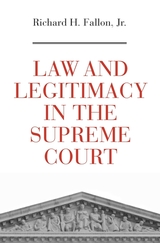 Law and Legitimacy in the Supreme Court
Richard H. Fallon, Jr.
Harvard University Press, 2018 Winner of the Thomas M. Cooley Book Prize, Georgetown Center on the Constitution
Why do self-proclaimed constitutional “originalists” so regularly reach decisions with a politically conservative valence? Do “living constitutionalists” claim a license to reach whatever results they prefer, without regard to the Constitution’s language and history? In confronting these questions, Richard H. Fallon reframes and ultimately transcends familiar debates about constitutional law, constitutional theory, and judicial legitimacy.
Drawing from ideas in legal scholarship, philosophy, and political science, Fallon presents a theory of judicial legitimacy based on an ideal of good faith in constitutional argumentation. Good faith demands that the Justices base their decisions only on legal arguments that they genuinely believe to be valid and are prepared to apply to similar future cases. Originalists are correct about this much. But good faith does not forbid the Justices to refine and adjust their interpretive theories in response to the novel challenges that new cases present. Fallon argues that theories of constitutional interpretation should be works in progress, not rigid formulas laid down in advance of the unforeseeable challenges that life and experience generate.
Law and Legitimacy in the Supreme Court offers theories of constitutional law and judicial legitimacy that accept many tenets of legal realism but reject its corrosive cynicism. Fallon’s account both illuminates current practice and prescribes urgently needed responses to a legitimacy crisis in which the Supreme Court is increasingly enmeshed.
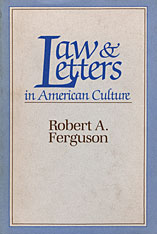 Law and Letters in American Culture
Robert A. Ferguson
Harvard University Press, 1984 The role of religion in early American literature has been endlessly studied; the role of the law has been virtually ignored. Robert A. Ferguson’s book seeks to correct this imbalance.
With the Revolution, Ferguson demonstrates, the lawyer replaced the clergyman as the dominant intellectual force in the new nation. Lawyers wrote the first important plays, novels, and poems; as gentlemen of letters they controlled many of the journals and literary societies; and their education in the law led to a controlling aesthetic that shaped both the civic and the imaginative literature of the early republic. An awareness of this aesthetic enables us to see works as diverse as Jefferson’s Notes on the State of Virginia and Irving’s burlesque History of New York as unified texts, products of the legal mind of the time.
The Declaration of Independence, the Constitution, and the great political orations were written by lawyers, and so too were the literary works of Trumbull, Tyler, Brackenridge, Charles Brockden Brown, William Cullen Bryant, Richard Henry Dana, Jr., and a dozen other important writers. To recover the original meaning and context of these writings is to gain new understanding of a whole era of American culture.
The nexus of law and letters persisted for more than a half-century. Ferguson explores a range of factors that contributed to its gradual dissolution: the yielding of neoclassicism to romanticism; the changing role of the writer; the shift in the lawyer’s stance from generalist to specialist and from ideological spokesman to tactician of compromise; the onslaught of Jacksonian democracy and the problems of a country torn by sectional strife. At the same time, he demonstrates continuities with the American Renaissance. And in Abraham Lincoln he sees a memorable late flowering of the earlier tradition.
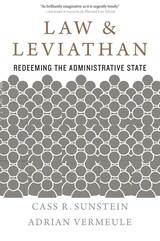 Law and Leviathan: Redeeming the Administrative State
Cass R. Sunstein and Adrian Vermeule
Harvard University Press, 2020 Winner of the Scribes Book Award
“As brilliantly imaginative as it is urgently timely.”
—Richard H. Fallon, Jr., Harvard Law School
“At no time more than the present, a defense of expertise-based governance and administration is sorely needed, and this book provides it with gusto.”
—Frederick Schauer, author of The Proof
A highly original framework for restoring confidence in a government bureaucracy increasingly derided as “the deep state.”
Is the modern administrative state illegitimate? Unconstitutional? Unaccountable? Dangerous? America has long been divided over these questions, but the debate has recently taken on more urgency and spilled into the streets. Cass Sunstein and Adrian Vermeule argue that the administrative state can be redeemed so long as public officials are constrained by morality and guided by stable rules. Officials should make clear rules, ensure transparency, and never abuse retroactivity, so that current guidelines are not under constant threat of change. They should make rules that are understandable and avoid issuing contradictory ones.
These principles may seem simple, but they have a great deal of power. Already, they limit the activities of administrative agencies every day. In more robust form, they could address some of the concerns of critics who decry the “deep state” and yearn for its downfall.
“Has something to offer both critics and supporters…a valuable contribution to the ongoing debate over the constitutionality of the modern state.”
—Review of Politics
“The authors freely admit that the administrative state is not perfect. But, they contend, it is far better than its critics allow.”
—Wall Street Journal
 Law and Literature: Revised and Enlarged Edition
Richard A. Posner
Harvard University Press, 1998 Hailed in its first edition as an "outstanding work, as stimulating as it is intellectually distinguished" (New York Times), Richard A. Posner's Law and Literature has handily lived up to the Washington Post's prediction that the book would "remain essential reading for many years to come." This new edition, extensively revised and enlarged, continues to emphasize the essential differences between law and literature, which are rooted in the different social functions of legal and literary texts. But it also explores areas of mutual illumination and expands its range to include new topics such as popular fiction about law, literary education for lawyers, the legal narrative movement, and judicial biography.
Literary works from classics by Sophocles, Shakespeare, Dostoevsky, Melville, Kafka, and Camus to contemporary fiction by William Gaddis, Tom Wolfe, and John Grisham come under Posner's scrutiny, as do recent attempts to apply the techniques of literary analysis to statutes, judicial opinions, and the Constitution. In a section entirely new in this edition, Posner discusses the increasing efforts of legal scholars to enrich their scholarship by borrowing the methods and insights of literature--even by insisting that legal education is incomplete without the ethical insights afforded by an immersion in literature.
Thoroughly rewritten and updated, free of legal and literary jargon, and informed by Posner's extensive erudition and legal experience, this book remains the most clear, acute, and comprehensive account of the intersection of law and literature--"a wonderfully original and instructive study of what literature has to teach us about the law, the methods of legal argument, and the interpretation of statutes and the Constitution" (Wall Street Journal).
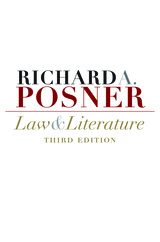 Law and Literature: Third Edition
Richard A. Posner
Harvard University Press, 2009 Hailed in its first edition as an “outstanding work, as stimulating as it is intellectually distinguished” (New York Times), Law and Literature has handily lived up to the Washington Post’s prediction that the book would “remain essential reading for many years to come.” This third edition, extensively revised and enlarged, is the only comprehensive book-length treatment of the field. It continues to emphasize the essential differences between law and literature, which are rooted in the different social functions of legal and literary texts. But it also explores areas of mutual illumination and expands its range to include new topics such as the cruel and unusual punishments clause of the Constitution, illegal immigration, surveillance, global warming and bioterrorism, and plagiarism.
In this edition, literary works from classics by Homer, Shakespeare, Milton, Dostoevsky, Melville, Kafka, and Camus to contemporary fiction by Tom Wolfe, Margaret Atwood, John Grisham, and Joyce Carol Oates come under Richard Posner’s scrutiny, as does the film The Matrix.
The book remains the most clear, acute account of the intersection of law and literature.
 Law and Macroeconomics: Legal Remedies to Recessions
Yair Listokin
Harvard University Press, 2019 A distinguished Yale economist and legal scholar’s argument that law, of all things, has the potential to rescue us from the next economic crisis.
After the economic crisis of 2008, private-sector spending took nearly a decade to recover. Yair Listokin thinks we can respond more quickly to the next meltdown by reviving and refashioning a policy approach whose proven success is too rarely acknowledged. Harking back to New Deal regulatory agencies, Listokin proposes that we take seriously law’s ability to function as a macroeconomic tool, capable of stimulating demand when needed and relieving demand when it threatens to overheat economies.
Listokin makes his case by looking at both positive and cautionary examples, going back to the New Deal and including the Keystone Pipeline, the constitutionally fraught bond-buying program unveiled by the European Central Bank at the nadir of the Eurozone crisis, the ongoing Greek crisis, and the experience of U.S. price controls in the 1970s. History has taught us that law is an unwieldy instrument of macroeconomic policy, but Listokin argues that under certain conditions it offers a vital alternative to the monetary and fiscal policy tools that stretch the legitimacy of technocratic central banks near their breaking point while leaving the rest of us waiting and wallowing.
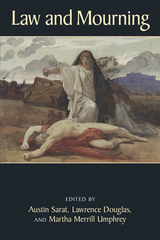 Law and Mourning
Austin Sarat
University of Massachusetts Press, 2017 Law and Mourning brings together a distinguished group of scholars to explore the many and complex ways that law both regulates and gives meaning to our experience of loss. The essays in this volume illuminate how law helps us to absorb and contend with loss and its reverberations, channeling the powerful emotions associated with death and protecting those vulnerable to them. At the same time, law creates a regulatory framework for death as it establishes the necessity for a clear demarcation of the boundary between life and death, defines what we can and cannot do with the remains of the dead, and creates both privileges and disabilities for survivors. The contributors to the volume also explore how mourning generates critiques of existing legal and political orders which seem compelled by calls from the dead, unleashing an indifference to legal consequences in survivors that can undermine or destroy law.
In addition to the editors, the contributors include Andrea Brady, Catherine Kellogg, Shai Lavi, Ray Madoff, Ann Pelligrini, and Mark Sanders.
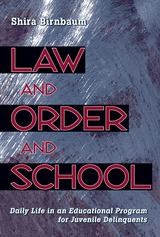 Law And Order And School: Daily Life In Educ Program For Juv Delinq
Shira Birnbaum
Temple University Press, 2001 Locally acclaimed as one of the better programs of its kind in the region, "Academy" exemplifies a new kind of institution, providing transitional school services under contract with both educational and juvenile justice agencies. Birnbaum's narrative focuses on curriculum, teaching, behavior management, and the social organization and culture of the program, offering a close-up view of the everyday classroom interactions that frame student achievement and, ultimately, program outcomes. What do students learn? What do teachers teach? What educational and rehabilitative goals are embedded in official and unofficial policy? What processes inside and outside the building help or hinder the attainment of those goals?
As educational and justice agencies increasingly turn to private subcontractors to deliver an array of services and growing numbers of young people are channeled into non-traditional educational settings and correctional institutions, it is imperative that educators and the general public understand how these institutions work and what problems their students and staffs encounter. This on-the-ground examination of the education within the juvenile justice system will open your eyes to how we educate some of our neediest children.
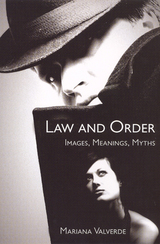 Law and Order: Images, Meanings, Myths
Valverde, Mariana
Rutgers University Press, 2006 In living rooms across the country, Americans have fallen in love with law-related television programming. From primetime legal dramas such as Law and Order, The Guardian, CSI, JAG, and Judging Amy to a host of daytime courtroom spectacles including Judge Judy, People's Court, and Divorce Courtviewers are endlessly entertained by the practices of the criminal justice system. But with television courtrooms appearing more like the studio of The Jerry Springer Show than institutions of justice, and with weekly dramas seamlessly blending cutting-edge forensic science with exaggerated fictions, it calls to question: just what is it about these shows that has the public so captivated? And, what effects do the images of crime and order presented through the media have on society's view of the actual legal and criminal justice systems? In Law and Order: Images, Meanings, Myths, Mariana Valverde draws on examples from film, television, and newspapers to examine these questions and to demonstrate how popular culture is creating an unrealistic view of crime and crime control. Valverde argues that understanding the impact of media representations of courtrooms, police departments, prisons, and the people who populate them is essential to comprehending the reality of criminal justice. Introducing a wealth of resources in social and cultural studies along with suggestions for classroom discussions and assignments, this book pushes the field of criminology in new and exciting theoretical directions. It is essential reading for students and scholars of criminal justice and law.
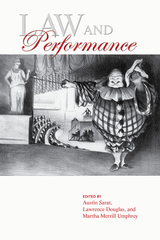 Law and Performance
Austin Sarat
University of Massachusetts Press, 2018 Drawing on the rich field of performance studies, this volume, the most recent contribution to the distinguished Amherst Series in Law, Jurisprudence, and Social Thought, offers fresh insights and a provocative mix of multidisciplinary topics and methodologies to explore the theatricality and performativity of law as more than a metaphor.
In considering law through the lens of performance studies, the contributors in this volume emphasize the embodied, affective, and reiterative qualities that move law off the printed page and into the thick world of lived experience. They consider the blurring of lines between performance and the enactment of law, the transformative exchanges between the law and its many and varied stagings, and the impact or resonance of performativity in situations where innocence and guilt may be determined. In addition to the editors, the contributors include Joshua Chambers-Letson, Catherine M. Cole, Ryan Hartigan, Lara D. Nielsen, Julie Stone Peters, Ann Pellegrini, and Karen Shimakawa.
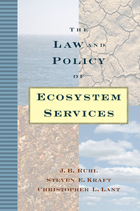 The Law and Policy of Ecosystem Services
J. B. Ruhl, Steven E. Kraft, and Christopher L. Lant
Island Press, 2007 The Law and Policy of Ecosystem Services is the first comprehensive exploration of the status and future of natural capital and ecosystem services in American law and policy. The book develops a framework for thinking about ecosystem services across their ecologic, geographic, economic, social, and legal dimensions and evaluates the prospects of crafting a legal infrastructure that can help build an ecosystem service economy that is as robust as existing economies for manufactured goods, natural resource commodities, and human-provided services. The book examines the geographic, ecological, and economic context of ecosystem services and provides a baseline of the current status of ecosystem services in law and society. It identifies shortcomings of current law and policy and the critical areas for improvement and forges an approach for the design of new law and policy for ecosystem services. Included are a series of nine empirical case studies that explore the problems caused by society’s failure to properly value natural capital. Among the case study topics considered are water issues, The Conservation Reserve Program, the National Conservation Buffer Initiative, the agricultural policy of the European Union, wetland mitigation, and pollution trading. The Law and Policy of Ecosystem Services is a groundbreaking look at the question of whether and how law and policy can shape a sustainable system of ecosystem service management. It is an accessible and informative work for faculty, students, and policy makers concerned with ecology, economics, geography, political science, environmental studies, law, and related fields.
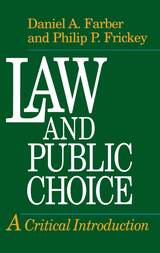 Law and Public Choice: A Critical Introduction
Philip P. Frickey and Daniel A. Farber
University of Chicago Press, 1991 In Law and Public Choice, Daniel Farber and Philip Frickey present a remarkably rich and accessible introduction to the driving principles of public choice. In this, the first systematic look at the implications of social choice for legal doctrine, Farber and Frickey carefully review both the empirical and theoretical literature about interest group influence and provide a nonmathematical introduction to formal models of legislative action. Ideal for course use, this volume offers a balanced and perceptive analysis and critique of an approach which, within limits, can illuminate the dynamics of government decision-making.
“Law and Public Choice is a most valuable contribution to the burgeoning literature. It
should be of great interest to lawyers, political scientists, and all others interested in issues at the intersection of government and law.”—Cass R. Sunstein, University of Chicago Law
School
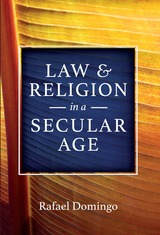 Law and Religion in a Secular Age
Rafael Domingo
Catholic University of America Press, 2023 Law and Religion in a Secular Age seeks to restore the connection between spirituality and justice, religion and law, theology and jurisprudence, and natural law and positive law by building a new bridge suitable for pluralistic societies in the secular age. The author argues for a multidimensional view of reality that includes legal, political, moral, and spiritual dimensions of human nature and society. Each of these dimensions of life needs to recognize the existence, influence, and function of the others, which act as a filter or check on the excesses of each other. This multidimensionality of reality clarifies why no legal theory can fully account for law from the legal dimension alone, just as no moral theory makes perfect sense of morality from the moral dimension—and, for that matter, nothing in physics can fully interpret the physical dimension of reality. The premises of a legal system cannot be fully explained by the legal dimension alone because the fundamental conditions and qualities of justice, freedom, and dignity touch all the dimensions of reality in which the human person acts, including the moral and the spiritual, not just the legal. Building on this multidimensional theory of reality, the author explores the core differences and the essential interconnections between law, morality, religion, and spirituality and some of the legal implications of these connections.
Rafael Domingo reminds readers of the vital role of religion in shaping the conceptual framework of Western legal systems, underscores the spirit of Christianity that inspired legal institutions, principles, and values, and recalls the contributions of specific Christian jurists as central figures for the development of justice in society.
Law and Religion in a Secular Age aims to be a valuable antidote against the dominant legal positivism that has cornered public morality, the defiant secularism that has marginalized religion, and any other legal doctrine that diminishes the spiritual dimension of law and justice.
 Law and Revolution
Harold J. Berman
Harvard University Press, 1985 The roots of modern Western legal institutions and concepts go back nine centuries to the Papal Revolution, when the Western church established its political and legal unity and its independence from emperors, kings, and feudal lords. Out of this upheaval came the Western idea of integrated legal systems consciously developed over generations and centuries. Harold J. Berman describes the main features of these systems of law, including the canon law of the church, the royal law of the major kingdoms, the urban law of the newly emerging cities, feudal law, manorial law, and mercantile law. In the coexistence and competition of these systems he finds an important source of the Western belief in the supremacy of law.
Written simply and dramatically, carrying a wealth of detail for the scholar but also a fascinating story for the layman, the book grapples with wide-ranging questions of our heritage and our future. One of its main themes is the interaction between the Western belief in legal evolution and the periodic outbreak of apocalyptic revolutionary upheavals.
Berman challenges conventional nationalist approaches to legal history, which have neglected the common foundations of all Western legal systems. He also questions conventional social theory, which has paid insufficient attention to the origin of modern Western legal systems and has therefore misjudged the nature of the crisis of the legal tradition in the twentieth century.
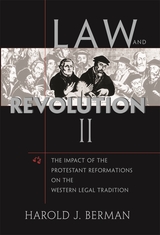 Law and Revolution
Harold J. Berman
Harvard University Press, 2004 Harold Berman’s masterwork narrates the interaction of evolution and revolution in the development of Western law. This new volume explores two successive transformations of the Western legal tradition under the impact of the sixteenth-century German Reformation and the seventeenth-century English Revolution, with particular emphasis on Lutheran and Calvinist influences. Berman examines the far-reaching consequences of these apocalyptic political and social upheavals on the systems of legal philosophy, legal science, criminal law, civil and economic law, and social law in Germany and England and throughout Europe as a whole.
Berman challenges both conventional approaches to legal history, which have neglected the religious foundations of Western legal systems, and standard social theory, which has paid insufficient attention to the communitarian dimensions of early modern economic law, including corporation law and social welfare.
Clearly written and cogently argued, this long-awaited, magisterial work is a major contribution to an understanding of the relationship of law to Western belief systems.
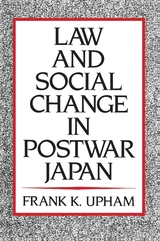 Law and Social Change in Postwar Japan
Frank K. Upham
Harvard University Press, 1987 Many people believe that conflict in the well-disciplined Japanese society is so rare that the Japanese legal system is of minor importance. Frank Upham shows conclusively that this view is mistaken and demonstrates that the law is extensively used, on the one hand, by aggrieved groups to articulate their troubles and mobilize political support and, on the other, by the government to channel and manage conflict after it has arisen.
This is the first Western book to take law seriously as an integral part of the dynamics of Japanese business and society, and to show how an informal legal system can work in a complex industrial democracy. Upham does this by focusing on four recent controversies with broad social implications: first, how Japan dealt with the world’s worst industrial pollution and eventually became a model for Western environmental reforms; second, how the police and courts have allowed one Japanese outcast group to use carefully orchestrated physical coercion to achieve wide-ranging affirmative action programs; third, how Japanese working women used the courts to force employers to eliminate many forms of discrimination and eventually convinced the government to pass an equal employment opportunity act; and, finally, how the Ministry of International Trade and Industry and various sectors of Japanese industry have used legal doctrine to cope with the dramatic changes in Japan’s economy over the last twenty-five years.
Readers interested in the interaction of law and society generally; those interested in contemporary Japanese sociology, politics, and anthropology; and American lawyers, businessmen, and government officials who want to understand how law works in Japan will all need this unusual new book.
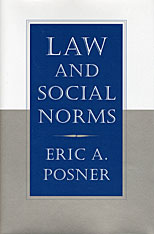 Law and Social Norms
Eric A. Posner
Harvard University Press, 2002 What is the role of law in a society in which order is maintained mostly through social norms, trust, and nonlegal sanctions? Eric Posner argues that social norms are sometimes desirable yet sometimes odious, and that the law is critical to enhancing good social norms and undermining bad ones. But he also argues that the proper regulation of social norms is a delicate and complex task, and that current understanding of social norms is inadequate for guiding judges and lawmakers. What is needed, and what this book offers, is a model of the relationship between law and social norms. The model shows that people's concern with establishing cooperative relationships leads them to engage in certain kinds of imitative behavior. The resulting behavioral patterns are called social norms.
Posner applies the model to several areas of law that involve the regulation of social norms, including laws governing gift-giving and nonprofit organizations; family law; criminal law; laws governing speech, voting, and discrimination; and contract law. Among the engaging questions posed are: Would the legalization of gay marriage harm traditional married couples? Is it beneficial to shame criminals? Why should the law reward those who make charitable contributions? Would people vote more if non-voters were penalized? The author approaches these questions using the tools of game theory, but his arguments are simply stated and make no technical demands on the reader.
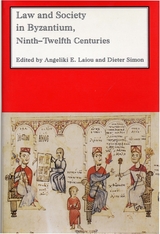 Law and Society in Byzantium, Ninth–Twelfth Centuries
Angeliki E. Laiou
Harvard University Press, 1994 The essays in this volume investigate themes related to the place of law in Byzantine ideology and society. Although the Byzantines had a formal legal system, deriving from Justinian’s codification, this does not solve the problem but rather poses important questions. Was this a society which was meant to be governed by law? For answers, one must look at the intent of the legislators (to address specific problems, or to order society according to an ideal pattern?); the attitudes toward the law; the relationship between law, religion, literature, and art. What were the spheres—political, economic, private—that the laws and the lawgivers sought to regulate? The concepts of law and justice are quite different from each other, and the relationship between them is investigated here.
Of importance also, in this medieval society, are the connections between law and religion. There is the problem of the provenance of the law—whether the Emperor or God himself is the source of law—and the broad implications of the answer. At another level, ecclesiastical law was very important for everyday life, and the question arises of how much knowledge people had of it and how profound was their knowledge. Both people’s perceptions and their practices were shaped by their views of human justice and divine justice: whether these coincided, and whether they were administered through the same means, for the intervention of saints or icons might be seen as an alternative to human justice. As for human justice, there are questions that involve both society’s view of it and the education, knowledge, and interests of those who administered it.
Such issues are present in all medieval societies; the case of Byzantium is of particular interest because of the interplay between formal law and the conceptualizations and practices—some quite divergent from the ostensible purpose of legislation—which affected the legislators, the practitioners, and all of society.
Law and the Balance of Power: The Automobile Manufacturers and their Dealers
Stewart Macaulay
Russell Sage Foundation, 1966 Stewart Macaulay teaches contracts at the University of Wisconsin Law School and is interested in the part the legal system plays in implementing, regulating, and hindering economic relationships, and how it does these things. This book is a descriptive analysis of organizational change that has resulted from automobile dealers' attempts to find a legal remedy for what they consider unfair practices of the manufacturers. It advances our understanding of the limitations and the positive functions of formal rules in the regulation of human conduct, and shows how informal procedures can develop as a result of pressure for changes in the formal rules.
 Law and the Company We Keep
Aviam Soifer
Harvard University Press, 1995 Whether we are black, gay, Republican, women, or deaf, our associations--whether voluntary or assigned--constitute crucial and inescapable elements of our identities. Both voluntary and involuntary groups have been important in American history--more important than is generally recognized. But these groups have never been adequately addressed by law, which has as its primary focus the relationship between the individual and the state. The company we keep, says the constitutional law scholar Aviam Soifer, is presumed to be each person's own business, and generally beyond notice of the law. But as America becomes a more varied country and issues arising out of multiculturalism threaten to divide us, it becomes essential, Soifer argues, to recognize rights under the First Amendment that will protect the crucial roles of groups and communities within the larger national community.
Legal doctrine and the outcomes reached in judicial proceedings will be more coherent if we acknowledge that groups qua groups have significant legal impact. The building blocks of any quest for justice must include the groups--social, political, professional, civil, interpretive, religious--from which we derive and apply ethical standards in search of a better life. The ability to step outside traditional doctrinal boxes that concentrate on relationships between individuals and government will help not only legal thinkers but every person to reason toward justice.
Using history and literature to explore the complex issues of individual and group rights, Law and the Company We Keep is the first sustained account of the presence and importance of groups in our legal culture. It confronts central questions about the multiple roles of culture and symbol in defining our groups, and through them, our lives.
Law and the Conditions of Freedom in the Nineteenth-Century United States
James Willard Hurst
University of Wisconsin Press, 1964 In these essays J. Willard Hurst shows the correlation between the conception of individual freedom and the application of law in the nineteenth-century United States—how individuals sought to use law to increase both their personal freedom and their opportunities for personal growth. These essays in jurisprudence and legal history are also a contribution to the study of social and intellectual history in the United States, to political science, and to economics as it concerns the role of public policy in our economy. The nonlawyer will find in them demonstration of how "technicalities" express deep issues of social values.
Law and the Conditions of Freedom in the Nineteenth-Century United States
J. Willard Hurst
University of Wisconsin Press, 1956 In these essays J. Willard Hurst shows the correlation between the conception of individual freedom and the application of law in the nineteenth-century United States—how individuals sought to use law to increase both their personal freedom and their opportunities for personal growth. These essays in jurisprudence and legal history are also a contribution to the study of social and intellectual history in the United States, to political science, and to economics as it concerns the role of public policy in our economy. The nonlawyer will find in them demonstration of how "technicalities" express deep issues of social values.
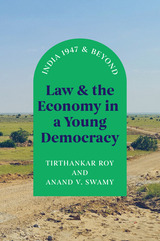 Law and the Economy in a Young Democracy: India 1947 and Beyond
Tirthankar Roy and Anand V. Swamy
University of Chicago Press, 2022 An essential history of India's economic growth since 1947, including the legal reforms that have shaped the country in the shadow of colonial rule.
Economists have long lamented how the inefficiency of India's legal system undermines the country’s economic capacity. How has this come to be? The prevailing explanation is that the postcolonial legal system is understaffed and under-resourced, making adjudication and contract enforcement slow and costly.
Taking this as given, Law and the Economy in a Young Democracy examines the contents and historical antecedents of these laws, including how they have stifled economic development. Economists Roy and Swamy argue that legal evolution in independent India has been shaped by three factors: the desire to reduce inequality and poverty; the suspicion that market activity, both domestic and international, can be detrimental to these goals; and the strengthening of Indian democracy over time, giving voice to a growing fraction of society, including the poor.
Weaving the story of India's heralded economic transformation with its social and political history, Roy and Swamy show how inadequate legal infrastructure has been a key impediment to the country's economic growth during the last century. A stirring and authoritative history of a nation rife with contradictions, Law and the Economy in a Young Democracy is essential reading for anyone seeking to understand India's current crossroads—and the factors that may keep its dreams unrealized.
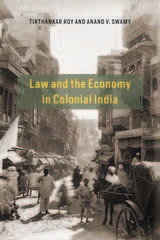 Law and the Economy in Colonial India
Tirthankar Roy and Anand V. Swamy
University of Chicago Press, 2021 Since the economic reforms of the 1990s, India’s economy has grown rapidly. To sustain growth and foreign investment over the long run requires a well-developed legal infrastructure for conducting business, including cheap and reliable contract enforcement and secure property rights. But it’s widely acknowledged that India’s legal infrastructure is in urgent need of reform, plagued by problems, including slow enforcement of contracts and land laws that differ from state to state. How has this situation arisen, and what can boost business confidence and encourage long-run economic growth?
Tirthankar Roy and Anand V. Swamy trace the beginnings of the current Indian legal system to the years of British colonial rule. They show how India inherited an elaborate legal system from the British colonial administration, which incorporated elements from both British Common Law and indigenous institutions. In the case of property law, especially as it applied to agricultural land, indigenous laws and local political expediency were more influential in law-making than concepts borrowed from European legal theory. Conversely, with commercial law, there was considerable borrowing from Europe. In all cases, the British struggled with limited capacity to enforce their laws and an insufficient knowledge of the enormous diversity and differentiation within Indian society. A disorderly body of laws, not conducive to production and trade, evolved over time. Roy and Swamy’s careful analysis not only sheds new light on the development of legal institutions in India, but also offers insights for India and other emerging countries through a look at what fosters the types of institutions that are key to economic growth.
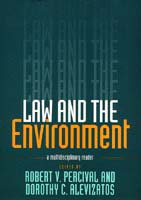 Law and the Environment: A Multidisciplinary Reader
Robert Percival
Temple University Press, 1997 "One of the most remarkable developments of the twentieth century has been the worldwide growth of public concern for the environment. Efforts to translate that concern into effective public policy have posed formidable challenges for the legal system. Even as our understanding of environmental problems has improved, we have become acutely aware of the complexity and uncertainty that bedevil efforts to trace the effects of human activities on the environment." --from the Preface
Law and the Environment: A Multidisciplinary Reader brings together for the first time some of the most important original work on environmental policy by scientists, ecologists, philosophers, historians, economists, and legal scholars. Each of the book's four parts provides a different focus on the nature and scope of environmental problems and attempts to use public policy to address these concerns. Part I examines how ecology, economics, and ethics analyze environmental problems and why they support collective action to respond to them. Part II examines the history and present state of environmental law, from early attempts to engage the government to current debate over the effectiveness of environmental policy. Part III explores the process by which environmental law gets translated into regulatory policy. Part IV considers the future of environmental law at a time when international environmental concerns have become a major force in global diplomacy and international trade agreements.
In drawing together a wide variety of perspectives on these issues, Robert V. Percival and Dorothy C. Alevizatos offer a comprehensive examination of how society has responded to the difficult challenges posed by environmental problems. The selections provide a rich introduction to the complexities of environmental policy disputes.
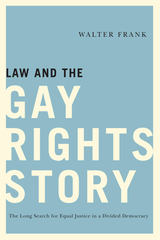 Law and the Gay Rights Story: The Long Search for Equal Justice in a Divided Democracy
Frank, Walter
Rutgers University Press, 2014 For much of the 20th century, American gays and lesbians lived in fear that public exposure of their sexualities might cause them to be fired, blackmailed, or even arrested. Today, they are enjoying an unprecedented number of legal rights and protections. Clearly, the tides have shifted for gays and lesbians, but what caused this enormous sea change?
In his gripping new book, Walter Frank offers an in-depth look at the court cases that were pivotal in establishing gay rights. But he also tells the story of those individuals who were willing to make waves by fighting for those rights, taking enormous personal risks at a time when the tide of public opinion was against them. Frank’s accessible style brings complex legal issues down to earth but, as a former litigator, never loses sight of the law’s human dimension and the context of the events occurring outside the courtroom.
Chronicling the past half-century of gay and lesbian history, Law and the Gay Rights Story offers a unique perspective on familiar events like the Stonewall Riots, the AIDS crisis, and the repeal of “Don’t Ask, Don’t Tell.” Frank pays special attention to the constitutional issues surrounding same-sex marriage and closely analyzes the two recent Supreme Court cases addressing the issue. While a strong advocate for gay rights, Frank also examines critiques of the movement, including some coming from the gay community itself. Comprehensive in coverage, the book explains the legal and constitutional issues involved in each of the major goals of the gay rights movement: a safe and healthy school environment, workplace equality, an end to anti-gay violence, relationship recognition, and full integration into all the institutions of the larger society, including marriage and military service. Drawing from extensive archival research and from decades of experience as a practicing litigator, Frank not only provides a vivid history, but also shows where the battle for gay rights might go from here.
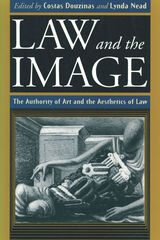 Law and the Image: The Authority of Art and the Aesthetics of Law
Edited by Costas Douzinas and Lynda Nead
University of Chicago Press, 1999 This highly original collection brings together some of the most important minds in both contemporary art history and theory, and law and legal history. The result is a fascinating discussion of the diverse relationships between law and the artistic image.
The essays draw on the critical procedures of law, art history, and cultural studies in order to create a new interdisciplinary field of visual culture and law. In exploring the hidden interdependence of law and art, the writings refute the generally held conception that law is fixed and rational while the judgment of art is autonomous and ambiguous. Among the topics addressed are the history of the relationship between art and law, the ways in which the visual is made subject to the force of the law, and the complex relations between law, the image, and identity.
With its groundbreaking ideas from a variety of intellectual traditions and disciplines, this book puts law and art into a new and exciting conversation that will introduce a new field of study and spark international debate.
Contributors are: Georges Didi-Huberman, Costas Douzinas, Hal Foster, Peter Goodrich, Piyel Haldar, Martin Jay, Mandy Merck, Lynda Nead, Jonathan Ribner, Katherine Fischer Taylor.
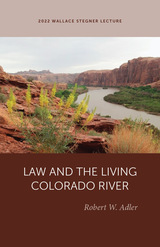 Law and the Living Colorado River
Robert W. Adler
University of Utah Press, 2023 Law and the Living Colorado River asserts that the so-called Law of the River—the vast assemblage of interstate compacts, international treaties, federal and state statutes, regulations, contracts, and other legal documents governing use and management of the Colorado River—ignores the needs of the river as a nested system of aquatic and aquatic-dependent ecosystems. Although society now recognizes and appreciates the natural values of the Colorado River, the Law of the River remains fixed in service of human economies like irrigation and hydropower. Robert W. Adler contends that the law must respond to changing values that prioritize natural systems alongside human ones. He proposes acknowledging the legal rights of the river itself, following the recent movement to recognize rights of nature in other ecosystems around the world. Recognizing that U.S. law has significant barriers to that proposal, however, Adler borrows from aspects of international water law to propose as a shorter-term strategy amendments to the Colorado River Compact that would enhance protection of the river’s environmental needs and values.
Adler delivered this lecture on March 17, 2022, at the 27th annual symposium of the Wallace Stegner Center for Land, Resources and the Environment, jointly sponsored by the Wallace Stegner Center and the Water & Tribes Initiative | Colorado River Basin.
 Law and the Modern Mind: Consciousness and Responsibility in American Legal Culture
Susanna L. Blumenthal
Harvard University Press, 2016 In postrevolutionary America, the autonomous individual was both the linchpin of a young nation and a threat to the founders’ vision of ordered liberty. Conceiving of self-government as a psychological as well as a political project, jurists built a republic of laws upon the Enlightenment science of the mind with the aim of producing a responsible citizenry. Susanna Blumenthal probes the assumptions and consequences of this undertaking, revealing how ideas about consciousness, agency, and accountability have shaped American jurisprudence.
Focusing on everyday adjudication, Blumenthal shows that mental soundness was routinely disputed in civil as well as criminal cases. Litigants presented conflicting religious, philosophical, and medical understandings of the self, intensifying fears of a populace maddened by too much liberty. Judges struggled to reconcile common sense notions of rationality with novel scientific concepts that suggested deviant behavior might result from disease rather than conscious choice. Determining the threshold of competence was especially vexing in litigation among family members that raised profound questions about the interconnections between love and consent. This body of law coalesced into a jurisprudence of insanity, which also illuminates the position of those to whom the insane were compared, particularly children, married women, and slaves. Over time, the liberties of the eccentric expanded as jurists came to recognize the diversity of beliefs held by otherwise reasonable persons.
In calling attention to the problematic relationship between consciousness and liability, Law and the Modern Mind casts new light on the meanings of freedom in the formative era of American law.
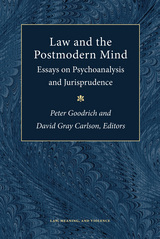 Law and the Postmodern Mind: Essays on Psychoanalysis and Jurisprudence
Peter Goodrich and David Gray Carlson, Editors
University of Michigan Press, 1998 David Gray Carlson and Peter Goodrich argue that the postmodern legal mind can be characterized as having shifted the focus of legal analysis away from the modernist understanding of law as a system that is unitary and separate from other aspects of culture and society. In exploring the various "other dimensions" of law, scholars have developed alternative species of legal analysis and recognized the existence of different forms of law. Carlson and Goodrich assert that the postmodern legal mind introduced a series of "minor jurisprudences" or partial forms of legal knowledge, which both compete with and subvert the modernist conception of a unitary system of law. In doing so scholars from a variety of disciplines pursue the implications of applying the insights of their disciplines to law. Carlson and Goodrich have assembled in this volume essays from some of our leading thinkers that address what is arguably one of the most fundamental of interdisciplinary encounters, that of psychoanalysis and law.
While psychoanalytic interpretations of law are by no means a novelty within common law jurisprudence, the extent and possibilities of the terrain opened up by psychoanalysis have yet to be extensively addressed. The intentional subject and "reasonable man" of law are disassembled in psychoanalysis to reveal a chaotic and irrational libidinal subject, a sexual being, a body and its drives. The focus of the present collection of essays is upon desire as an inner law, upon love as an interior idiom of legality, and represents a signficant and at times surprising development of the psychoanalytic analysis of legality.
These essays should appeal to scholars in law and in psychology.
The contributors are Drucilla Cornell, Jacques Derrida, Peter Goodrich, Pierre Legendre, Alain Pottage, Michel Rosenfeld, Renata Salecl, Jeanne L. Schroeder, Anton Schutz, Henry Staten, and Slavoj Zizek.
David Gray Carlson is Professor of Law, Benjamin Cardozo School of Law, Yeshiva University. Peter Goodrich is Professor of Law, University of London and University of California, Los Angeles.
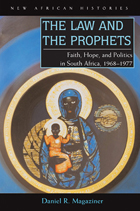 The Law and the Prophets: Black Consciousness in South Africa, 1968–1977
Daniel Magaziner
Ohio University Press, 2010 “No nation can win a battle without faith,” Steve Biko wrote, and as Daniel R. Magaziner demonstrates in The Law and the Prophets, the combination of ideological and theological exploration proved a potent force. The 1970s are a decade virtually lost to South African historiography. This span of years bridged the banning and exile of the country’s best-known antiapartheid leaders in the early 1960s and the furious protests that erupted after the Soweto uprisings of June 16, 1976. Scholars thus know that something happened—yet they have only recently begun to explore how and why. The Law and the Prophets is an intellectual history of the resistance movement between 1968 and 1977; it follows the formation, early trials, and ultimate dissolution of the Black Consciousness movement. It differs from previous antiapartheid historiography, however, in that it focuses more on ideas than on people and organizations. Its singular contribution is an exploration of the theological turn that South African politics took during this time. Magaziner argues that only by understanding how ideas about race, faith, and selfhood developed and were transformed in this period might we begin to understand the dramatic changes that took place.
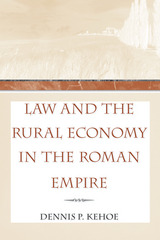 Law and the Rural Economy in the Roman Empire
Dennis P. Kehoe
University of Michigan Press, 2010 The economy of the Roman Empire was predominantly agrarian: Roman landowners, agricultural laborers, and small tenant farmers were highly dependent upon one another for assuring stability. By examining the property rights established by the Roman government, in particular the laws concerning land tenure and the contractual relationships between wealthy landowners and the tenant farmers to whom they leased their land, Dennis P. Kehoe is able to demonstrate how the state fostered economic development and who benefited the most. In this bold application of economic theory, Kehoe explores the relationship between Roman private law and the development of the Roman economy during a crucial period of the Roman Empire, from the second to the fourth century C.E. Kehoe is able to use the laws concerning land tenure, and the Roman government's enforcement of those laws, as a window through which to develop a more comprehensive view of the Roman economy. With its innovative application of the methodologies of law and economics and the New Institutional Economics Law and the Rural Economy in the Roman Empire is a groundbreaking addition to the study of the Roman economy. Dennis P. Kehoe is Professor of Classical Studies at Tulane University. He is the author of several books, including Investment, Profit, and Tenancy: The Jurists and the Roman Agrarian Economy(University of Michigan Press, 1997). "Kehoe brings his deep expertise in Roman land tenure systems and his broad knowledge of the methodologies of New Institutional Economics to bear on questions of fundamental importance regarding the relationship of Roman law and society. Was governmental policy on agriculture designed to benefit large landowners or small farmers? What impact did it have on the rural economy? The fascinating answers Kehoe provides in this pathbreaking work should occasion a major reassessment of such problems by social and legal historians."
---Thomas McGinn, Department of Classical Studies at Vanderbilt University, and author of The Economy of Prostitution in the Roman World: A Study of Social History and the Brothel and Prostitution, Sexuality, and the Law in Ancient Rome "A ground-breaking study using the principles of New Institutional Economics to analyze the impact of legal policy in balancing the interests of Roman tenant-farmers and landowners in the 2-4 centuries C.E. Kehoe's book will be essential reading for historians of the Roman Empire, demonstrating how the government overcame challenges and contradictions as it sought to regulate this enormous sector of the economy."
---Susan D. Martin, Department of Classics, University of Tennessee "In Law and the Rural Economy, Kehoe brings to life the workings of the ancient economy and the Roman legal system. By analyzing interactions between the imperial government, landlords, and tenant farmers in provinces across the Empire, Kehoe opens insights into imperial economic policy. He handles a variety of challenging sources with mastery and wit, and his knowledge of scholarship is extensive and thorough, covering ancient history, textual problems in the sources, legal history and, perhaps most impressively, the modern fields of economic theory and 'law and economics.' Kehoe's innovative and sophisticated methodology sets his work apart. The book will make an important contribution to our understanding of access to the law and the effectiveness of the legal system, important topics for scholars of law, ancient and modern."
---Cynthia J. Bannon, Department of Classical Studies, Indiana University
|
|
